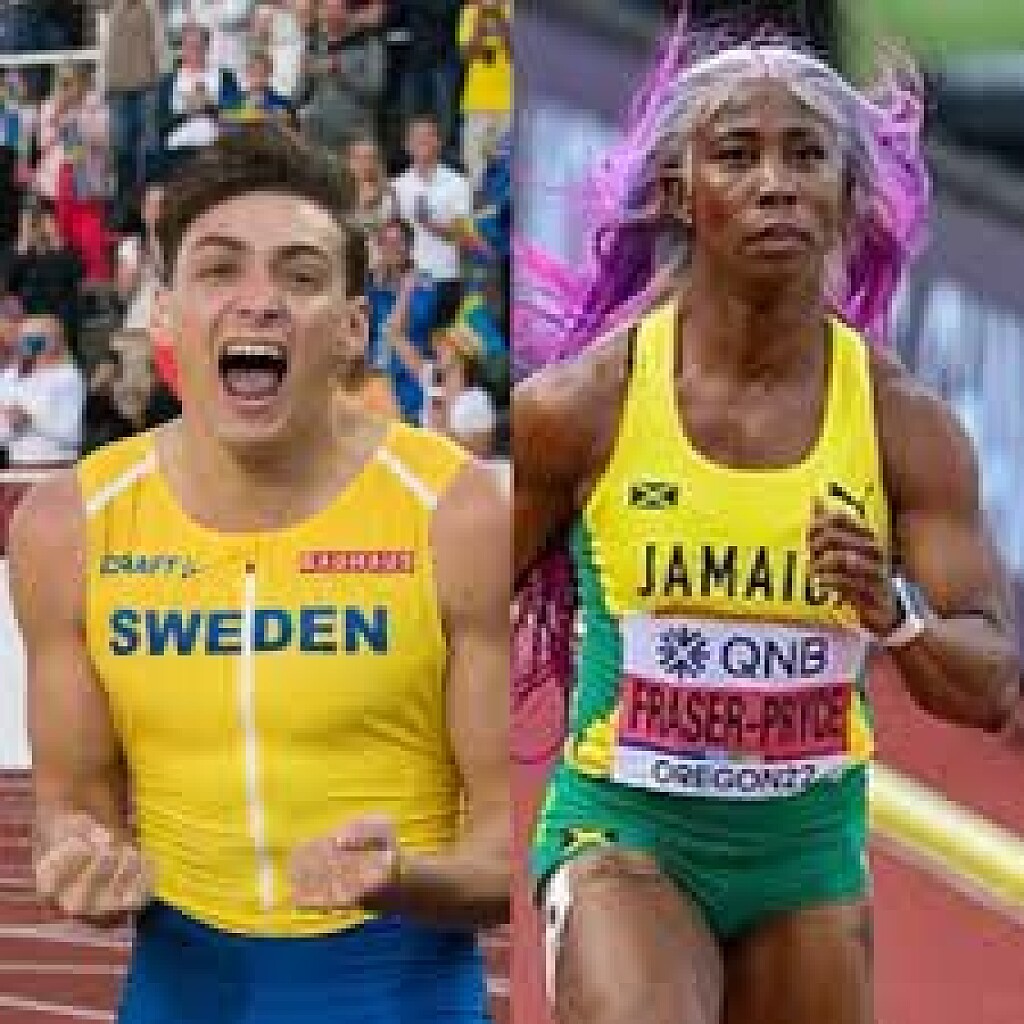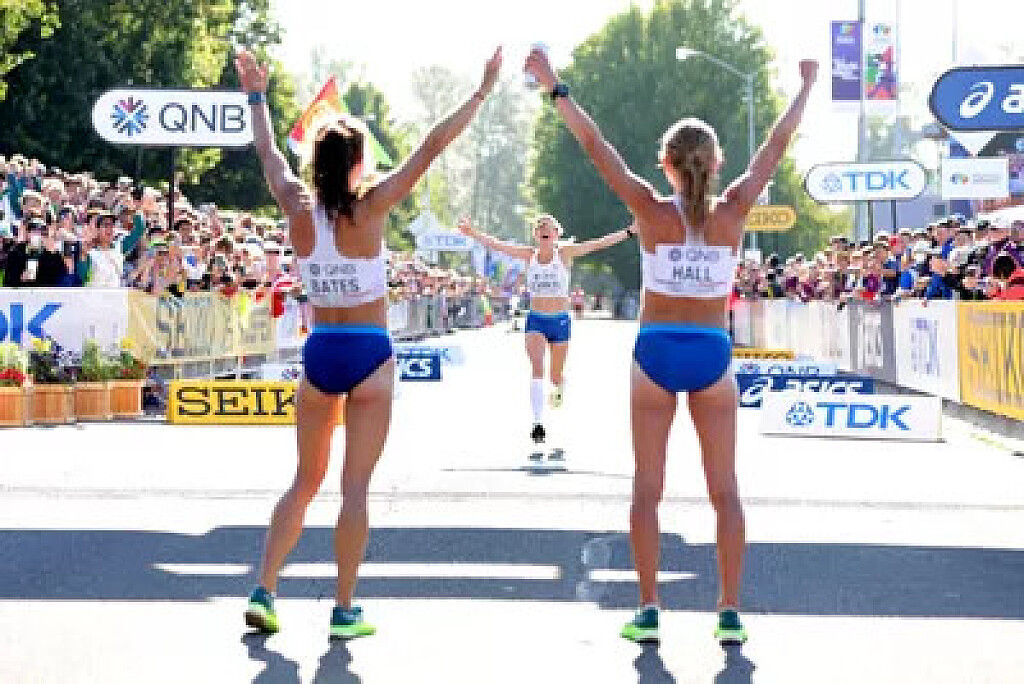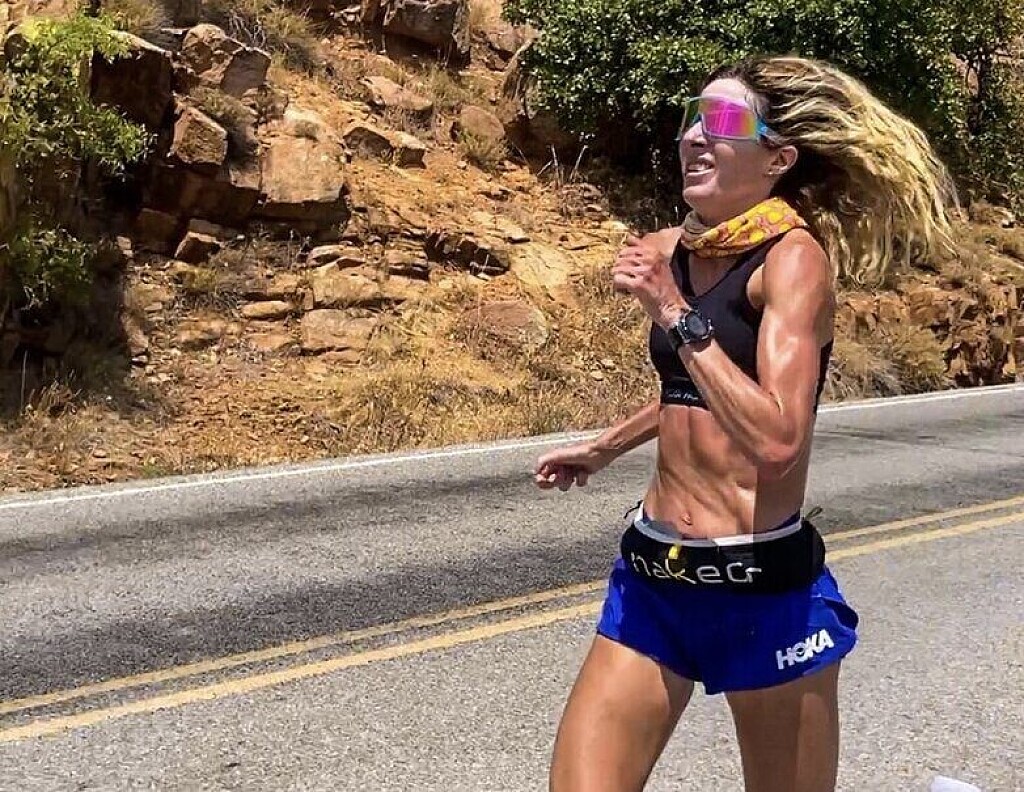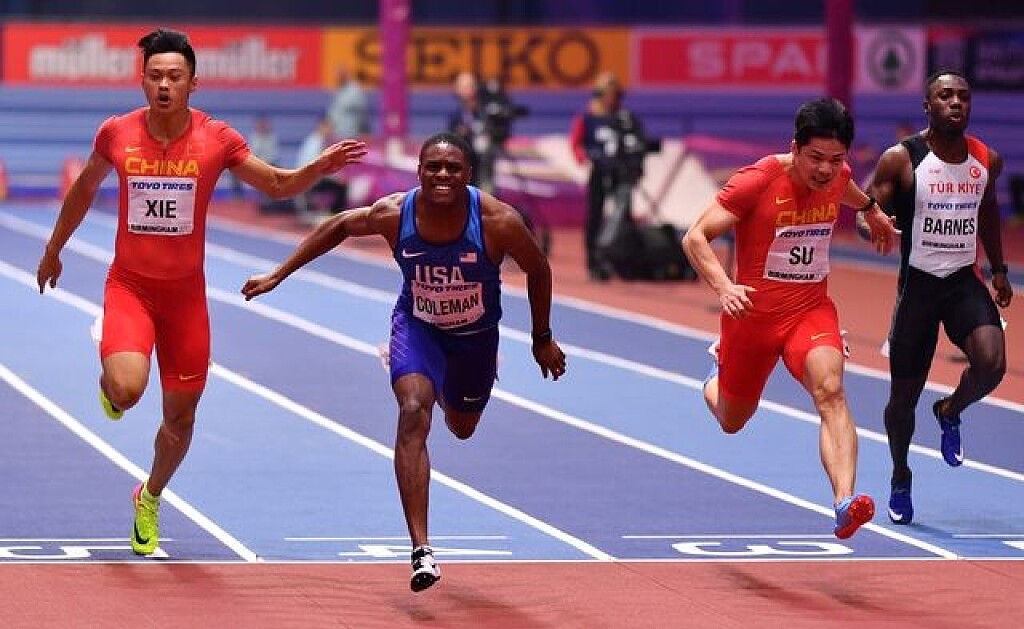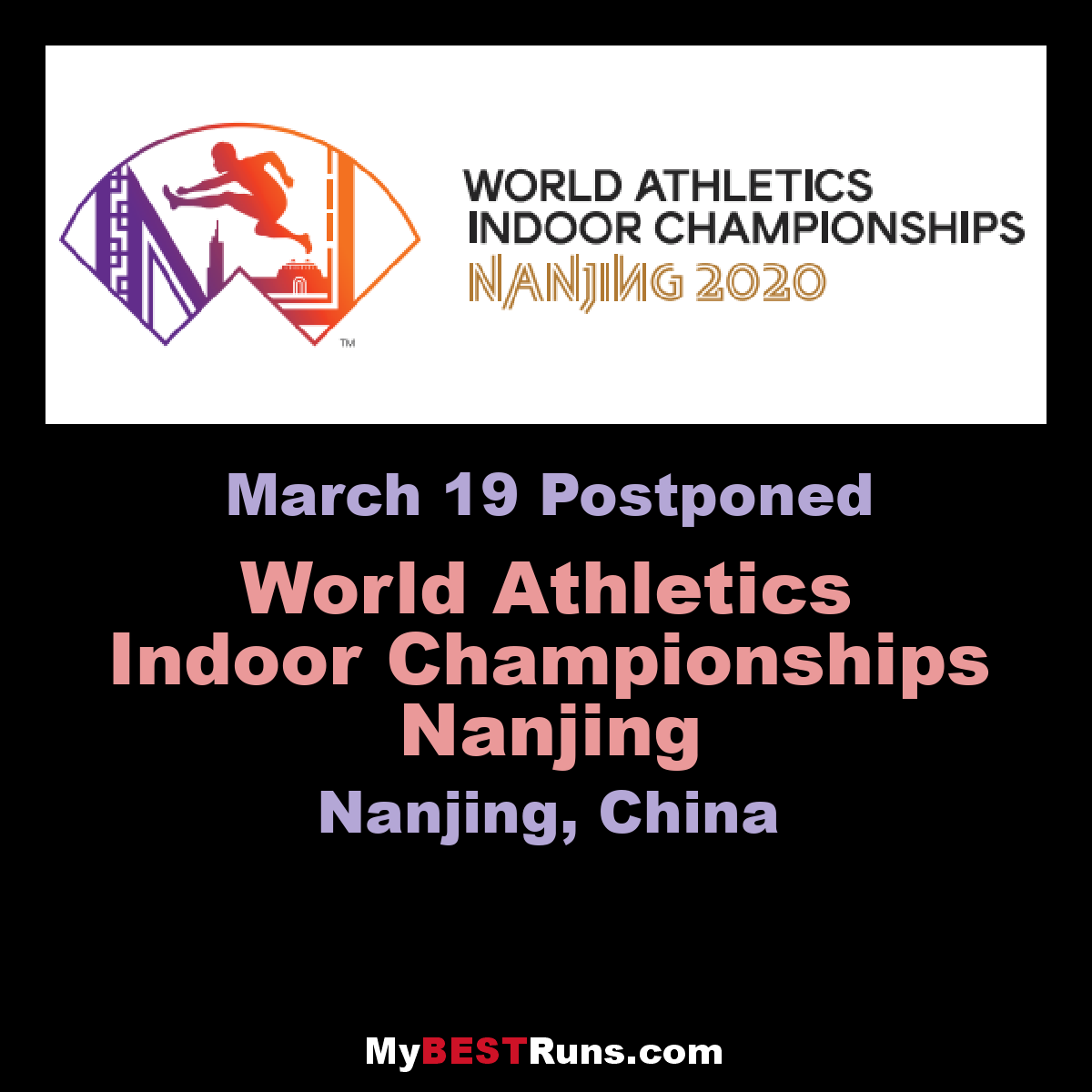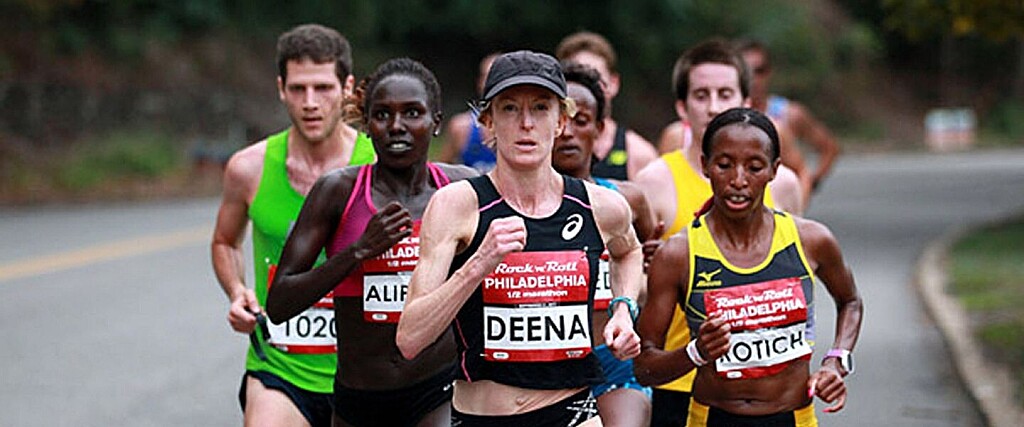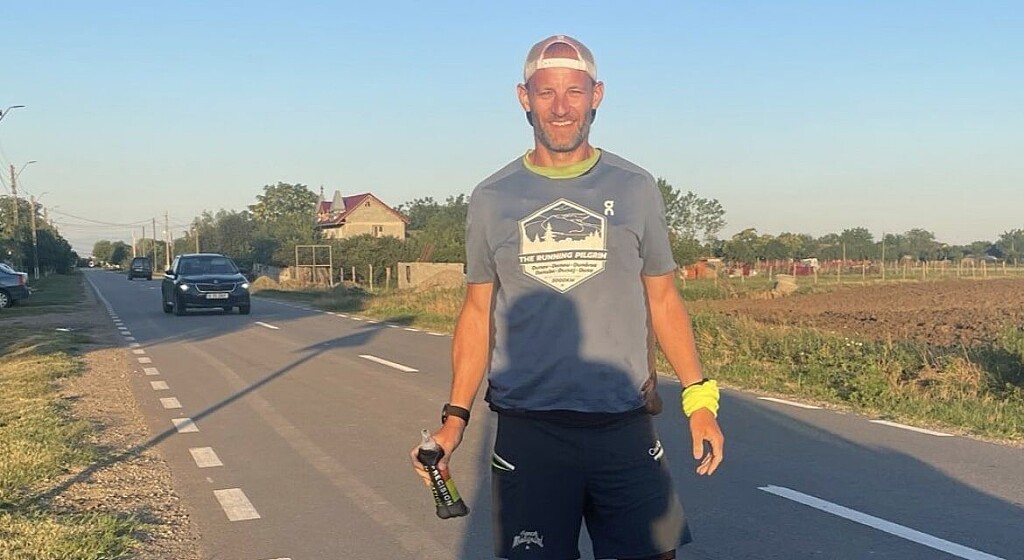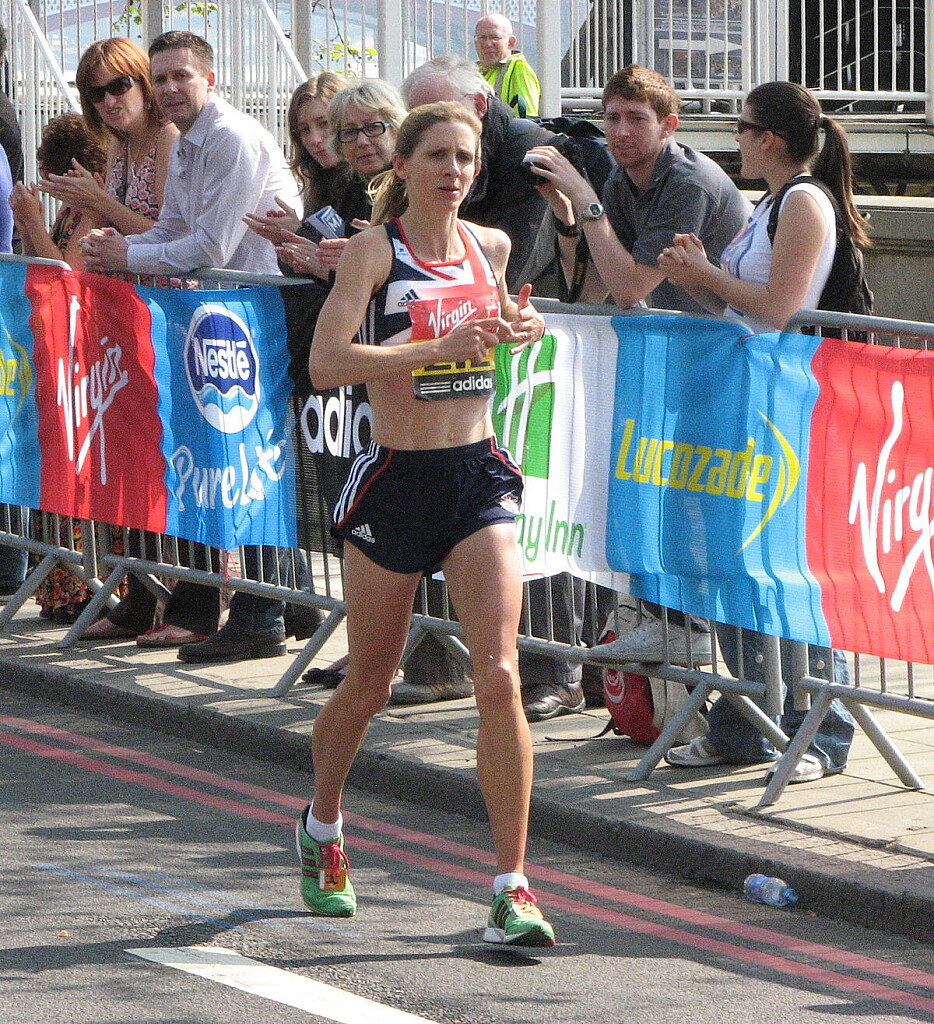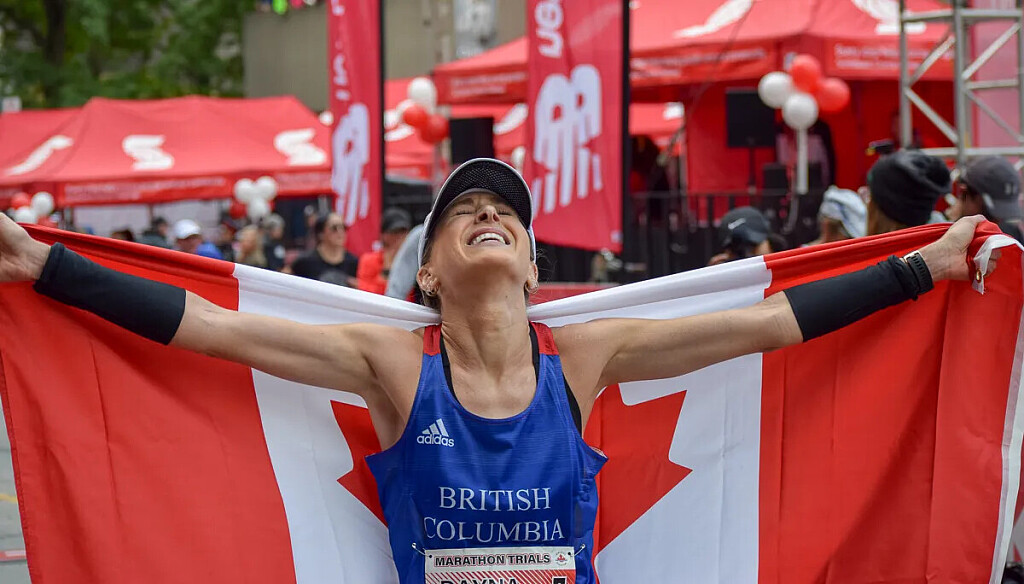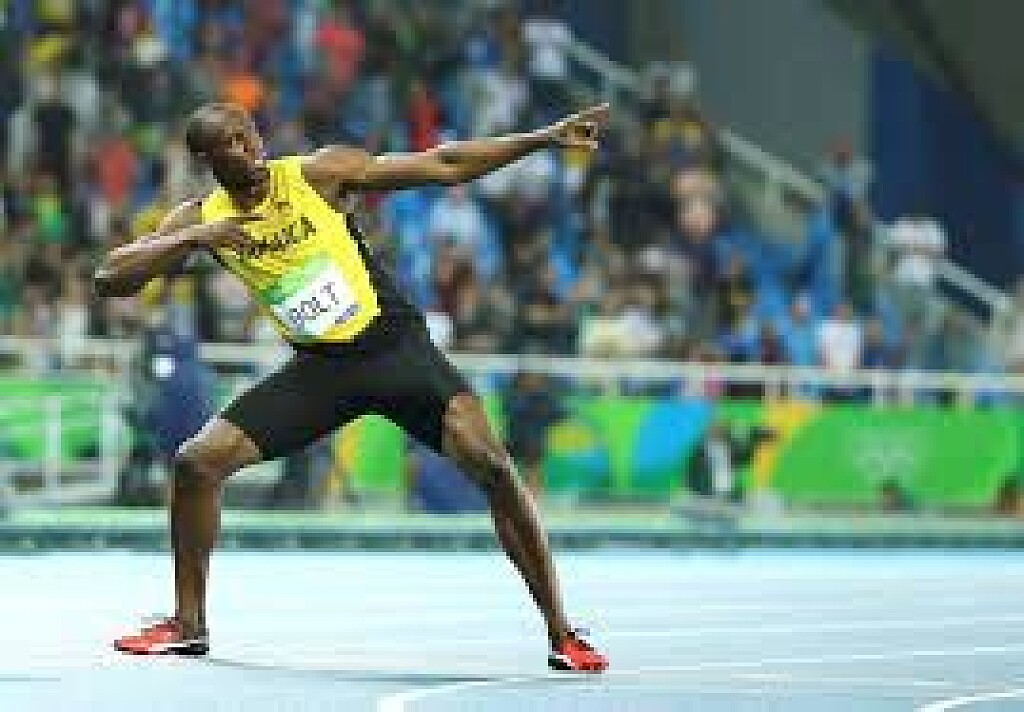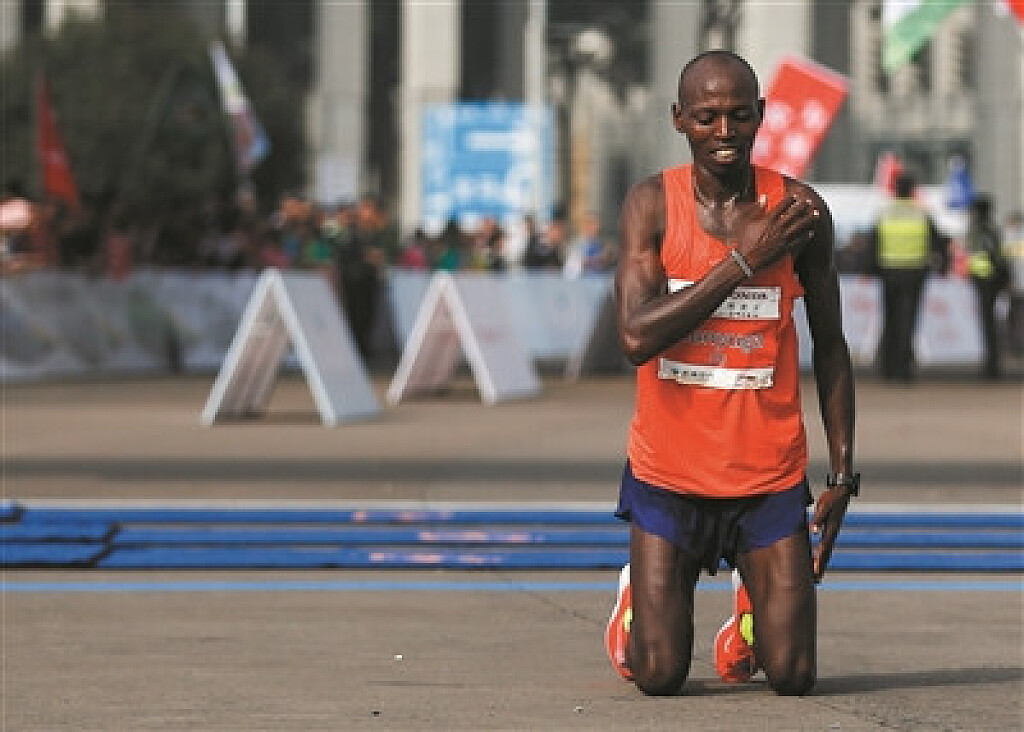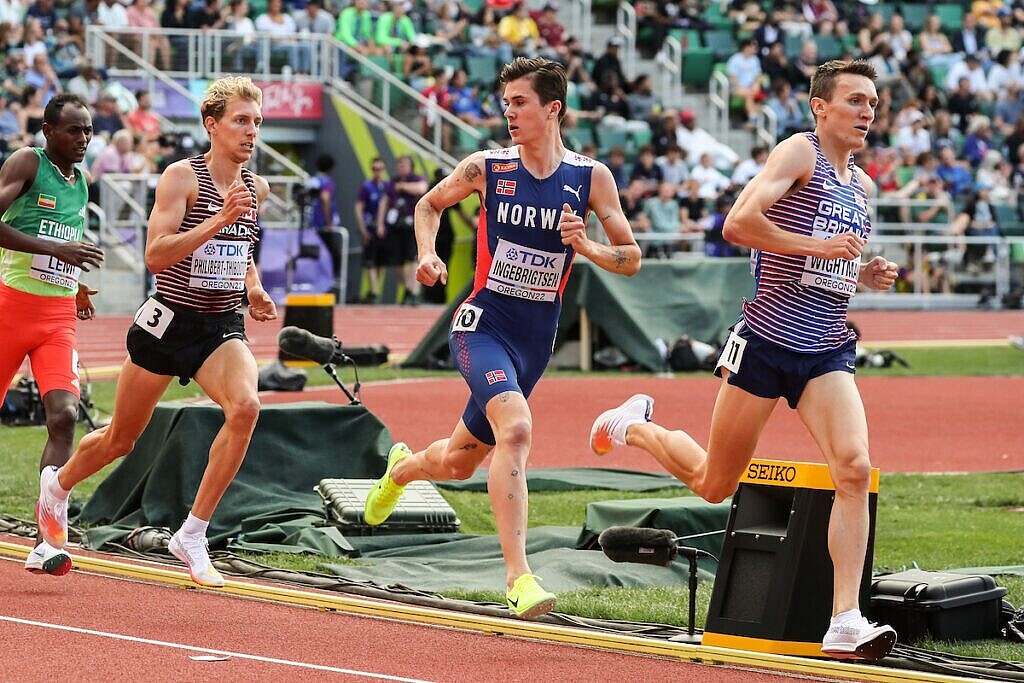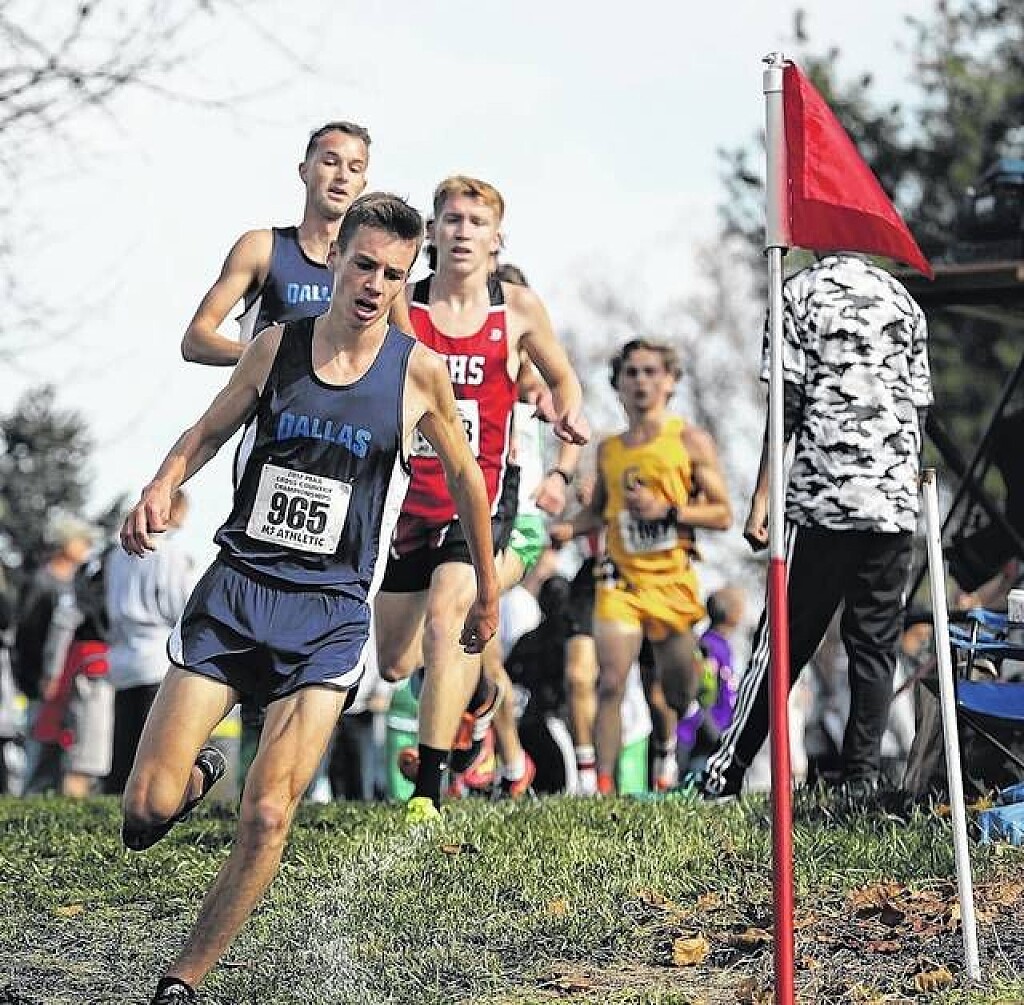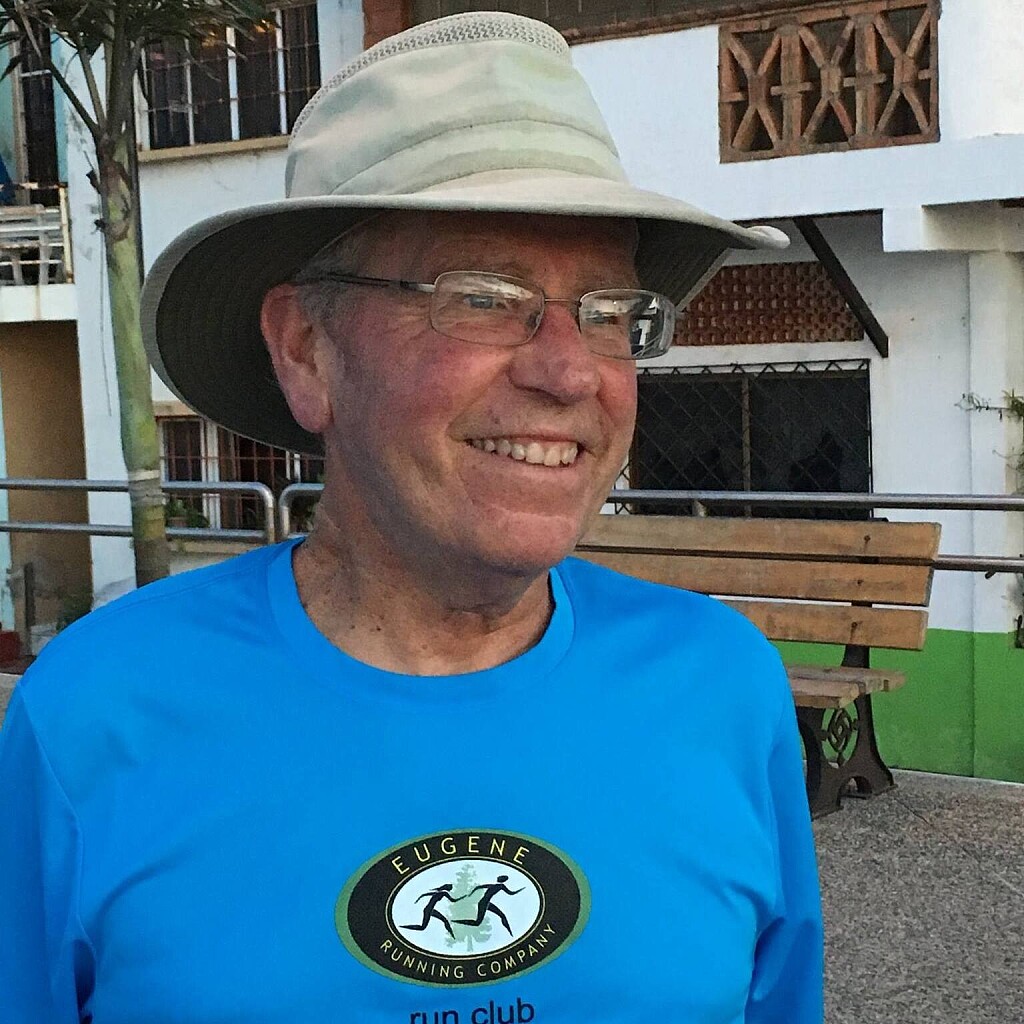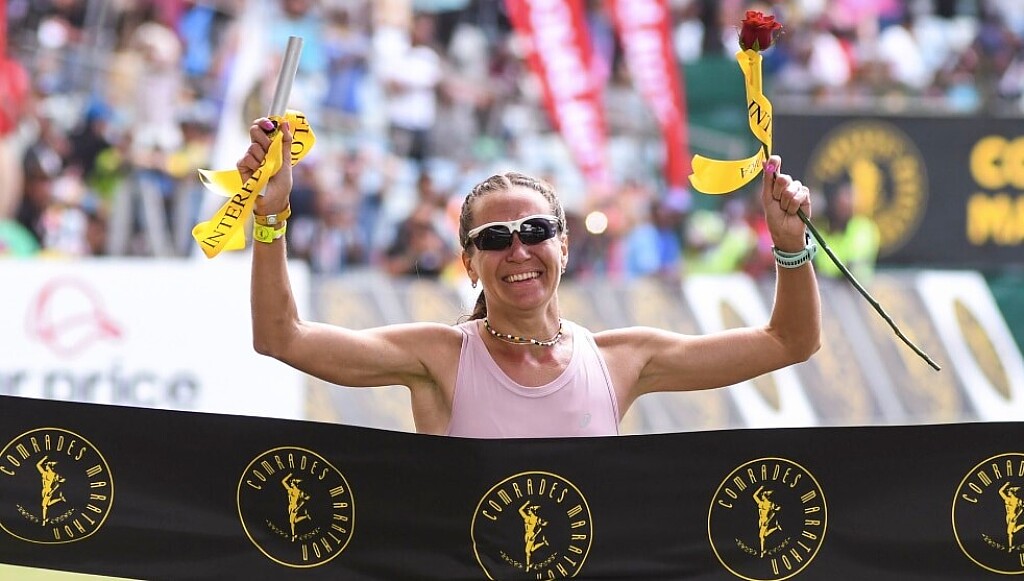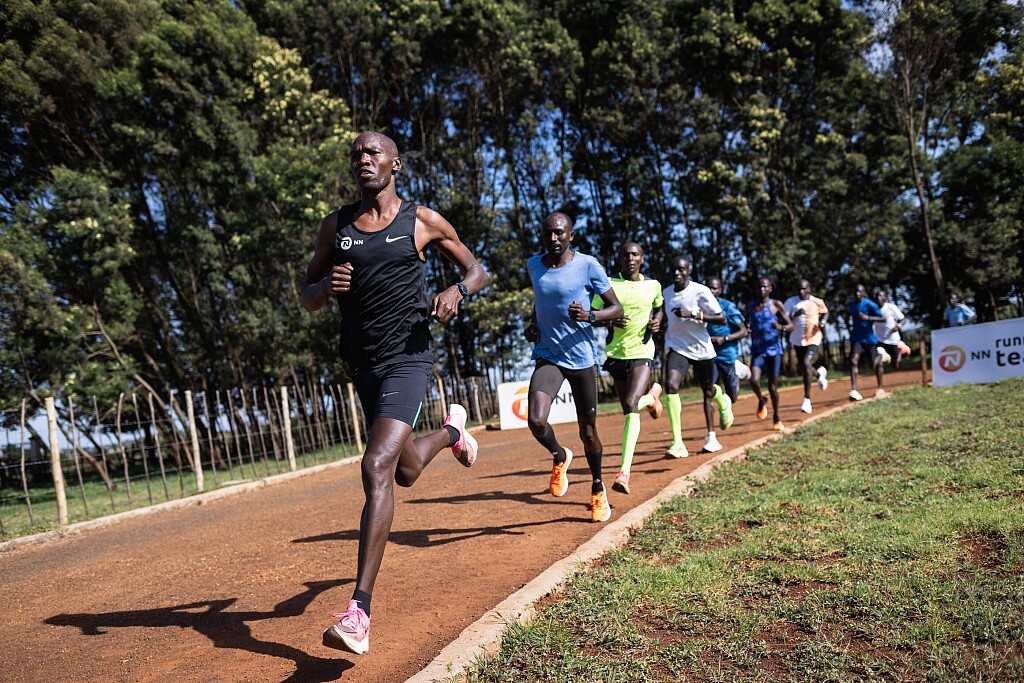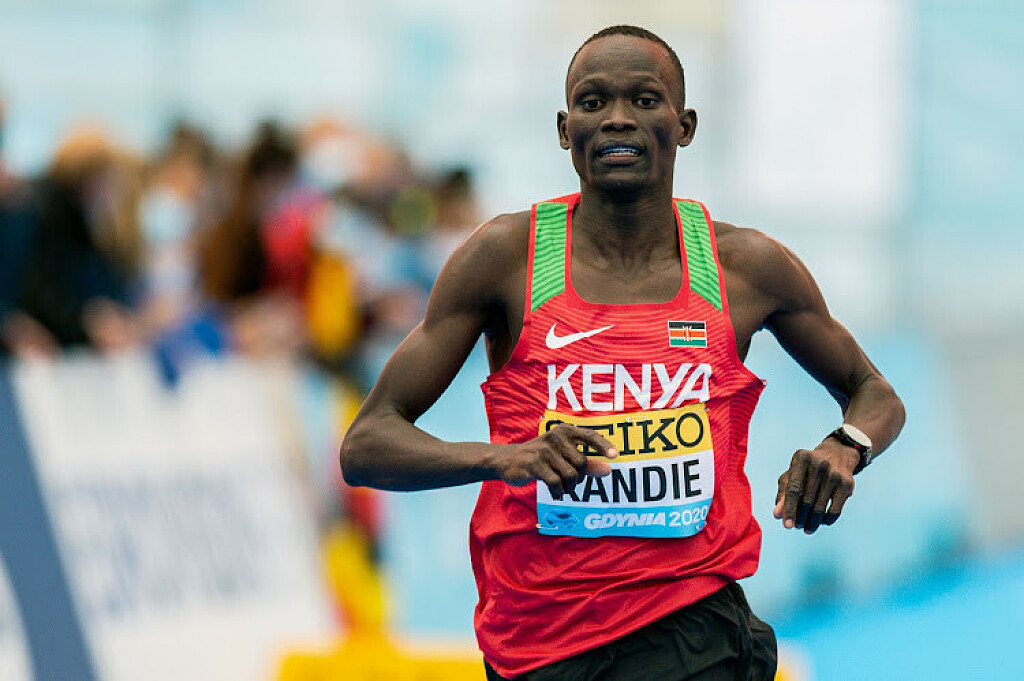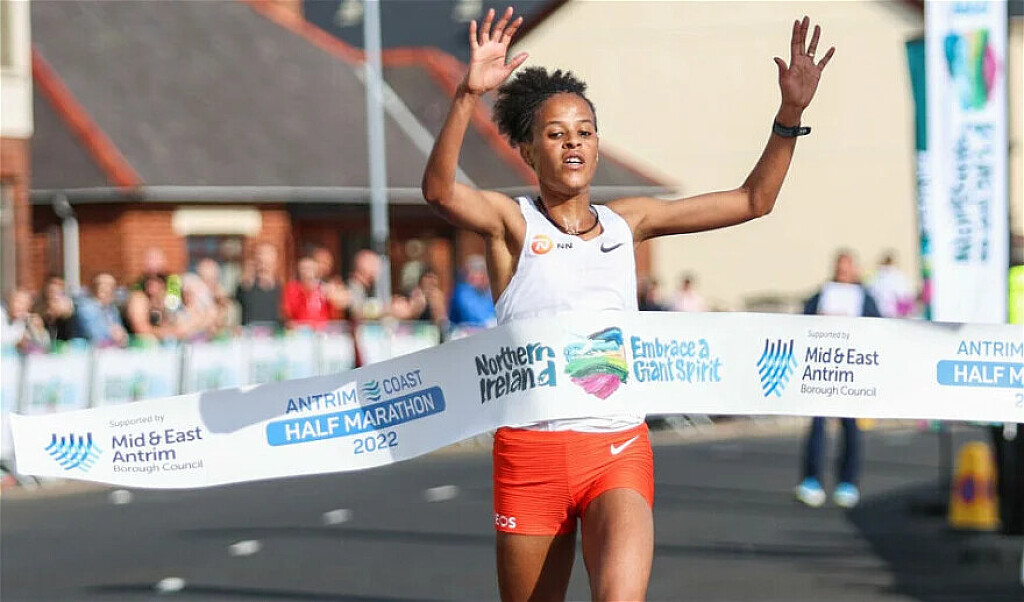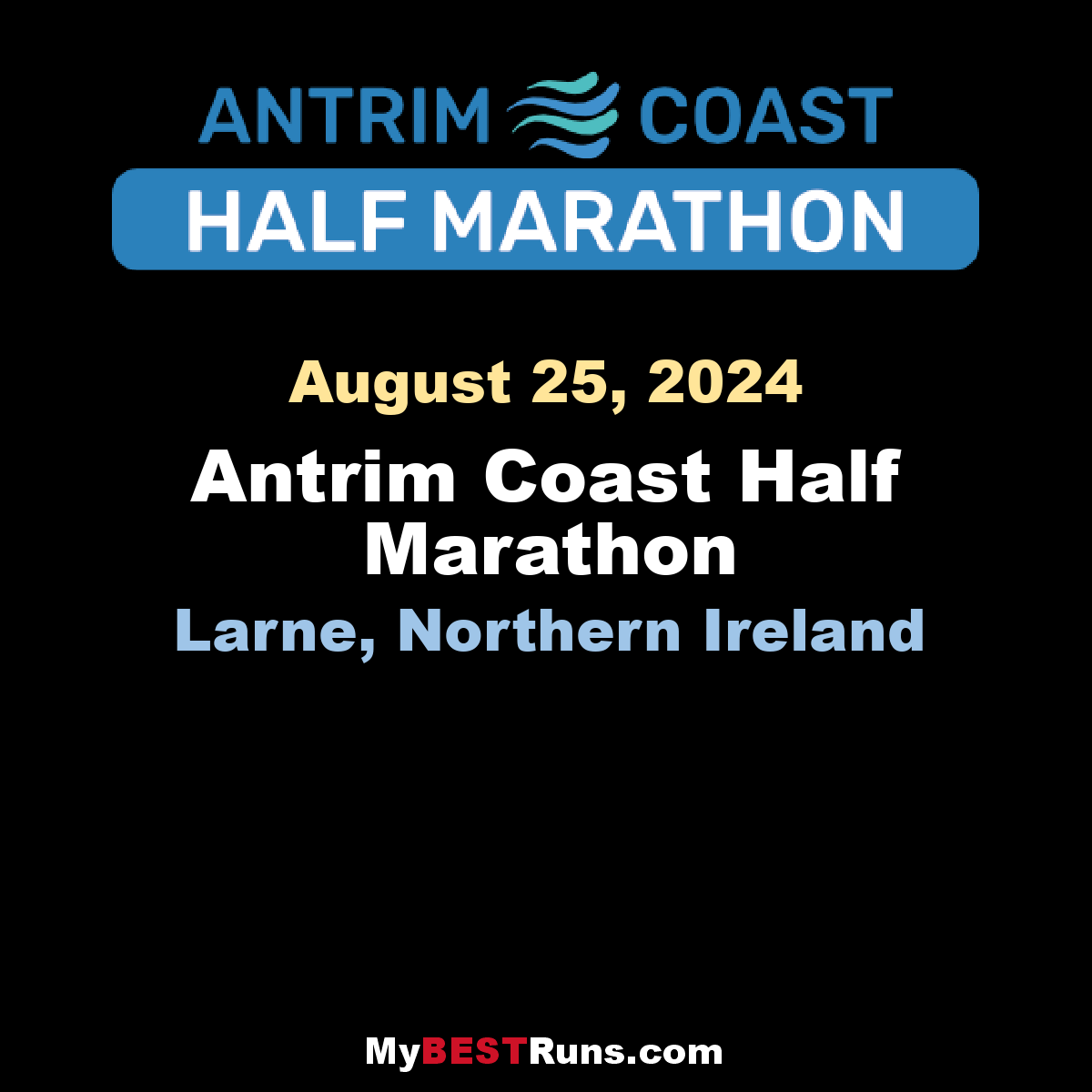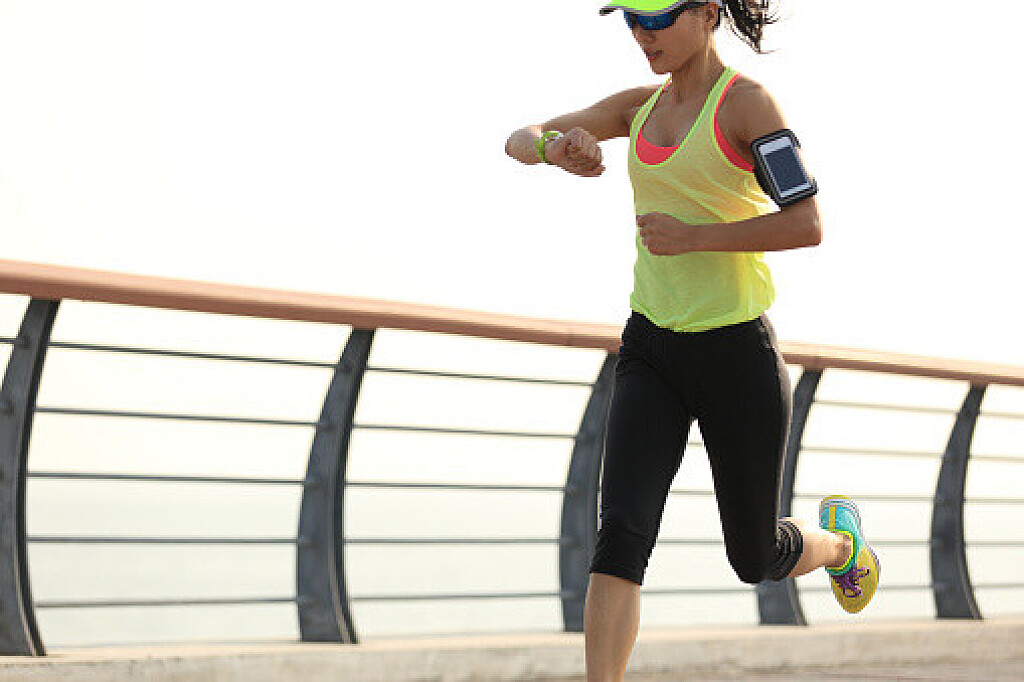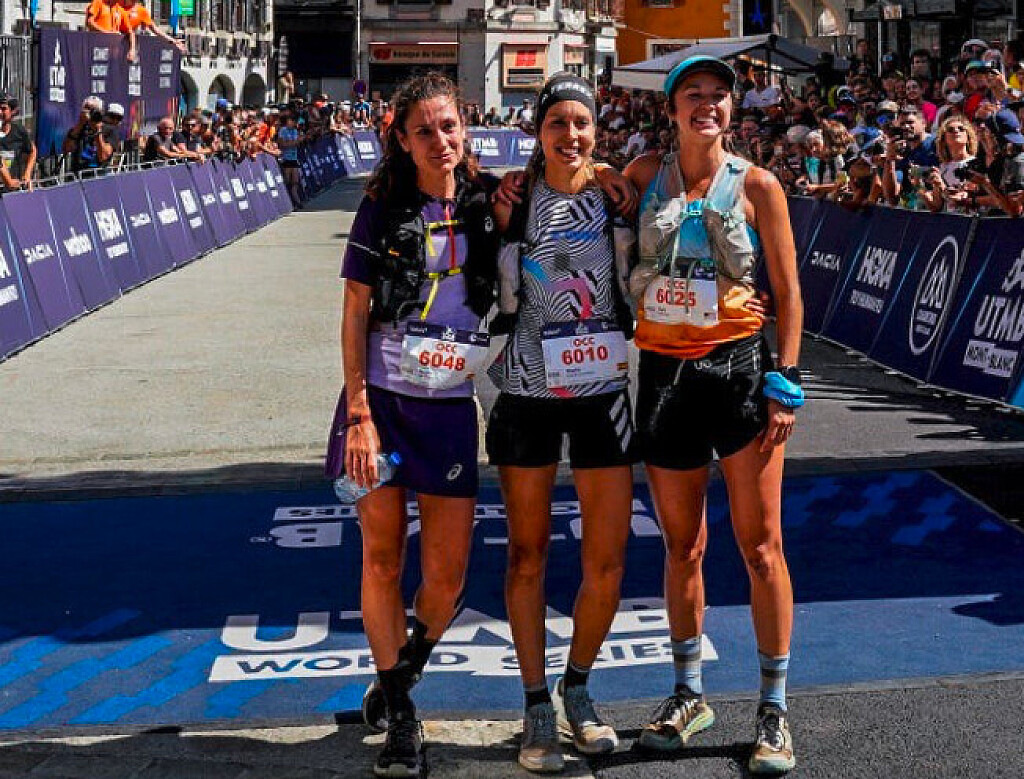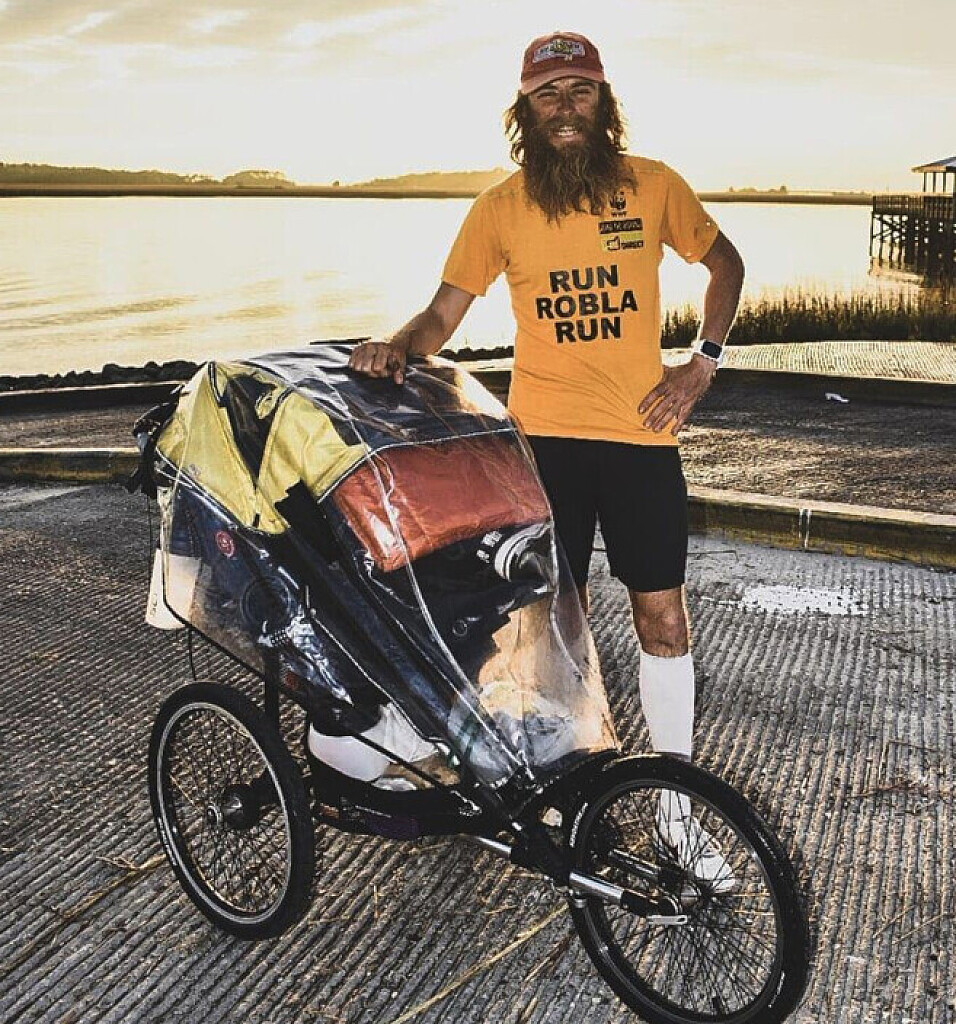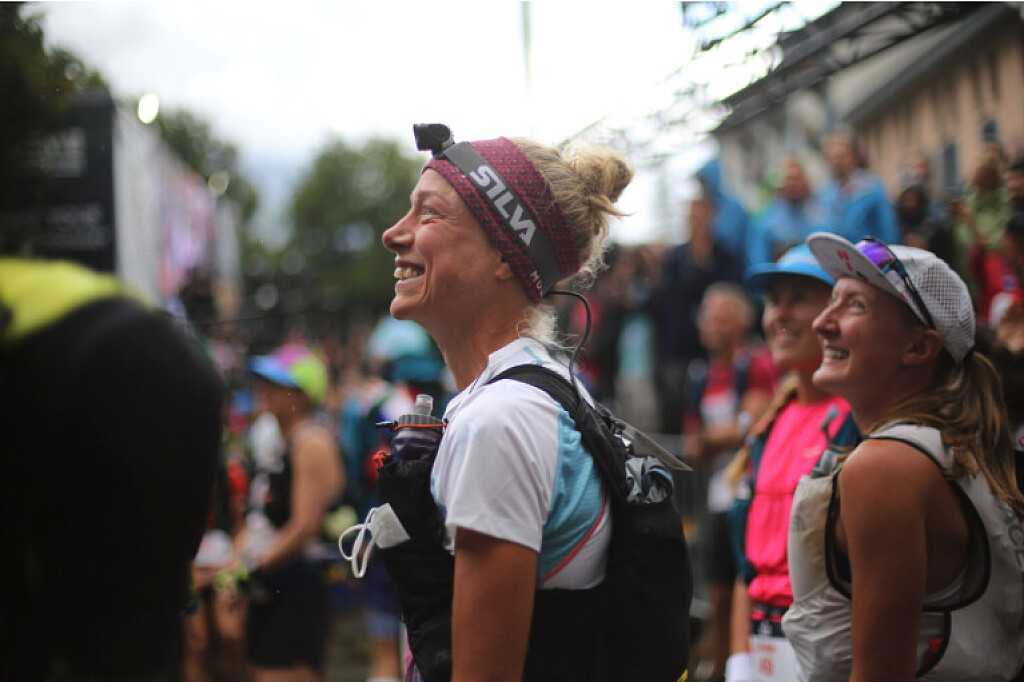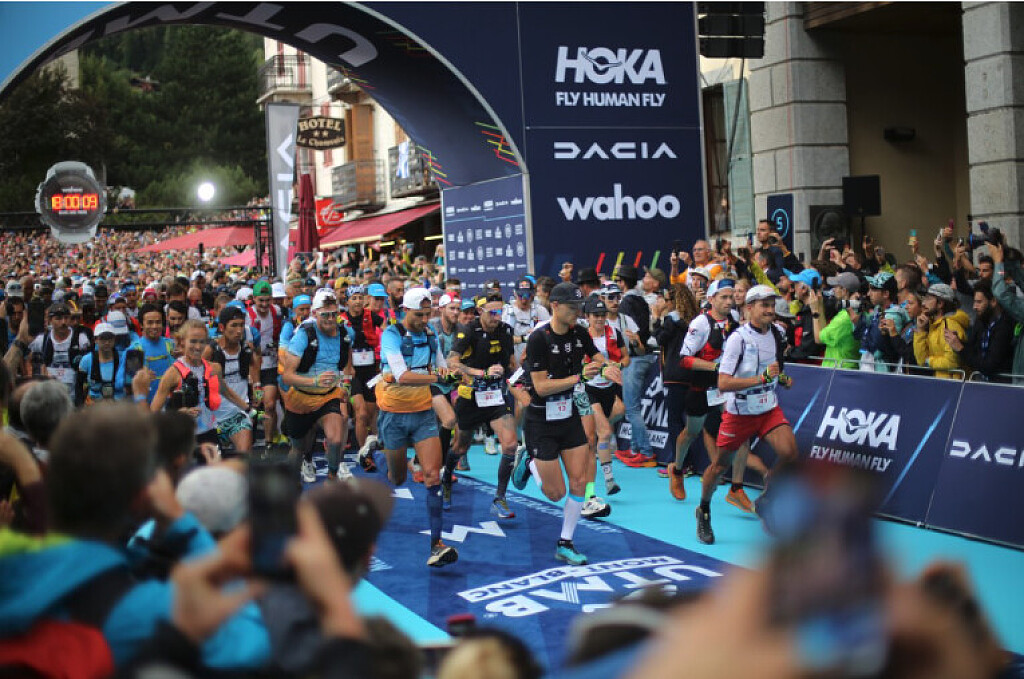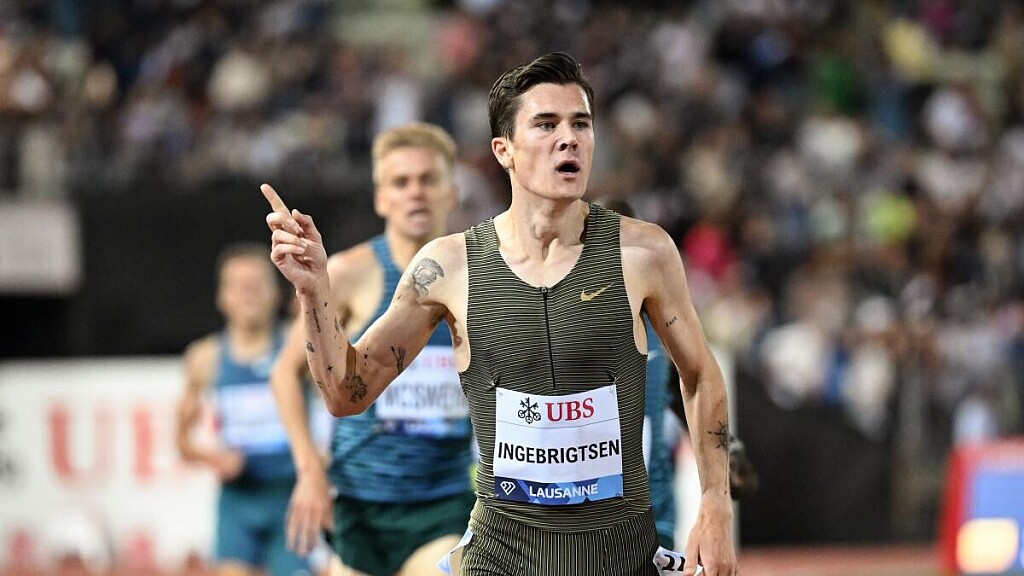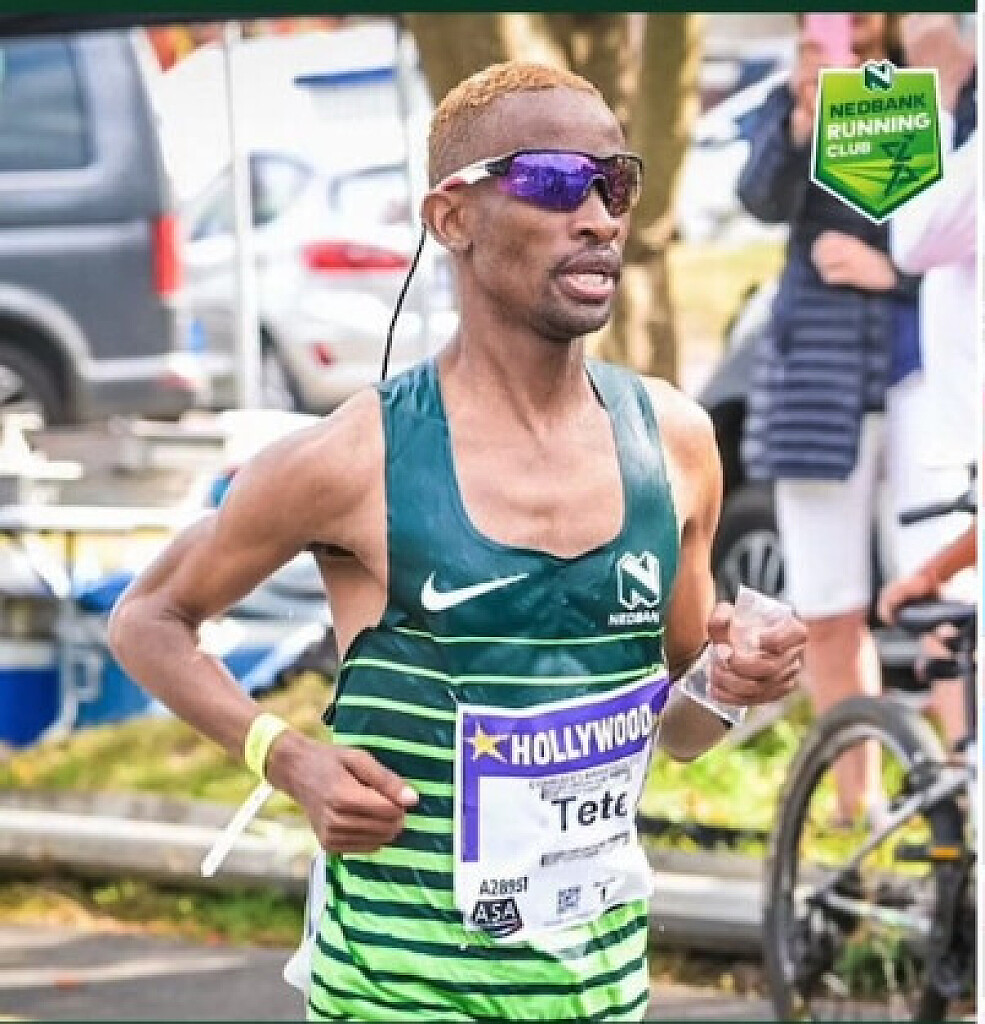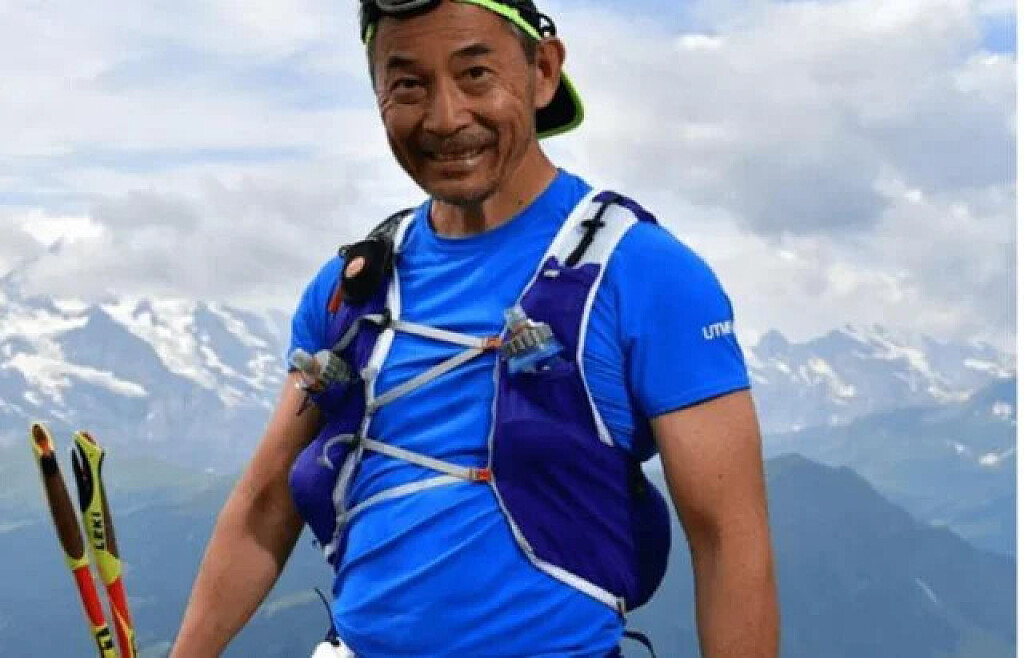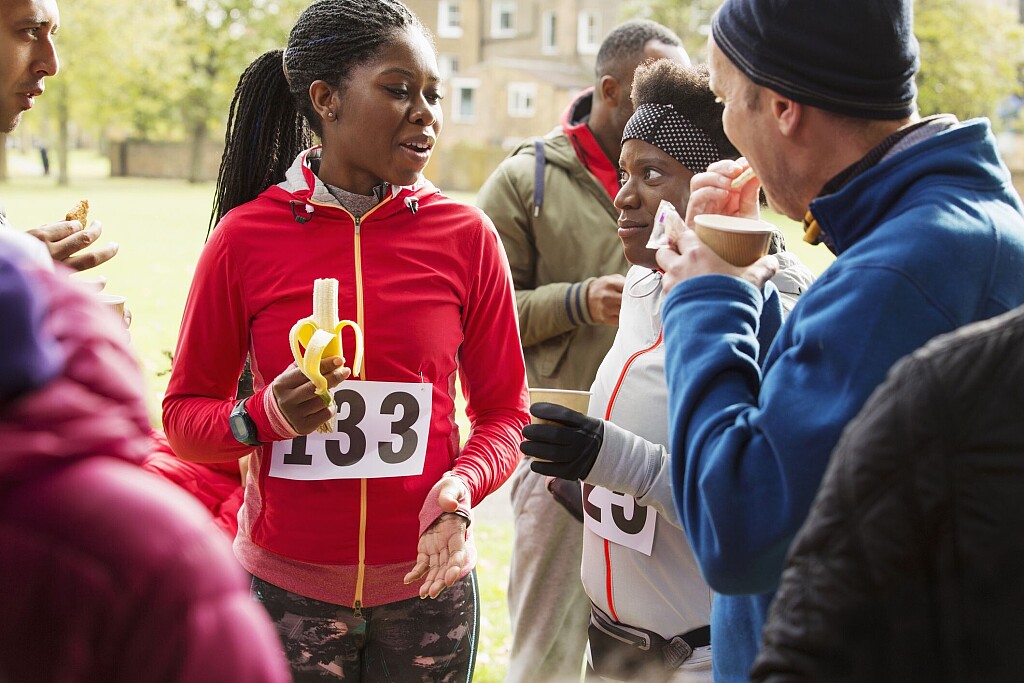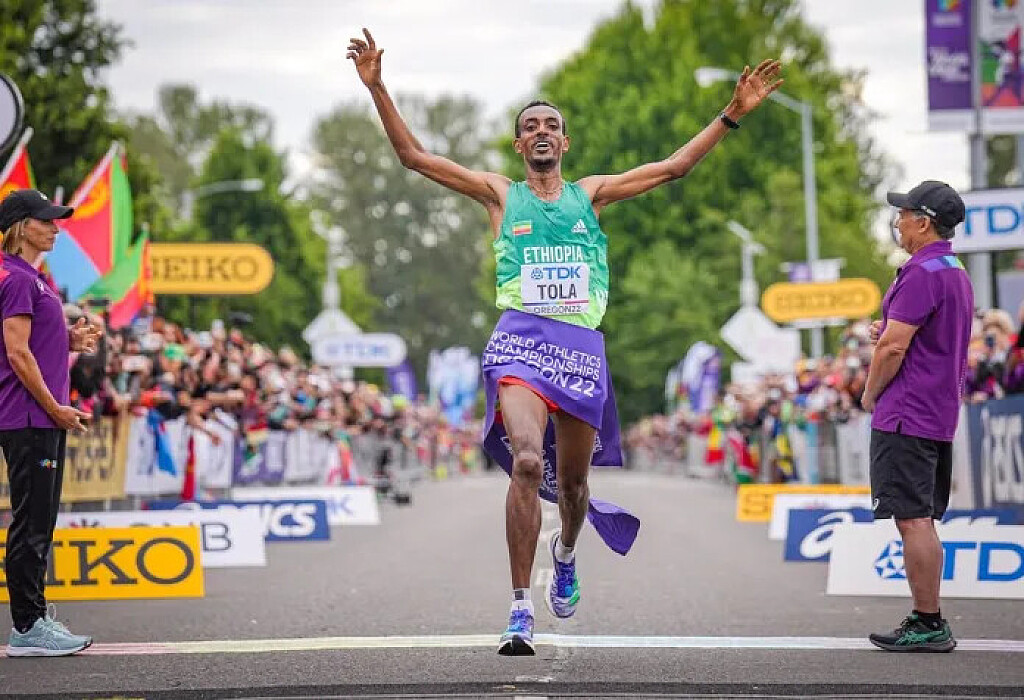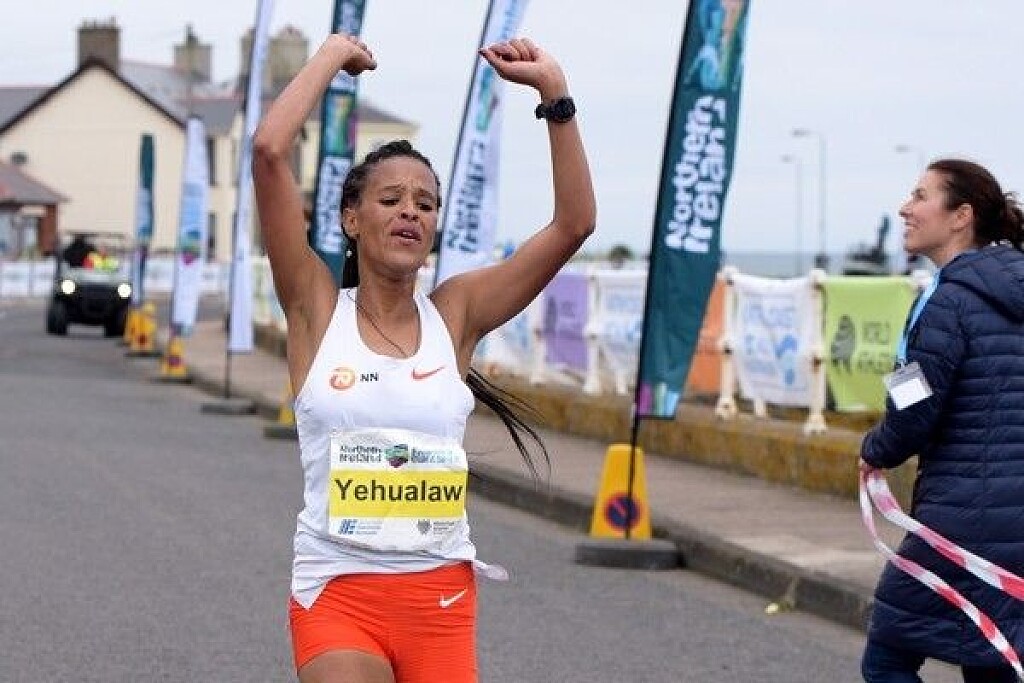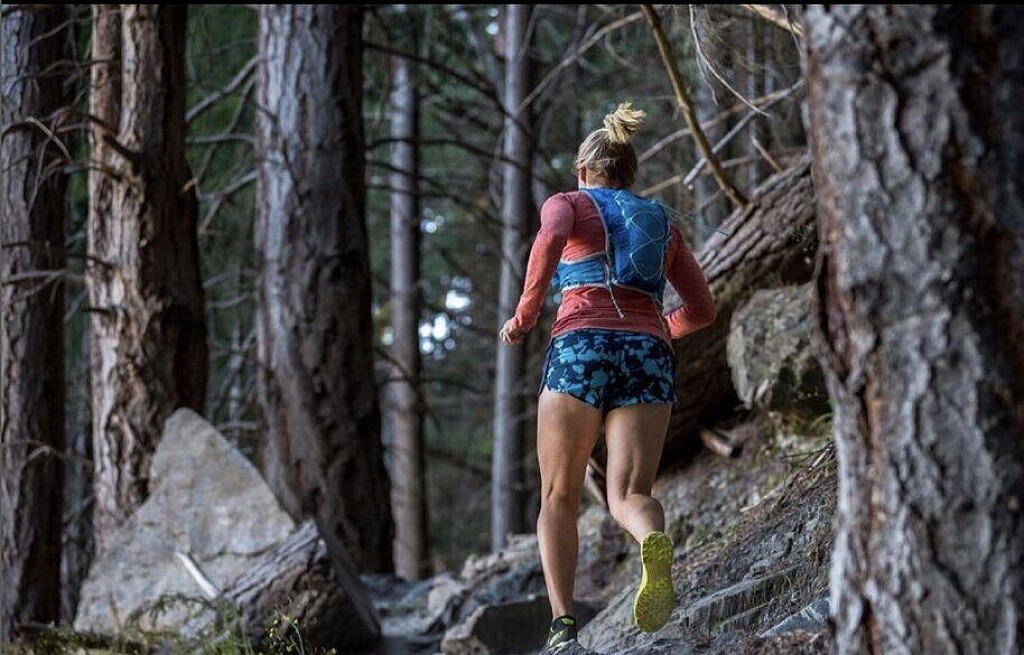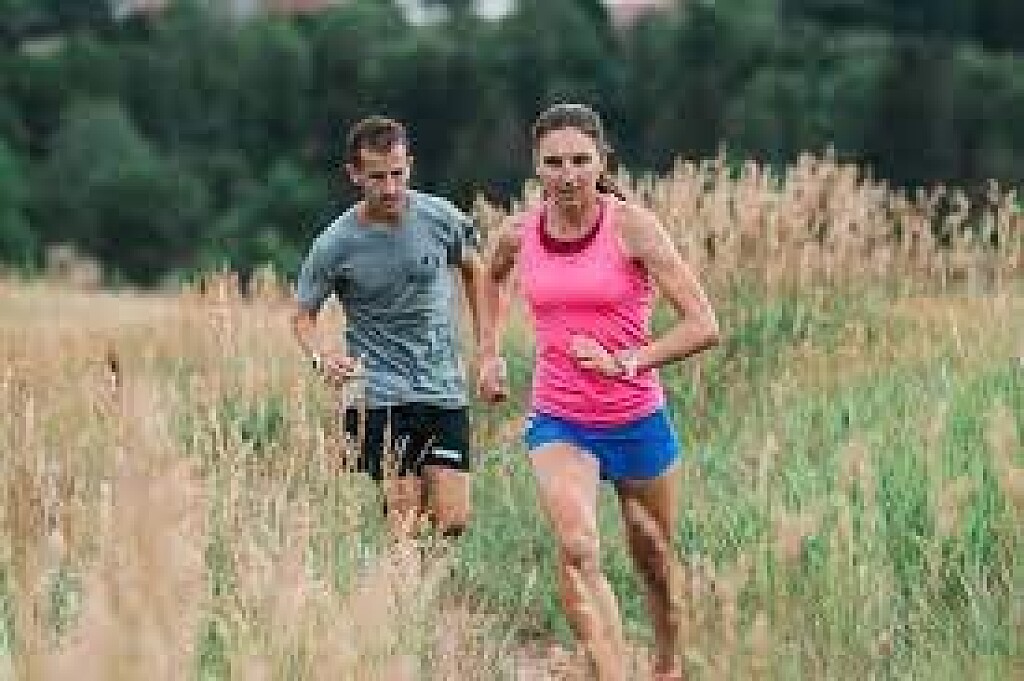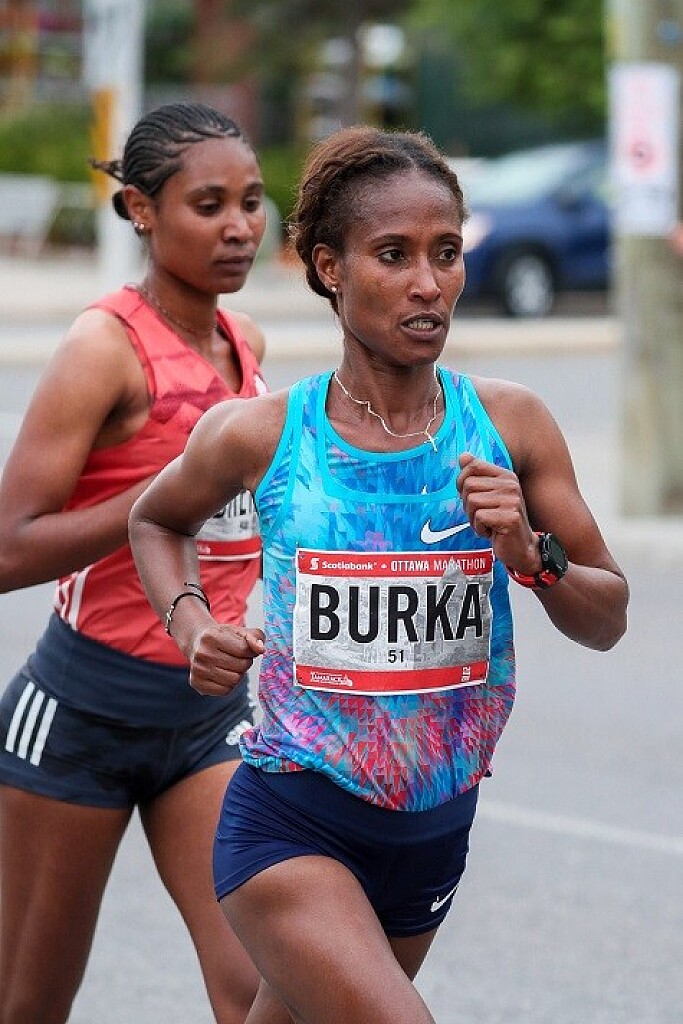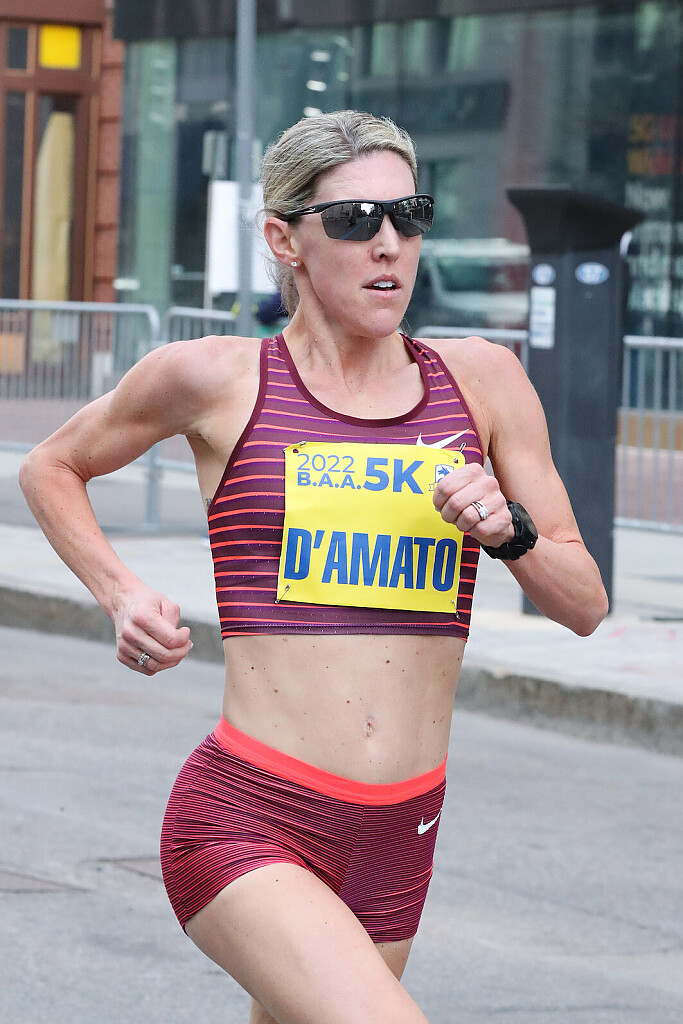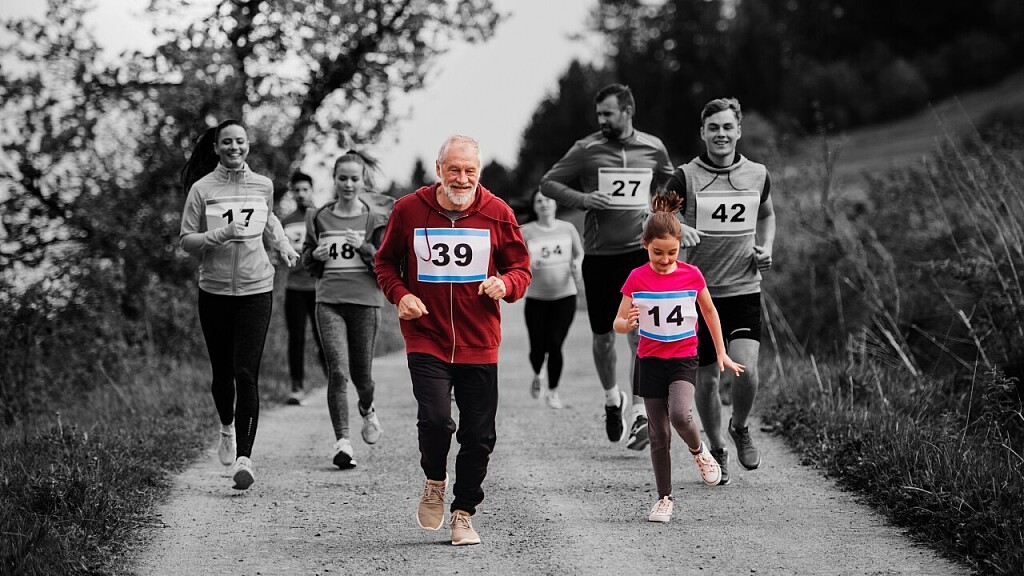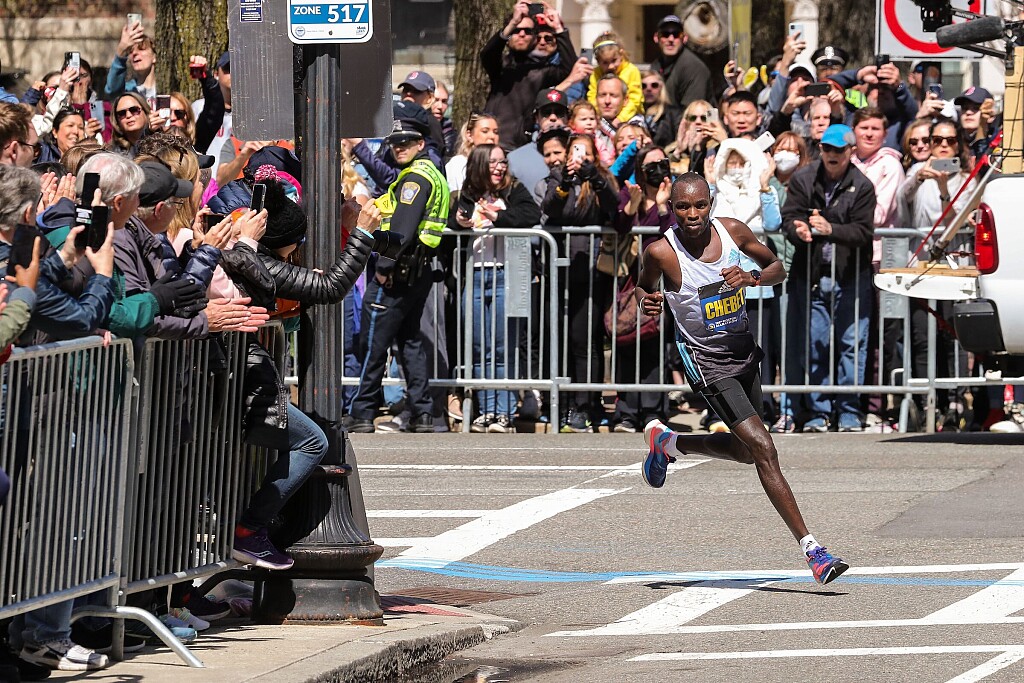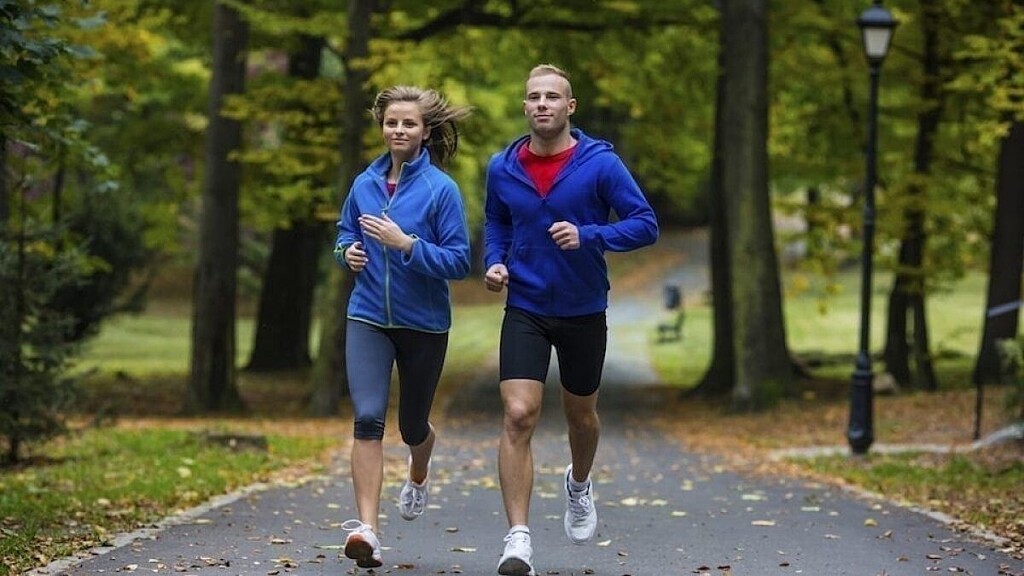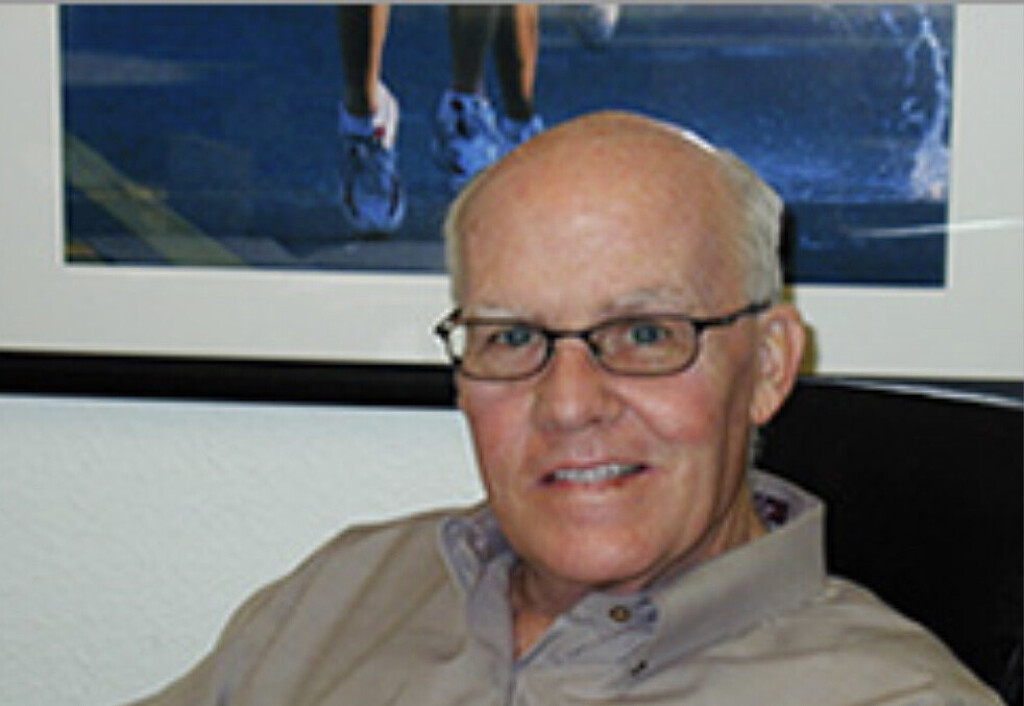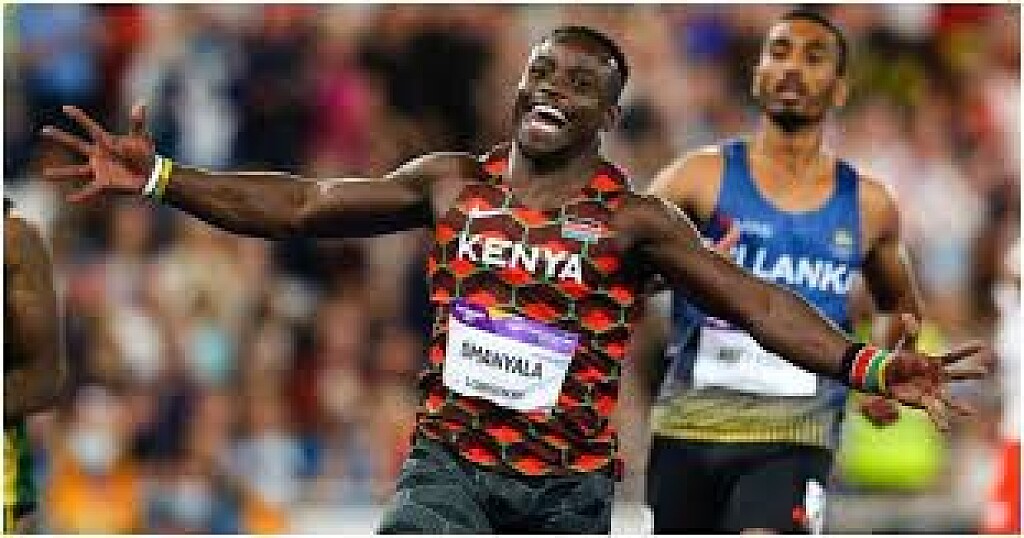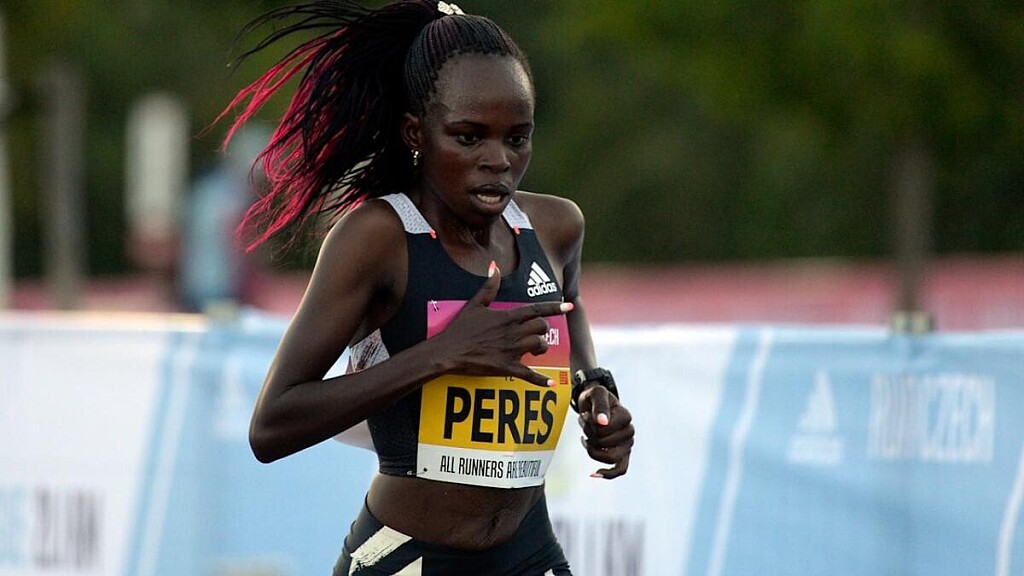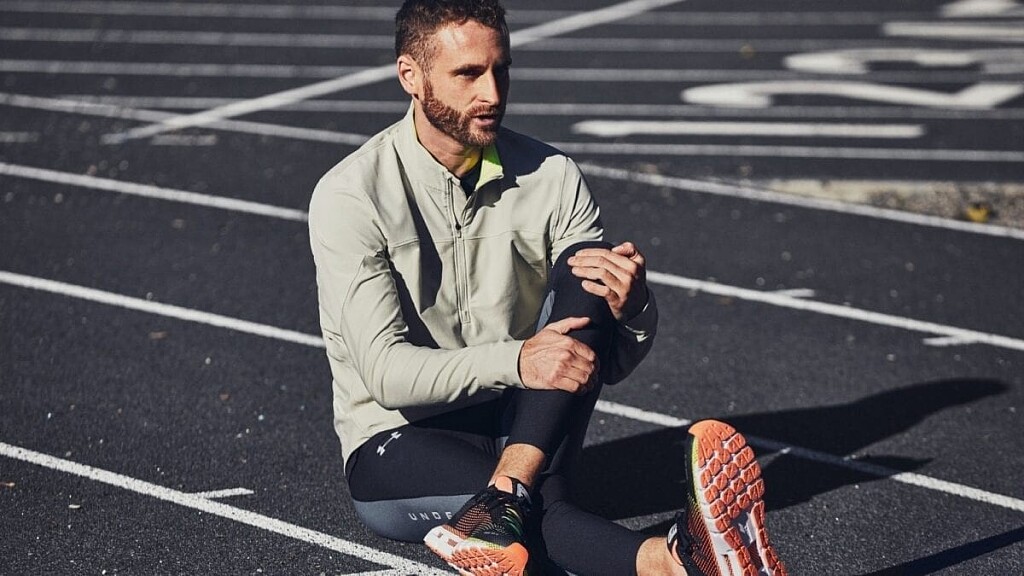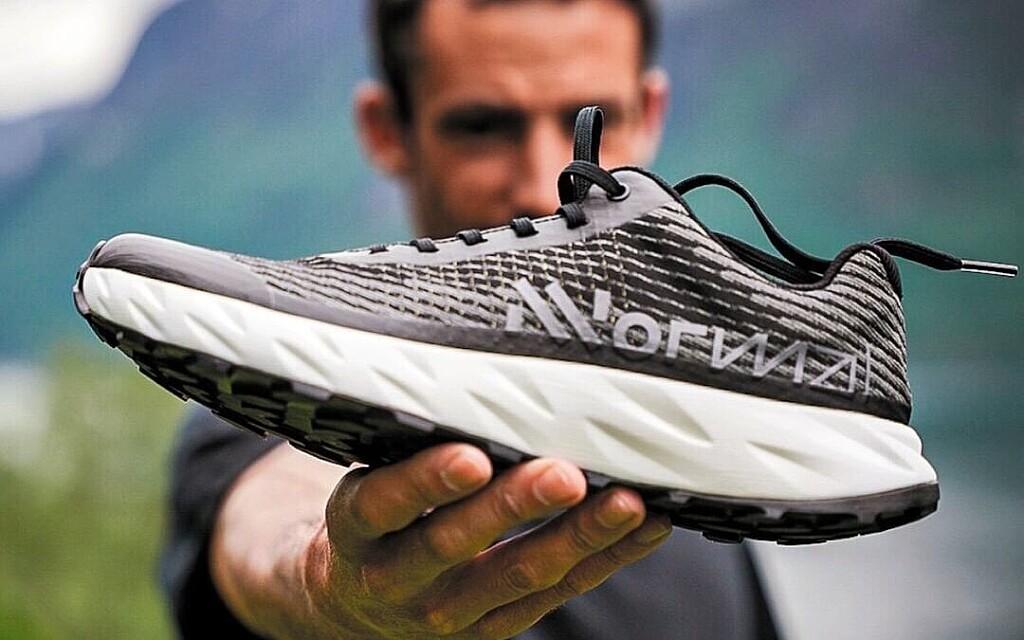Running News Daily
Running News Daily is edited by Bob Anderson in Mountain View, California USA and team in Thika Kenya, La Piedad Mexico, Bend Oregon, Chandler Arizona and Monforte da Beira Portugal. Send your news items to bob@mybestruns.com Advertising opportunities available. Over one million readers and growing. Train the Kenyan Way at KATA Running Retreat Kenya. (Kenyan Athletics Training Academy) in Thika Kenya. Opening in june 2024 KATA Running retreat Portugal. Learn more about Bob Anderson, MBR publisher and KATA director/owner, take a look at A Long Run the movie covering Bob's 50 race challenge.
Index to Daily Posts · Sign Up For Updates · Run The World Feed
Shelly-Ann Fraser-Pryce challenges pole-vaulter Mondo Duplantis to 100m race
At the Brussels Diamond League press conference on Thursday afternoon, one of the great female sprinters of all time, Jamaica’s Shelly-Ann Fraser-Pryce, had a question for the pole vault world record holder, Mondo Duplantis: “Say, Mondo, how fast are you at the 100 meters … against me?”
At first, Duplantis was stunned by the question, and after some thought and hesitation, he said: “I would beat you!”
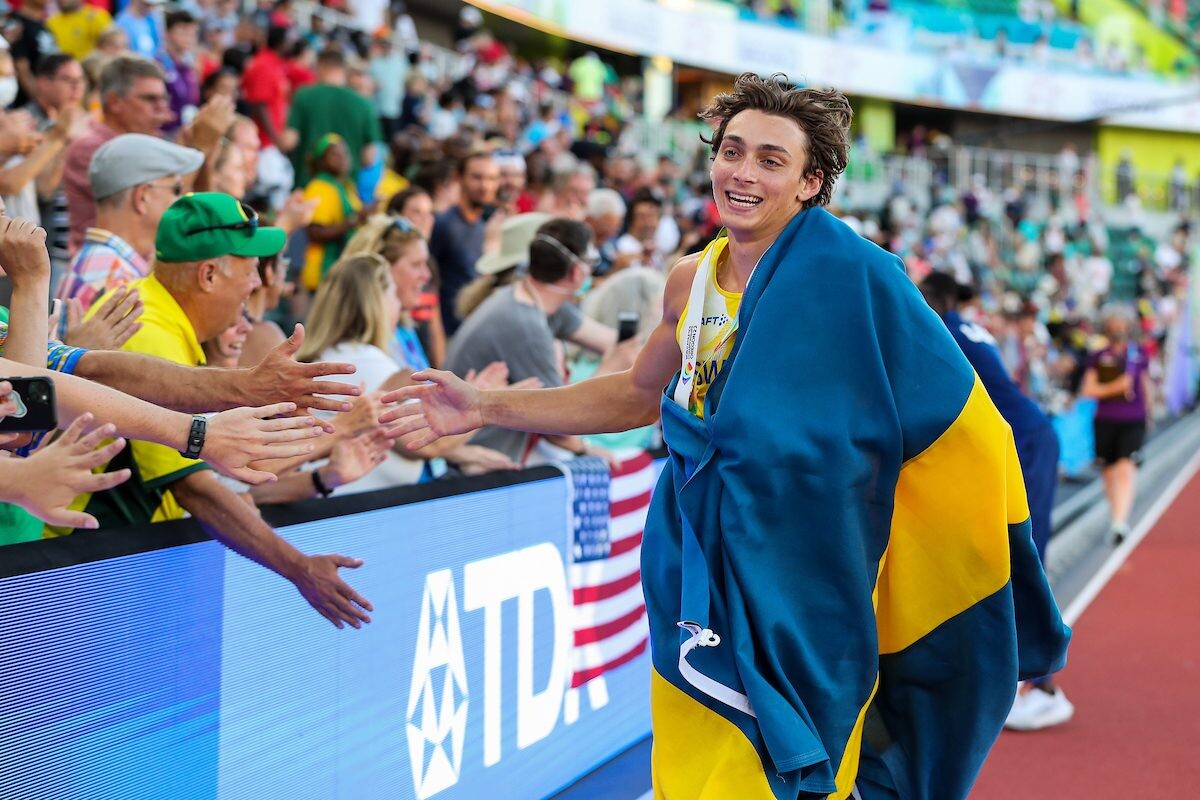
But Fraser-Pryce was skeptical. “How many metres do you have to run in the pole vault? 20 metres?” Duplantis replied that his run-up is 40 metres, and that he used to race the 100m in high school.
“But wasn’t that five or six years ago,” Fraser-Pryce replied.
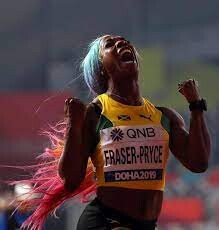
“But I’m much faster now than I was five years ago,” Duplantis responded.
According to the World Athletics database, Duplantis ran faster than Fraser-Pryce in college (at Louisana State University). He clocked a wind-aided time of 10.57 seconds (+2.1 m/s); Fraser-Pryce holds the faster ‘legal’ personal best of 10.60s.
Fraser-Pryce expressed disbelief, and made a bet with the pole vaulter that she would handily beat him over 100m. Duplantis accepted the challenge, which was followed by an official handshake.
The director of the Diamond League Brussels meet, Kim Gevaert, immediately responded to the challenge. “If you want, we can organize the 100m showdown for you next year at this meet?”
“Yes, next year in Brussels, Fraser-Pryce and I will race 100m. It has been arranged!” laughed Duplantis.
(09/02/2022) ⚡AMPby Running Magazine
The best unusual running tips for beginners
We all know the “big” running advice we all see: hydrate, dress for the conditions and make sure you’re wearing the right shoes. But what are some of the unusual bits of advice you’ve discovered over the years that have helped you improve or made running more enjoyable?
Here are a few small tips you should consider.
Chill out at crosswalks
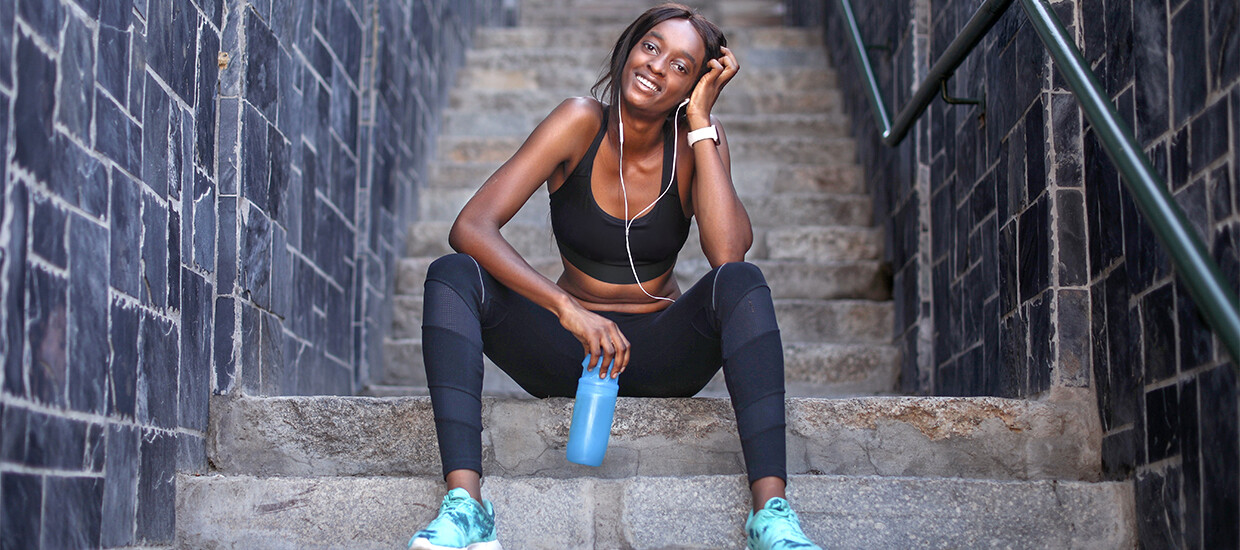
Runners, there’s no need to keep running on the spot when you’re stopped at a red light. Chill out, walk around or stand there and enjoy the 30 seconds of rest; it won’t make your training any less effective.
Plan your route around bathrooms
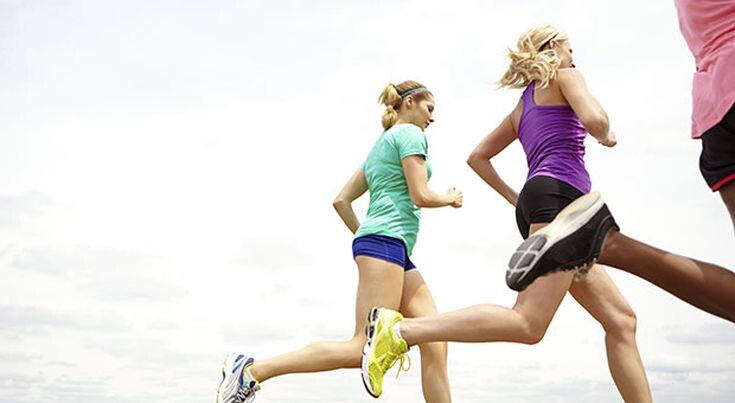
There’s nothing worse than being out in the middle of nowhere and having to go to the bathroom. In moments like this, you may think your run has gone to (you know what), but planning to make sure there are at least one or two bathrooms on your route can be a lifesaver.
Add vinegar when washing your workout clothes
I know it sounds strange, but if you add vinegar to the main wash it will help remove soap residue and the bacteria in your workout clothing. Using vinegar helps reduce odours and soften clothes without harsh chemicals. Vinegar is inexpensive, and it’s safe to use in both standard and high-efficiency washers.
Wrap your keys
Are you sick and tired of carrying your keys or having them jangle and make the noise of a symphony in your pocket? Try wrapping your keys with a hairband or a rubber band to prevent them from bouncing around on your run.
Your miles still count if they aren’t on Strava
Although you may not get as much recognition from your peers, your body will still count your morning 5K run.
Similarly, your body doesn’t care or know the difference between 9.94 km and 10 km on your GPS watch. Training effects are not so precise that a tenth of a kilometre will affect your ability to win races.
(09/02/2022) ⚡AMPby Marley Dickinson
How Keira D’Amato became America’s best ever woman marathoner
Keira D'Amato is currently at the top of the American women's distance running scene. She holds multiple American records — in the 10-mile and the marathon, the latter of which had stood for nearly 16 years before D'Amato smashed it in January — and has racked up win after win this year at everything from 10Ks to 7 milers. But just two years earlier, the real estate agent and mom of two was mostly unknown, quietly putting in miles near her home in Midlothian, Virginia.
That's not to say D'Amato's success came out of nowhere — before starting her real estate career and her family she was a standout runner, a four-time All-American, at American University in Washington, D.C.
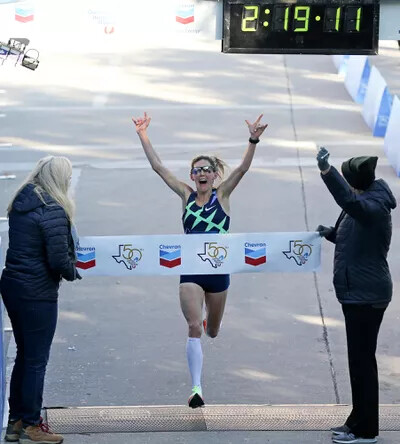
"My life then was to eat, sleep, breathe and run. That was all I knew and all I wanted to do," D'Amato, 37, tells PEOPLE. "It was my whole world." She planned to pursue professional running after graduation, but her dreams were quickly derailed by a series of injuries. When her insurance denied a needed ankle surgery, D'Amato was "kind of forced out" of the sport.
"It was a weird breakup. It really felt like running was breaking up with me," she says. "It was heartbreaking. All of sudden I was Keira the runner who doesn't run."
D'Amato ended up meeting her husband Anthony, getting her real estate license and having two kids, Thomas, now 7, and Quin, 5. Her running at that time was very casual — she picked it up again to get back in shape after the two pregnancies and for a dose of sanity while at home with young kids and a military husband, who at times was deployed for more than a year.
"That was a really, really hard time for me," she says. "Just two kids under 2 and being at home alone. I felt lonely and I felt a little trapped." D'Amato would hire a babysitter for an hour, just so she could get out and run.
"I needed something that was mine and that I controlled and something that was just slow and peaceful. Then as soon as I walked back in the door, I was feeling really proud that I'd accomplished something for me that I could go right back to being a mom," she says. "It just helped me cope during that time."
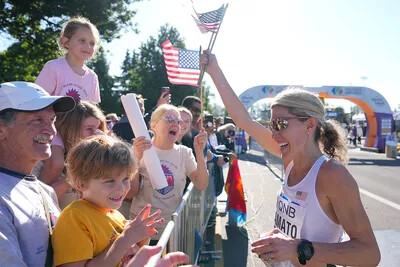
D'Amato also started jumping into a races — a local 5K, or a long weekend in Nashville with a friend for a half marathon. "It was totally for fun and it taught me how to love running without needing to be fast or have goals."
Her real return to running started as a prank — she kindly gifted Anthony with an entry to the 2017 Shamrock Marathon for Christmas one year, and feeling bad about it, decided to sign herself up too.
Thinking she'd run it in around 3 hours and 30 minutes (an impressive time for the average runner, but nothing outstanding), D'Amato ended up easily covering the 26.2 miles in 3:14:54. Eight months later, she decided to train for the Richmond Marathon, and shockingly finished in 2:47:00 — two minutes short of the Olympic Trials qualifying time.
"That's when the fire started because I was like, 'Oh, two minutes in a marathon. That's four seconds per mile. I can do that.' "
With the help of her old college coach, Scott Raczko, D'Amato qualified, and then came in 15th at the 2020 Olympic Trials, ahead of around 450 other women, including several professional runners. A few weeks later, the COVID-19 pandemic shut down the world, and races.
But for D'Amato, "running wasn't canceled," she says. "I think a lot of other pros thought, 'Well, there are no races. This is a really natural time to take a break.' For me, I'm like, 'Hey, they're taking a break. I'm putting the pedal to the metal and I'm going to really catch up.' I trained really, really hard during COVID."
She started making some headlines after running a speedy 5K on her local track, and then even more in Nov. 2020 after she organized a 10-mile race where she broke the American women's record. Four months later, D'Amato signed her first-ever professional running deal with Nike.
"That was really cool," she says. "I think for Nike to bet on someone that wasn't a right-out-of-college national champion, it was some mom in a smaller town — for them to see what I saw in myself is really powerful."
D'Amato had already been relying on Nike for her running shoes, and appreciated that unlike other brands that require their runners to join teams in Arizona or Oregon, she could continue training at home in the Richmond area.
"They support people like me that are trying to be the best in the world, but they're also really supportive on an individual level of everyone finding their own best," she says. "They really build up the sport from youth programs to professional athletes and everything in between. I feel like they've created shoes for all runners to be their own best."
D'Amato ticked off more goals from there, coming in 4th at the Chicago Marathon — her first World Marathon Major as a pro — and winning the 2021 U.S. Women's Half Marathon title.
Then, in Jan. 2022, she went after the American marathon record, a record that had stood since 2006, despite years of the top female marathoners in the country trying to bring it down. It was D'Amato, on a windy day in Houston, who was finally able to do it in a time of 2:19:12.
"On the starting line that day, I was thinking I'm either going to get the record or I'm not. If I get it, that would be wild, but if I don't, I'm going to be right where I am right now and that's cool too. I'm happy," she says.
D'Amato thinks that the way she found her way to professional running — going from a standout college career to her "elaborate halftime show" to getting back in the game — helped her to her record-breaking runs.
And D'Amato isn't done now that she has the American record. She got to knock off another goal in June when she got a last-minute call-up to compete at the World Track and Field Championships and donned a USA uniform for the first time.
Despite having just 17 days to train for a marathon (D'Amato had been racing speedier 10Ks when she got the ask to join the team), she went out fast and finished eighth in the world. In September, she'll toe the line at the Berlin Marathon — known for its flat and speedy course — and has her mind set on lowering the American record again.
"I'm in this really beautiful spot where I feel like I have nothing to lose, but just everything to gain," she says. "I'm putting everything out there, my heart, my soul, my running shoes and just going for it with every opportunity."
(09/01/2022) ⚡AMPby Julie Mazziotta (People Magazine)
Camille Herron’s breakfast of champions, Fuel up and go chase a world record (or maybe a PB)
I’ll try any running (or eating!) advice Camille Herron has to offer. The multiple world-record holder continuously levels up, finding new ways to improve her running and racing. Herron is in South Africa running the downhill course of the legendary Comrades Marathon this weekend, an 89K ultra that she won (on the uphill course) in 2017.
She shared with us the pre-run breakfast she swears by. If you haven’t heard of teff, you aren’t alone; while Westerners are still learning about the tiny, protein-rich grain, it’s been a staple in Ethiopian cooking for thousands of years. Teff has a mild, nutty flavor. Herron substitutes it for oatmeal, and says it’s been a “game-changer.”
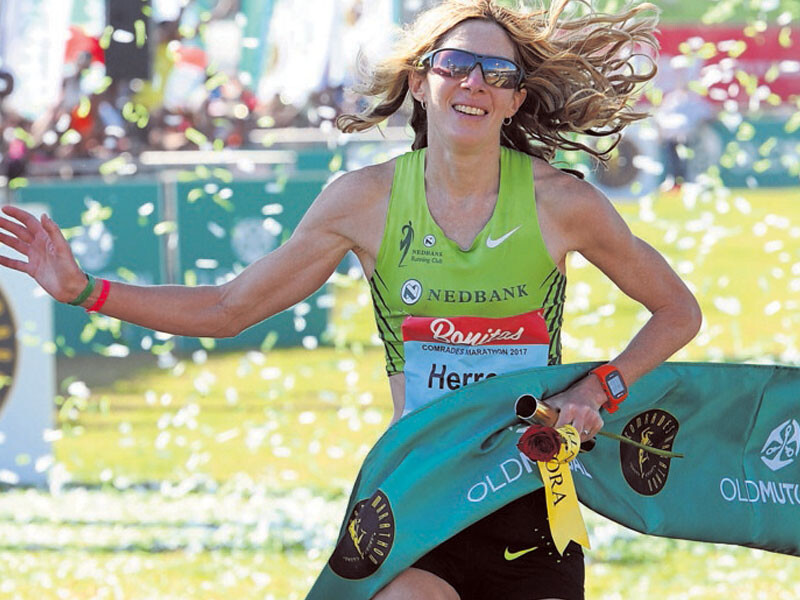
Camille Herron’s breakfast of champions
Ingredients
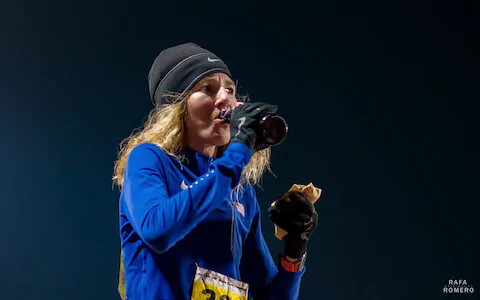
4 Tbsp of teff
1 Tbsp ground flax seed
1 Tbsp chia seeds
Handful of cut walnuts
Handful of blueberries
1 tsp camu powder
1 tsp bee pollen
1 Tbsp non-fortified nutritional yeast
1 to 2 Tbsp honey
Pinch of salt
Directions
Add hot water, stir, and let sit for 10 to 15 minutes. Add or substitute any nuts or fruit that you enjoy. Herron says teff has been a pre-run fuel revelation for her: “it doesn’t retain as much water as oats, so it doesn’t feel heavy on the gut pre-run.” She adds, “it feels like it stabilizes blood sugar for a long time.”
1 Tbsp wheat germ
(09/01/2022) ⚡AMPby Running Magazine
Five core exercises every runner should work into their program
Physiotherapist and runner Dr. Scott Carlin explains there are five core exercises all runners should have in their strength training routine to add more control to their running motion.
Developing your core is one of the most important things you do to improve your running form. Although training your core may not be as much fun as going for a 30-minute run, the results will go a long way in preventing injuries and improving your running economy.
Five great core exercises for runners
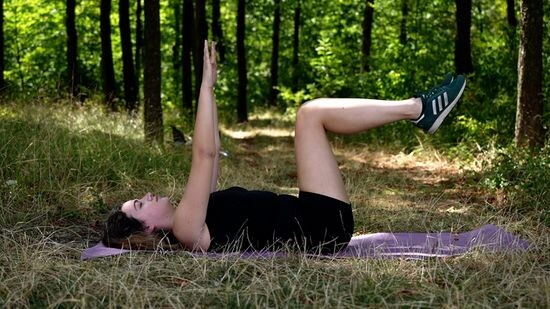
U.S.-based physiotherapist and runner Dr. Scott Carlin explains that there are five core exercises all runners should have in their strength training routine to add more control to their running motion. Carlin says doing these exercises once or twice a week can help you run more efficiently and avoid injuries so you can get the most out of every run.
1) Banded Dead Bug 3×10-15/side
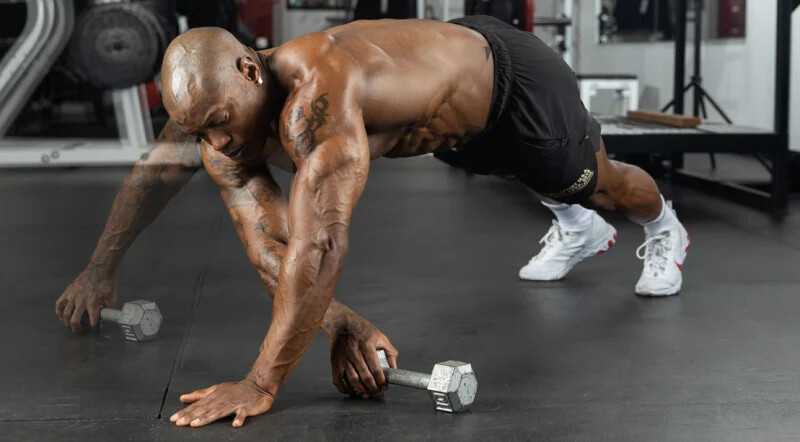
Easier: No band, no weight
Harder: Try using a heavier band and adding more weight
2) Side Plank Crunch 3×10-15/side
Easy: No crunch
Harder: Put an exercise band around your feet
Remember to keep your shin off the ground and bring your knee up to your elbow.
3) Plank with Alternating Leg Lift 3×30-60sec
Easy: No band or leg lift
Harder: Put weight on your back
Keep your legs in a straight motion and hips square to engage your core.
4) Tall Plank Drag 3×10-15 reps/side
Easy: No weight or drag over
Harder: Try using a heavier weight
Remember to stay long and keep your back straight and hips square.
5) Straight Leg Dead Bug 3×10-15 reps/side
Easy: Bend your knees
Harder: Hold weights in your hands
Try to push your lower back against the floor to keep your core engaged. Make sure to stay long with your arms and legs fully extended.
(09/01/2022) ⚡AMPby Marley Dickinson
World Athletics Indoor Championships Nanjing 2023 to be postponed
It is with regret that the World Athletics Council has decided to postpone the World Athletics Indoor Championships Nanjing 2023, scheduled for 17-19 March 2023, until March 2025 (exact dates to be confirmed).
This decision was taken with the agreement of both the Nanjing organizing committee and the Chinese Athletics Association (CAA), due to the ongoing pandemic conditions.

Nanjing was originally selected to host the 2020 World Athletics Indoor Championships, which were first postponed until March 2021, and then to March 2023, as the pandemic continued.
The next edition of the World Athletics Indoor Championships will now be in Glasgow on 1-3 March 2024, and the bid process has already commenced for the 2026 edition of the championships, which is why 2025 has been designated as the year for the Nanjing championships.
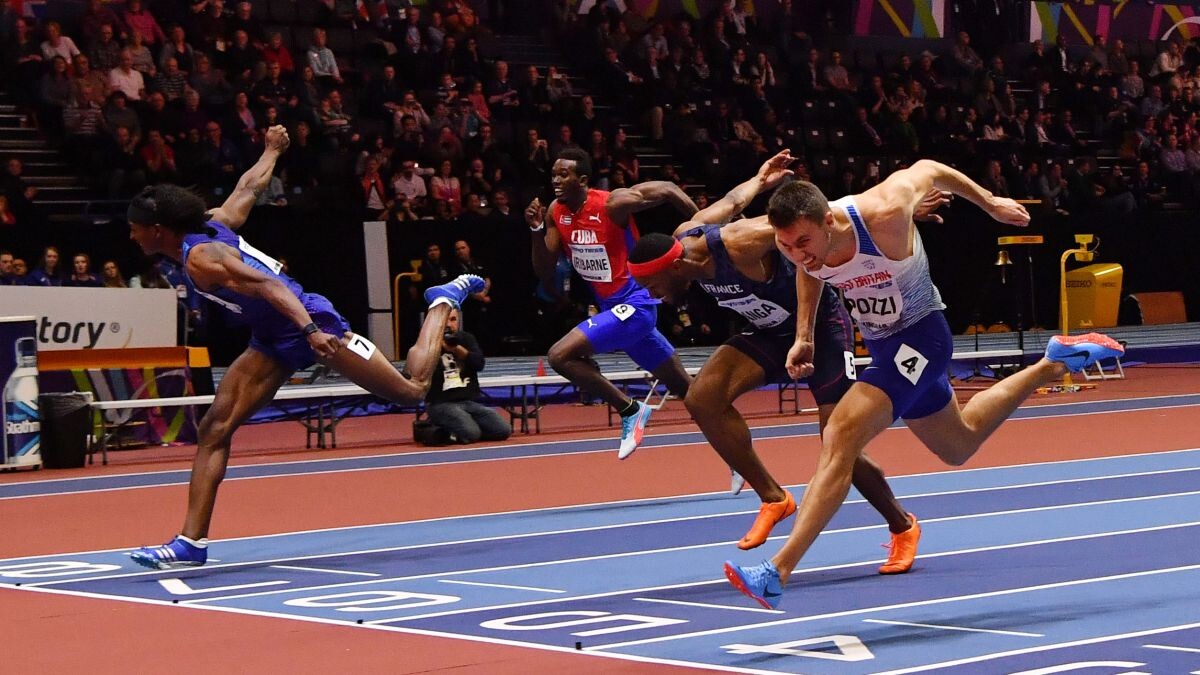
“We’re disappointed that we have had to postpone this event again due to circumstances beyond our control, but we have done so to give certainty to athletes and Member Federations preparing for the 2023 competition season,” World Athletics President Sebastian Coe said. “Unfortunately, the time frame will prevent us from relocating the 2023 event, but the indoor championships will return in 2024 in Glasgow.
“We have offered Nanjing the 2025 edition because we are mindful of the substantial preparations the LOC has already done to host the event and we want to avoid potential financial losses for all parties. I want to thank CAA and the LOC for their cooperation in resolving this situation.”
Despite this postponement, athletes will still have substantial competitive opportunities available in the early part of 2023 through the World Athletics Indoor Tour, which will offer a full calendar of events from late January to March (more events to be added) and is organized across four different tiers of competition – Gold, Silver, Bronze and Challenger.
(09/01/2022) ⚡AMPby World Athletics
World Athletics Indoor Championships Nanjing
The IAAF World Indoor Athletics Championships is being held in Nanjing in China, the first time this emerging nation has hosted the world´s major indoor athletics championships. The brand New Cube Arena is a multi-porpose venue and has a very limited capacity of just 3,000 seats which in a city with a population of 8.5 million means tickets will be...
more...The former American marathon record holder Deena Kastor is ready to run the only World Major Marathon missing from her resume
Former American marathon record holder Deena Kastor has hinted that she’s planning to race this year’s Berlin Marathon, which would officially complete her six-star World Major Marathon campaign.
She has raced the other five majors (Boston, London, Tokyo, Chicago and New York City), and although she was set to race Berlin in 2019, an ankle injury dashed those plans. She’s back, and ready to tackle the race now, and she will be on the start line in Germany on Sept. 25.
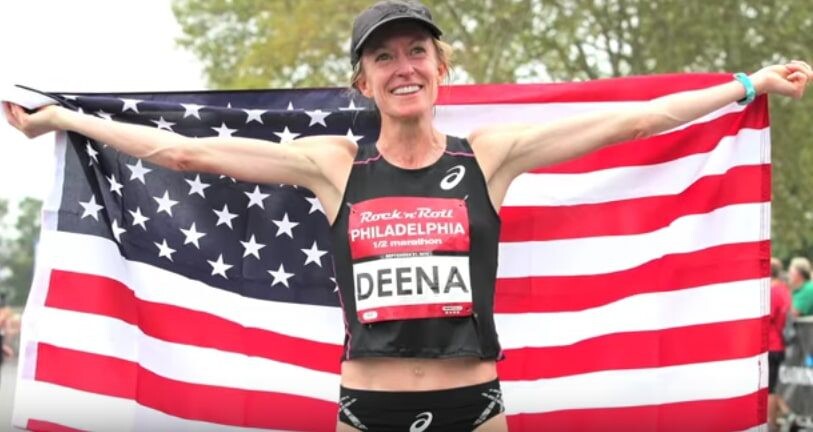
Kastor is one of the top marathoners in American history, and up until this year, she held the national record at 2:19:36, set at the 2006 London Marathon, which she won. (Keira D’Amato broke Kastor’s record at the Houston Marathon in January 2022, when she ran 2:19:12.) Kastor also owned the American half-marathon record of 1:07:34 until 2018, when Molly Huddle ran 1:07:25.
In addition to her name in the record books, she won many races in her career, including several World Majors. (In addition to London in 2006, she won Chicago in 2005.) She also won a bronze medal in the marathon at the 2004 Athens Olympics. Her most recent World Major Marathon appearance came in 2019, at the Tokyo Marathon.
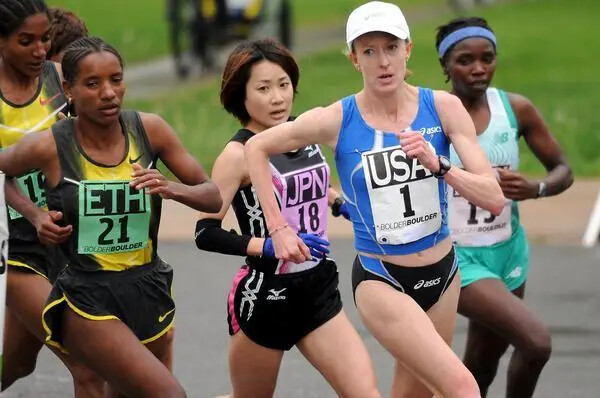
Kastor won’t be going for the win in Berlin, but she’s had her fair share of time on podiums. Instead, she will be shooting for the final part of her six-star medal, a bucket-list goal shared by many marathoners (both amateur and pro) around the world.
(09/01/2022) ⚡AMPby Ben Snider-McGrath
BMW Berlin Marathon
The story of the BERLIN-MARATHON is a story of the development of road running. When the first BERLIN-MARATHON was started on 13th October 1974 on a minor road next to the stadium of the organisers‘ club SC Charlottenburg Berlin 286 athletes had entered. The first winners were runners from Berlin: Günter Hallas (2:44:53), who still runs the BERLIN-MARATHON today, and...
more...British ultrarunner completes 2,850 km run along Europe’s Danube River
Kieran Alger ran the length of the second-longest river in Europe in 67 days.
If you’ve travelled to Budapest, Vienna or a number of other European cities, you might have run along the Danube River. That’s what British ultrarunner Kieran Alger just finished doing on Tuesday, but unlike what was likely a chill mid-vacation run for you, he did it for 67 days.
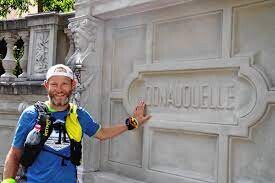
The Danube is the second-longest river in Europe, passing through 10 countries and spanning 2,850 kilometres, and Alger covered it from point to point. He called this challenge Danube Sea to Source and used it to raise money for five different charities, all of which fight child poverty.
Alger started his run on June 25 on the coast of the Black Sea in Romania. From there, he simply followed the Danube, taking every twist and turn the river makes. This challenge was almost completely unsupported, meaning Alger didn’t have a crew following along and meeting up with him at every pitstop. He carried his own supplies (a 22-pound bag) and camped most nights.
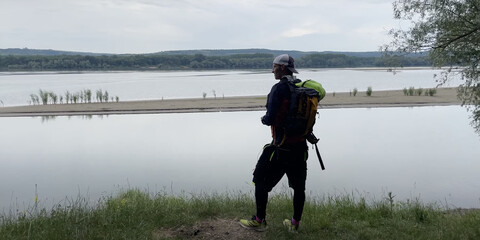
As Alger told the BBC after finishing his journey, he believes he is the first person to complete this running challenge along the Danube. As one would imagine, the Sea to Source was hardly an easy endeavour, but Alger said he had to fight more than just fatigue.
“In Romania, I battled lots and lots of wild dogs,” he said. “I suffered a couple of dog attacks … and I had to run quite a lot of those stretches on high alert.”
While this made the run even more difficult, Alger said he found that “the struggles made the highlights even better.” After crossing his finish line in Donauschingen, Germany, on Tuesday, Alger stopped the clock on his challenge after 67 days of running. That works out to more than a marathon every day for more than two months.
(08/31/2022) ⚡AMP
by Ben Snider-McGrath
Five running tips from olympic marathon runner Liz Yelling
Legendary two-time Olympic marathon runner Liz Yelling is a definitive source on successful marathon training. After competing in marathons across the world and winning championship after championship, she knows a thing or two about lacing up and making it to the finish line. Here she shares her five essential tips for running your best race.
1. A good attitude is half the battle
“Don’t be daunted by the prospect of getting started,” Yelling advises.
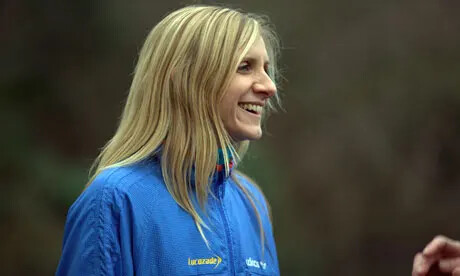
From the first steps out your door to reaching the end of 26.2 miles, the greatest challenge is the one inside your head. Remember your reasons for embarking on the marathon journey and maintain that passion throughout the process.“It’s normal to feel excited about the marathon journey that lies ahead, if, at the same time, a little apprehensive,” says Yelling. “Remember, your journey is about having fun, laughing and enjoying every step, stride, breath and ache. We’re all privileged to be able to participate, so let’s share with our friends, family and strangers and have a happy run every time we lace up and go out.”
2. Get a good pair of shoes (and other gear)
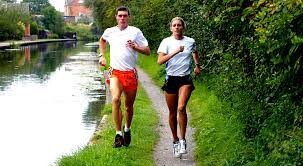
One of the perks of running is that it requires very little equipment, with no need for weights, balls or helmets. It mostly comes down to your feet, so Yelling recommends that every runner have a quality pair of running shoes that suits their gait.
Yelling explains what the process is like to find shoes that really fit: “Take a pair of your old shoes with you to a reputable specialist running retailer. They will probably look at how the upper and the sole have worn, look at your feet, ask you questions about any injuries, current or previous, and your training.”“They may also watch you run to help them suggest shoes for you to try on. You don’t need to buy the most expensive pair of running shoes for them to do a brilliant job. The most important thing is to find a pair that fits you well. Getting the right pair of shoes reduces your risk of injury, so take the time to make the right choice.”In addition to shoes, Yelling also suggests that your gear kit include a pair of sports socks, a lightweight jacket, comfortable shorts, leggings or tracksuit bottoms and a lightweight T-shirt in a functional, breathable material. Wearing appropriate clothing that maximizes your running potential lets you perform at your best.
3. Create a plan and stick to it
An important part of any running or exercise routine is consistency, so Yelling suggests that once people have decided they want to run a marathon, they should create a plan and — here’s the kicker — see it through to the end.“First, check with your doctor before starting a new exercise program, then be gentle and start slowly.
Don’t be too ambitious and expect to run before you can walk. Build up progressively, and add a few more minutes to your walk or run,” says Yelling.When it comes to following through, she has this advice: “Protect your time to run, and don’t quit. Double your motivation to stick to your goals by finding a running buddy. After about three to four weeks you should start to notice some differences in how you look and feel. “Don’t expect miracles overnight. Working consistently and at the right level will lay the foundation for successful marathon training.
4. Embrace the benefits of running
Running marathons isn’t just an enjoyable pastime that lets people rub shoulders with world-class athletes. Yelling reminds runners to consider the good they are doing for their physical and emotional health.“Regular running helps reduce stress but also may help reduce the onset of aging by boosting circulation to your skin, improving your complexion and maintaining muscle tone and flexibility. It keeps your heart and bones strong, reduces cholesterol, lowers blood pressure, burns more calories per minute than other forms of aerobic exercise, controls body weight, improves posture, boosts your immunity and keeps your circulation healthy. More than just physical benefits, running makes you feel more positive, energized, empowered, motivated and ready to face the world.”
5. Find your style
Every runner needs to find their own running style to run comfortably, successfully and without pain. Follow Yelling’s most important pointers for developing good form:• Keep your head relaxed and steady.• Let your shoulders hang naturally. Don’t hunch.• Bend your arms to 90 degrees by your sides and allow them to swing freely backward and forward close to your body, like a pendulum.• Keep your body upright.• Keep your knees, hips and lower legs in a forward line.• Feel relaxed, balanced and in control.
At the end of the day, do what works for you without comparing yourself to other runners. According to Yelling, “There are no style prizes in running. What matters most is not what you look like, but the fact that you are out there doing it!”
(08/31/2022) ⚡AMPby World Marathon Majors
Defending Champion Dayna Pidhoresky Seeks Perfect Race at TCS Toronto Waterfront Marathon
Since winning the 2019 Canadian Olympic trials, Dayna Pidhoresky has encountered mixed fortunes. It is not surprising that the 35-year-old Vancouver resident is seeking a perfect race at this year’s TCS Toronto Waterfront Marathon, the site of her greatest triumph.
“I definitely want to run a personal best,” she says of her return to this World Athletics Elite Label race scheduled for October 16th. “I just want to get the most out of myself on the day. I felt this past spring gave me a lot of confidence, my training went really well.
“I feel like this is the year [in Toronto]. I can just take a little bit more risk and try to empty the tank and hopefully that is something I will have the opportunity to do on the day. I just want to race well, execute well, and leave it all out there.”
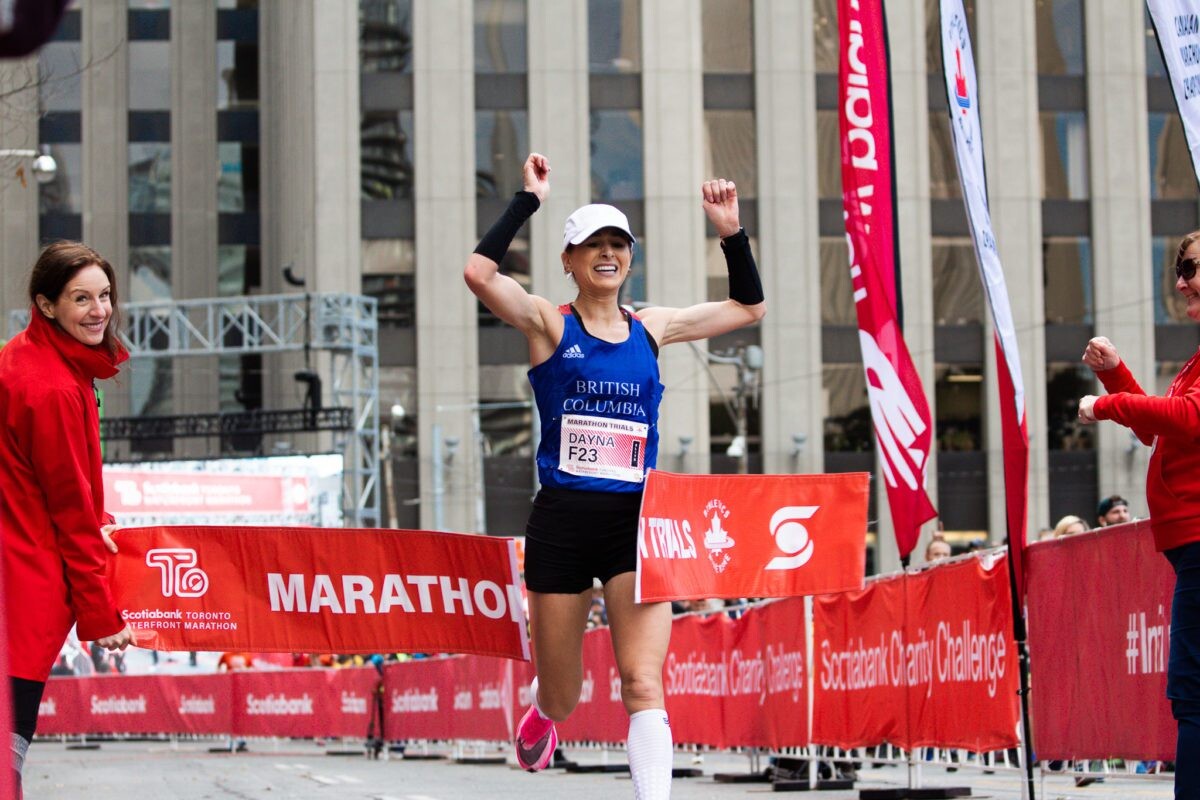
In April 2022, she won the BMO Vancouver Marathon in 2:34:30. Then just four weeks later, finished 6th at the Tamarack Ottawa Marathon. Both races yielded times well off her Olympic qualifying mark from 2019. On that day, three years ago, with the Canadian champion guaranteed an Olympic berth — provided they had made the standard — she came through with a stunning result. Pidhoresky, who is originally from Tecumseh, Ontario, ran a huge personal best time of 2:29:03 which cemented her place in the Tokyo Olympics.
While other athletes chased standards through the remaining qualifying period, Pidhoresky had the luxury of knowing she could train specifically for her dream race. It was not to be, however. In Sapporo, where the marathons and race walks were held, she struggled home 73rd nursing an injury after what she describes as a ‘nightmare.’
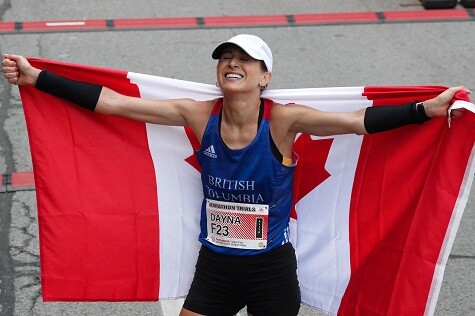
At Team Canada’s pre-Olympic training camp in Gifu, she and her coach and husband, Josh Seifarth, received word that someone on their Vancouver to Tokyo flight had tested positive for Covid.
“We got a call from one of the Athletics Canada guys and he told us we were ‘close contacts’ [of fellow passengers] and that we would have to basically stay in our room the whole time,” she explains. “We weren’t able to leave the room at any point of time, at all. That was about a week. Then I flew to Sapporo where the race was taking place.”
Canadian officials brought a stationary bike to her room during the quarantine, for which she was grateful. When the time came to fly on to Sapporo though, Seifarth was informed he would not be permitted to accompany Pidhoresky. Instead, he flew home to Vancouver.
“We thought it would be normal again and I would be able to interact with the team but I was still considered a ‘close contact’ even when we were in Sapporo,” she continues. “It was mentally draining to be in that situation.
“I was also battling a tendon injury. I was relying on being around my teammates to feel like I was having an Olympic experience. I felt that wasn’t even possible. I was robbed of having an Olympics experience outside of the race itself.”
Currently, her training is going better than in her buildup to the Olympic trials. The anticipation of a great performance is clearly visible in her facial expressions.
“We are definitely ahead of the game right now,” she says with a smile. “At the moment, we are in the 175-185km [weekly volume] range, which for me is more than I have generally averaged. In the past, I would do ten weeks of 160km a week and have maybe a 170km in there. It doesn’t actually feel that different.”
During the spring, she and Josh bought a house near the University of British Columbia which provides immediate access to running trails. Occasionally she meets up with Canadian international Catherine Watkins but most of her long runs are done alone while she listens to running podcasts. One of her favourites, she reveals, is that hosted by triathlete Paula Findlay.
She fills her days with a little photography when time permits, and with some part time work for Seifarth’s company, Visifii.
The addition of Pidhoresky means race director Alan Brookes has been successful in bringing back both Canadian champions, Trevor Hofbauer — who earned his Olympic berth in 2019 as well — and the two overall champions from 2019, as Kenya’s Magdalyne Masai and Philemon Rono will also return. But Pidhoresky is looking for more than defending her 2019 title.
“I am less concerned with placing,” she reveals. “I hope that I can sort of look around and find a good group and we can work together to run fast times together. I would rather run a big PB than feel I am running tactically. Maybe those are one and the same on the day. I just hope I can run to the best of my ability on the day.”
About the TCS Toronto Waterfront Marathon
One of only two World Athletics Elite Label races in Canada, the TCS Toronto Waterfront Marathon is Canada’s premier running event and the grand finale of the Canada Running Series (CRS). Since 2017, the race has served as the Athletics Canada Canadian Marathon Championship and has doubled as the Olympic trials. During the 2021 event, participants raised over $3.08 million for 151 community charities. Using innovation and organization as guiding principles, Canada Running Series stages great experiences for runners of all levels, from Canadian Olympians to recreational and charity runners. With a mission of “building community through the sport of running,” CRS is committed to making sport part of sustainable communities and the city-building process.
(08/31/2022) ⚡AMPby Paul Gains
TCS Toronto Waterfront Marathon
The Scotiabank Toronto Waterfront Marathon, Half-Marathon & 5k Run / Walk is organized by Canada Running Series Inc., organizers of the Canada Running Series, "A selection of Canada's best runs!" Canada Running Series annually organizes eight events in Montreal, Toronto and Vancouver that vary in distance from the 5k to the marathon. The Scotiabank Toronto Waterfront Marathon and Half-Marathon are...
more...Usain Bolt is hoping to trademark his famous lightning bolt celebration
Eight-time Olympic champion and Jamaican sprint legend Usain Bolt is hoping to trademark a logo of his famous lightning bolt celebration. Last week, he filed a trademark for the distinctive pose at the United States Patent and Trademark Office (USPTO).
Bolt submitted an image that depicts his signature lightning bolt pose, where he leans back with one arm bent, and the other pointed toward the sky.
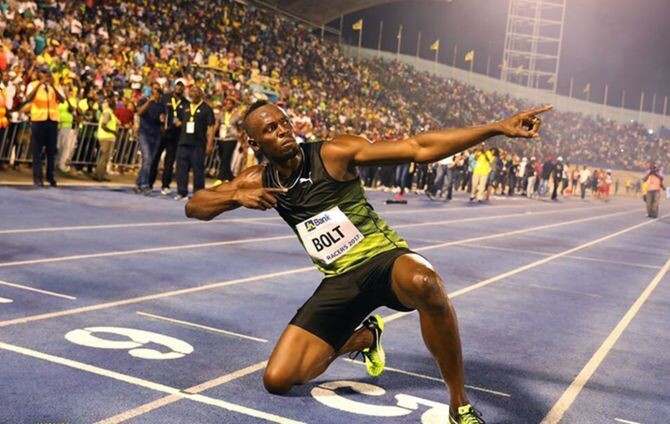
The 100m and 200m world record holder is trademarking the image to monetize the pose on clothing, shoes, jewellery and restaurants.
According to the USPTO, it can take up to 24 months for a trademark to be approved after filing.
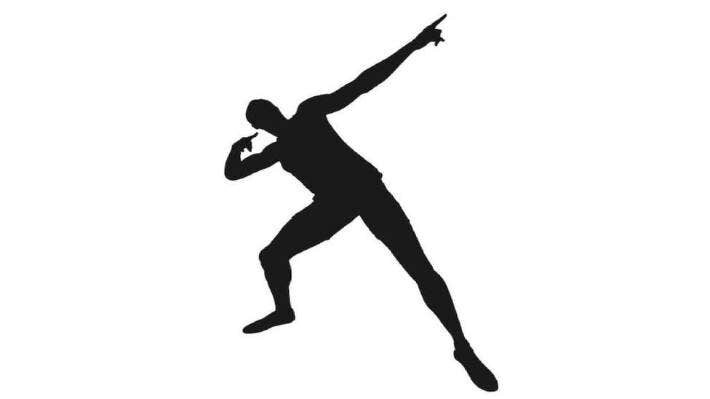
The pose made its first appearance when Bolt won 100m gold at the 2008 Beijing Olympics and by the London 2012 Olympics, the pose was a full-blown fad. This viral move is also known as the “to di world” pose, a popular Jamaican dancehall move before Bolt embraced it.
The 36-year-old retired from athletics at the 2017 World Championships in London after finishing third in the 100m behind U.S. sprinters Justin Gatlin and Christian Coleman. Bolt still holds the 100m and 200m world records and is often described as the greatest sprinter of all time.
(08/31/2022) ⚡AMPby Marley Dickinson
Everything You Need to Know About Running with a Group
Running is often thought of as a solo sport, but you're missing out if you always hit the roads by yourself. Group running can enhance your athletic experience.
What Is Group Training?
Group running is simply organized training, usually arranged by a local training association, running store, or health club. Training groups may meet once per week or several times during the week for a variety of running-related workouts.
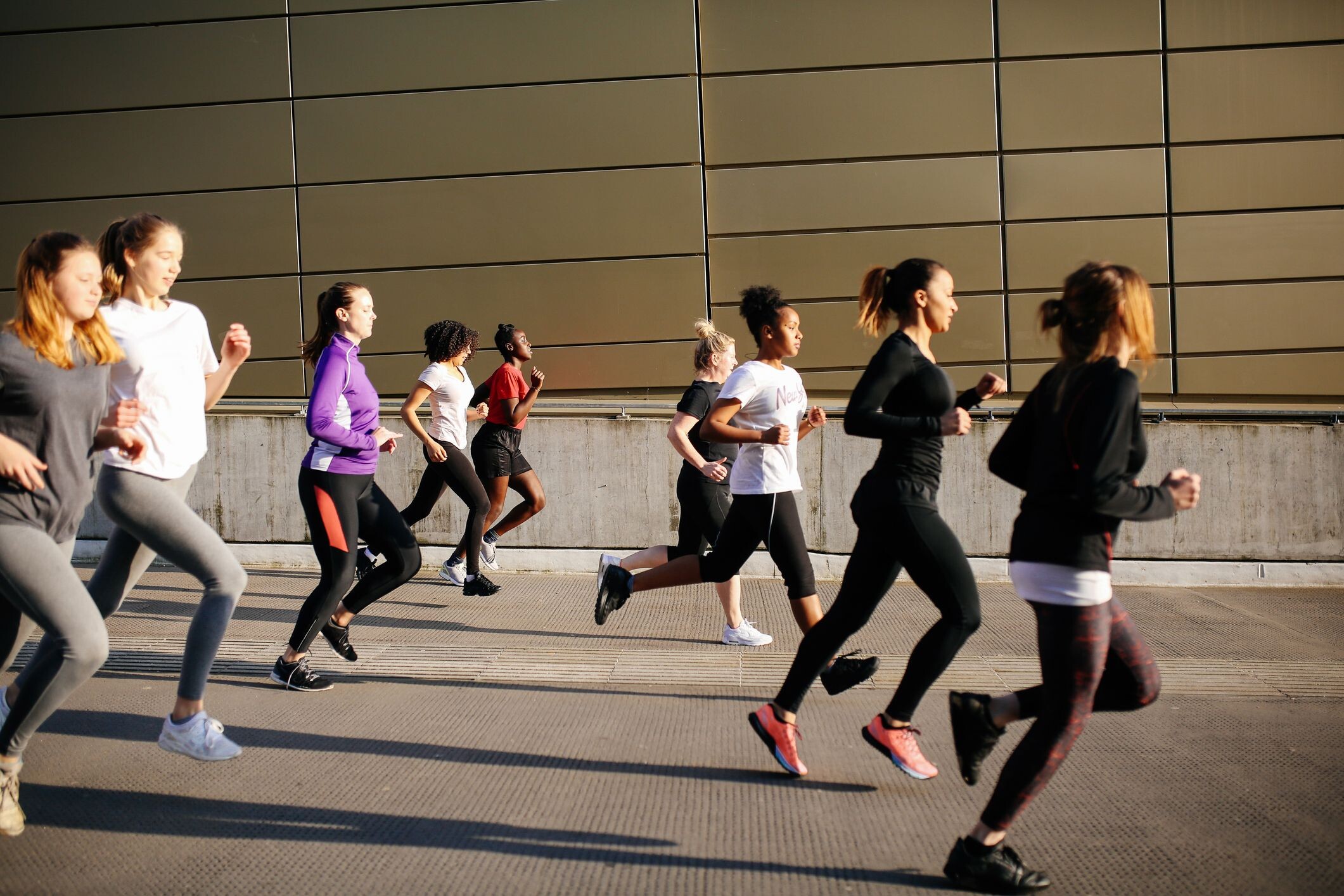
Usually, runners of all abilities are welcome, although you will probably be grouped according to your running pace. For example, there may be different sub-groups within a large group so that those running a 10-minute mile are not required to keep pace with those running a 6-minute mile.
Types of Running Groups
There are different types of running groups. Some training groups are organized around a specific goal. For example, those running a marathon might meet for weekly long runs to prepare for their event. But there are also other groups for athletes who participate in 10Ks, 10 mile, and half marathon events. And there are track groups for runners who participate in sprint distance events.
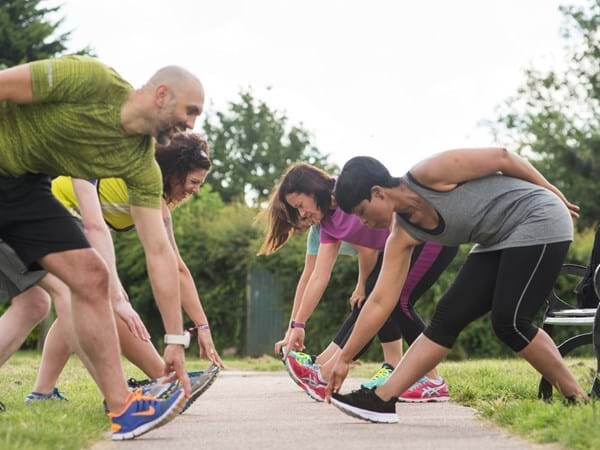
If you don't participate in running events, there are also running groups for people who simply enjoy the sport of running. Generally, these groups include running workouts along with other social functions. There are also running groups affiliated with charity organizations, such as Leukemia & Lymphoma's Team In Training (TNT).
Group Running Etiquette
Regardless of the type of group you join, there are certain rules of the road that you should follow to make your experience—and the experience of your fellow runners—more enjoyable.
First, leave your headphones at home. Engage with your fellow runners during the workout. Don't be afraid to start conversations. For example, you can ask questions about upcoming running events or previous running experience. Positive and friendly conversations will help the time fly by, especially on long runs.
Next, always follow traffic rules. Stay to the right side of the road, cross busy streets with the traffic signal, and try not to run more than two abreast to allow cars and cyclists to pass. Always run against traffic so that you can see oncoming cars and trucks.
Also, run with your group. While this rule might seem obvious, there may be times when you feel that you want to separate from the pack and run ahead or fall back behind the others. Be sure that you choose the right pace group and stay with the others to enhance the experience.
Lastly, respect your fellow runners if need to spit, blow your nose or pass gas. Move to the side or back of the pack so that others are not affected by your understandable but less-than-desirable bodily functions.
Benefits of Group Running
It doesn't matter which kind of running group you choose. You can expect to enjoy a wide range of benefits from the experience of running with others who share your love of the sport.
Safer Workouts
It's obviously much safer to run in pairs or with a group. It's tough to get lost if you're with a group and, even if you do take a wrong turn, you have each other to figure out how to find your way.
When running with a group, you're less likely to need to listen to music, which means you won't be distracted or not able to hear cars or other hazards. And if someone in the group gets injured or sick, there's always someone there to help. Potential attackers are also more likely to strike a lone runner than they are a group.
Creative Stimulation
Some people prefer to run alone so they can sort out their thoughts and do some brainstorming. But running in a group may actually get your creative juices flowing even more than running solo because you're able to bounce ideas off other people and ask them for feedback on a project or problem you're working out.
Increased Motivation
With group running, you get your own personal cheering squad. Members of running clubs and teams root each other on during races and support one another through long runs.
You'll also be more motivated to stick to your training because you and your running partners will hold each other accountable. It's harder to blow off a workout when you know that your teammates are expecting you to show up.
Improved Performance
Let's face it: everyone thrives on a little healthy competition. When you're running with others who are encouraging you to run faster and harder, it's easier to take it to the next level. When running alone you may be tempted to cut your workout short, but trying to keep up with running buddies encourages you to do that extra hill repeat.
Career Benefits
While some deals are sealed on the golf course, plenty of important business conversations have also taken place between runners on the road. Running with co-workers, clients, or even your boss is a great way to network and build your professional relationships.
Also, meeting new people through running is also a great way to expand your professional circles and potentially find a new job, make new contacts, or learn about other business opportunities.
Reduced Boredom
It's tough to get bored when you're running with others. You're also more likely to explore new running routes when running with a group, which will definitely make your runs more interesting.
Sense of Community
Running with a group gives you an incredible sense of community. Whether you're racing together, volunteering at a race, or cheering on your teammates, it's fun and rewarding to be connected with like-minded people and be part of something that's bigger than you. Runners can really relate to each other and are supportive of one another through running (non-running) problems and triumphs.
Expanded Social Circle
Anyone who has run with a group knows that it's a great opportunity to get to know people with similar interests. Many people have met their spouse, significant other, or close friends through a running group or club. Some runners end up traveling to destination races with friends they've met in running clubs or charity running programs.
Drawbacks of Group Running
While these group running benefits are substantial, there are some downsides to this type of workout.
For example, your group is not likely to have a lot of flexibility in terms of scheduling. Typical training times include early morning and early evening. If your schedule changes regularly and you have to skip workouts often then group training may not be for you.
Also, you may have good reasons for running alone. Some people need the experience of aloneness that running solo allows. For example, if your job requires you to be actively engaged in conversations all day long, you may need some quiet time at the end of the day.
(08/30/2022) ⚡AMPby Christine Luff
Two more Kenyan marathoners suspended for failing doping tests
Two more Kenyan distance runners have been suspended by the Athletics Integrity Unit (AIU) for failing drugs tests, including Hangzhou Marathon winner Michael Kunyuga.
Kunyuga tested positive for norandrosterone and Maiyo Johnstone Kibet returned a sample found to contain erythropoietin (EPO).
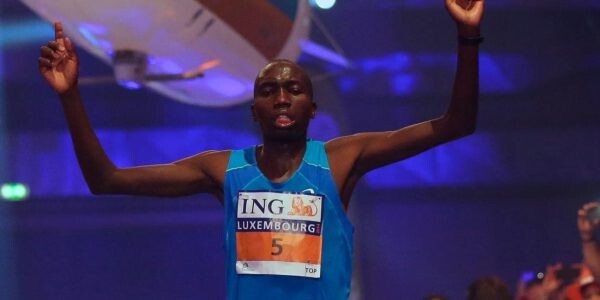
Both are provisionally suspended as a consequence.
Norandrosterone is a product of nandrolone, an anabolic androgenic steroid known to accelerate muscle growth and recovery, while EPO boosts an athlete's endurance as it gives blood a greater capacity for carrying oxygen.
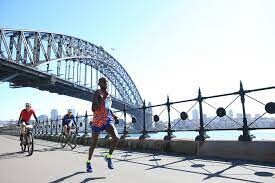
Kunyuga has a personal best in the marathon of 2 hours 6min 43sec, which ranks him among the 250 fastest athletes of all time.
The Kenyan's best results include winning the 2018 Hangzhou Marathon in 2:10:37 and placing fifth in the 2020 Seville Marathon, when Kunyuga set that personal best.
Kunyunga also won the Hengshui Lake Marathon and Padova Marathon in 2017.
Kibet's personal best in the marathon is 2:10:02, set in 2011 in Frankfurt.
In 2016, Kibet triumphed at the Wuhan Marathon.
The provisional suspensions are the latest in a long line of doing sanctions levied against Kenyan athletes.
Fifty banned Kenyans are listed on the AIU's database of ineligible persons, a national tally smaller only than Russia's.
A further seven, including Kibet and Kunyuga, are provisionally suspended.
Kenya is one of seven Category A nations deemed by the AIU to have the highest doping risk, along with Bahrain, Belarus, Ethiopia, Morocco, Nigeria and Ukraine.
(08/30/2022) ⚡AMPby Ali Iveson
Jakob Ingebrigtsen wants to triple at the 2024 Olympics
Last Thursday, before Norwegian star Jakob Ingebrigtsen ran the world-leading time of 3:29.05 at the Lausanne Diamond League meet, he revealed to the media that he hopes to run the distance triple of 1,500m, 5,000m and 10,000m at the 2023 World Championships and the 2024 Paris Olympics (like Sifan Hassan did at Tokyo 2020).
Ingebrigtsen planned to do the triple at the 2022 European championships in Munich, but COVID-19 prevented him from attaining the qualifying standard before the meet. “I got COVID when I was supposed to race the 10K, so I couldn’t put that into the plan for the summer.”
Instead, he hopes to attempt the triple at the world championships and the 2024 Olympics. He said he hadn’t seen the schedules yet, but added, “I hope World Athletics officials have made it possible.”
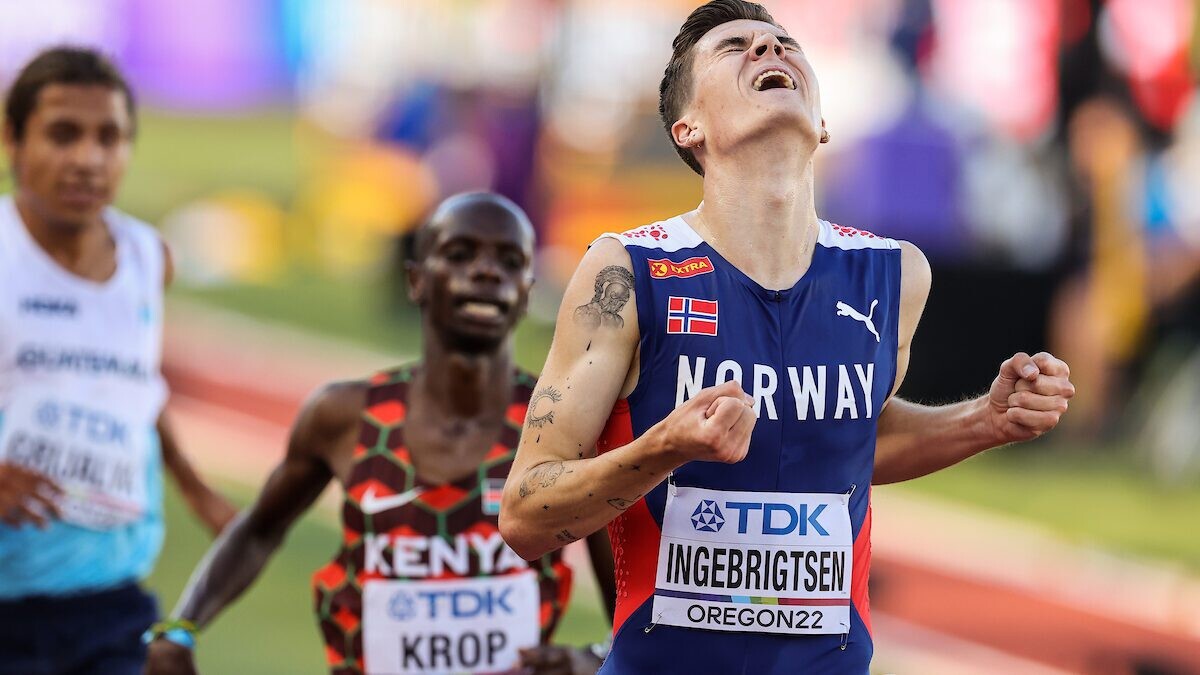
On Friday, World Athletics announced the schedule for the 2023 World Championships in Budapest, and here’s what it would require:
Day 1, 7:05 p.m.: 1,500m first round
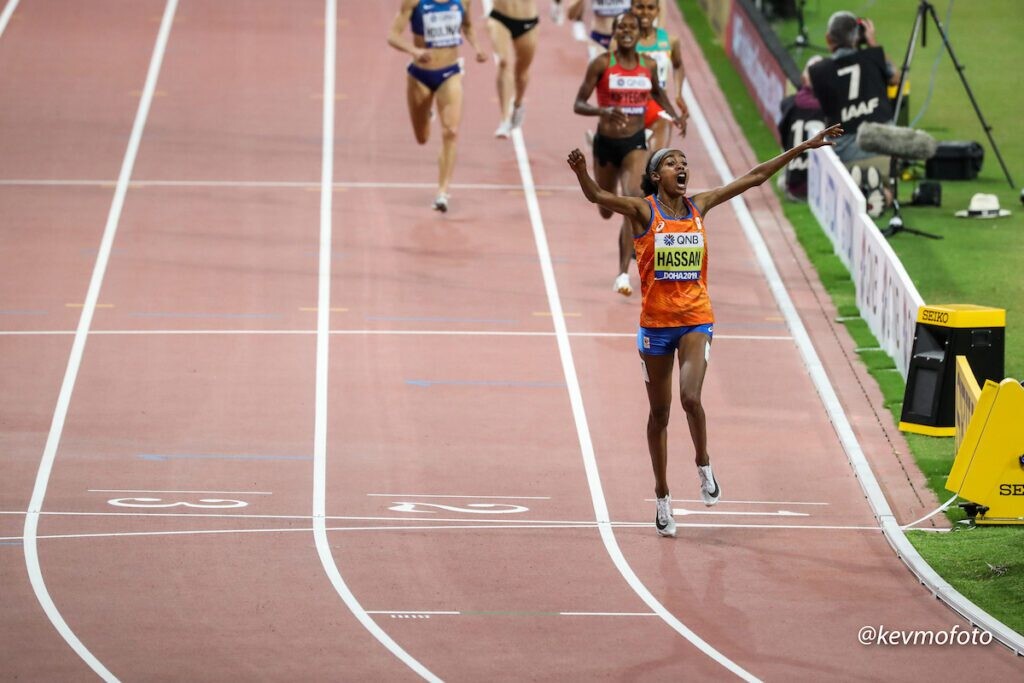
Day 2, 5:35 p.m.: 1,500m semis
Day 2, 6:25 p.m.: 10,000m final
Day 5, 9:15 p.m.: 1,500m final
Day 6, 7:00 p.m.: 5,000m semis
Day 9, 8:10 p.m.: 5,000m final
The triple would be difficult as currently scheduled. On Day 2, Ingebrigtsen would have to run the 1,500m semi-final and then the 10,000m final within 45 minutes of each other. Is it possible? Yes, but he would need to run conservatively in the semi-final and then has to hope the 10,000m final goes out slowly.
The great Emil Zatopek is the only runner to pull off the triple–at the 1952 Helsinki Olympics. Zapotek won the men’s 5,000m, 10,000m and the marathon, breaking Olympic records in each event.
Hassan attempted the distance triple at the 2020 Olympics in Tokyo but came up short with a bronze in the women’s 1,500m.
There are a few changes to the 2023 schedule over Eugene 2022. The length of the competition has been changed to nine days (Aug. 19-27), as opposed to the previous 10-day schedule used for the 2022 World Championships. Another change in the time of the finals: all track and field finals will now be scheduled for the evening sessions.
(08/30/2022) ⚡AMPby Running Magazine
Paris 2024 Olympic Games
For this historic event, the City of Light is thinking big! Visitors will be able to watch events at top sporting venues in Paris and the Paris region, as well as at emblematic monuments in the capital visited by several millions of tourists each year. The promise of exceptional moments to experience in an exceptional setting! A great way to...
more...Six reasons to try a cross-country race this fall, It's time to lace up your spikes and get into some off-road racing
Although it doesn’t feel like it outside, fall is coming up soon, and that means cross-country season is right around the corner. For many runners, cross-country is how they first got into running. It was a fun extracurricular activity in elementary and secondary school, but for a lot of people, school is where cross-country stayed. Luckily, that doesn’t have to be the case. Cross-country is for people of all ages, not just students, and every runner should consider entering a race this fall. Not convinced? Here are six reasons why you should give the sport another shot.
1. It’s a great challenge
Cross-country presents a different kind of challenge than the ones you’ll face running on the road or track. You hit seemingly never-ending hills, steep descents, mud, rain, blistering heat, frigid cold — cross-country delivers on all fronts. As runners, the challenge and the difficulty are exactly what draw us to the sport, which is why racing cross-country is a must-do for anyone who hasn’t recently. You’re going to love it. And hate it. And then love it again.
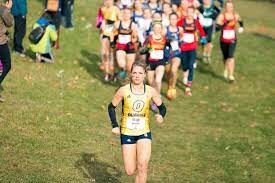
2. It’ll improve your mental game
Since cross-country provides such a unique and tough challenge to runners, it’s so important to be strong mentally. Mental strength is important for all types of running, but especially so when you’re climbing a muddy hill in zero degree weather on a weekend morning. It’s so easy for anyone in that situation to say, “Screw this,” and walk off the course or take it down a notch and cruise to the finish line. But you’re not going to let yourself do that. If you start a race, you’re going to finish it with all you’ve got. You’re probably already pretty mentally tough, but after a cross-country race or two, you’re going to notice how much easier it is to push past the walls you encounter in future training and racing.
3. It’s a blast from the past
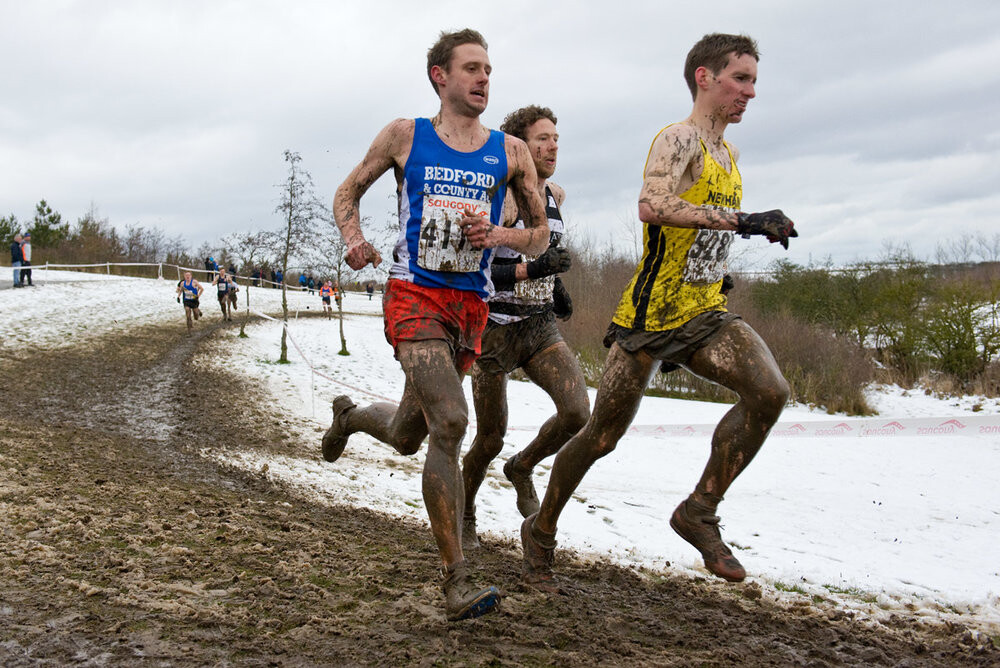
You loved cross-country when you were a kid. Get back out there and enjoy the nostalgia a bit.
4. You’ll enjoy a team atmosphere
You don’t have to race on a team in order to enter a cross-country race, but if you have the chance, you should definitely join one. This will not only make training so much easier, but it will also help you on race day, because with a team, you’re no longer just running for yourself. Every position and every runner matters on a cross-country team, so even if you’re having the worst race of your life, you have to bear down and give it your all. If you don’t do that and you let other runners pass you, then your team’s score will suffer because of it. Plus, it’s just fun running with teammates and friends.
5. Learn to focus on feel
When you’re on the cross-country course, time and pace no longer matter. This may bug a lot of people who live for the data on their GPS watches, but really, it’s a good thing. Cross-country races will give you the chance to practice listening to your body and racing based on how you feel instead of running based on a pace on your watch. Once you get good at running on feel, it’ll help you in all facets of running, whether you’re on the trails or anywhere else.
6. It’ll be fun
This is really the only reason you should need. You’re going to love it and you’re going to have fun. So get up and sign up for a race. You won’t regret it.
(08/30/2022) ⚡AMPby Ben Snider-McGrath
The original editor of Runner's World magazine has had a rough couple of years
"I have been trying to get ahold of Joe Henderson for a couple of years," says MBR publisher Bob Anderson. "Joe was my first Runner's World editor many years ago. We worked together for years before I sold RW to Rodale Press in 1984. Joe has broken his silence and I wanted to share the message he posted on FB this last weekend. My heart goes out to Joe. We have missed you..."
A message from Joe Hendeson:

"You might have noticed. Running Commentary had an unbroken streak from 1982. Then it suddenly stopped coming to you about three years ago.
Writing for public consumption stopped then. Running ceased too, possibly forever.
At the least, I owe you an explanation.
In November 2019, I suffered a stroke. Much of the year 2020 does not exist for me, so far out of everything was I then.
I don’t remember at all the first two places I lived after having the stroke. The third is a partial memory,
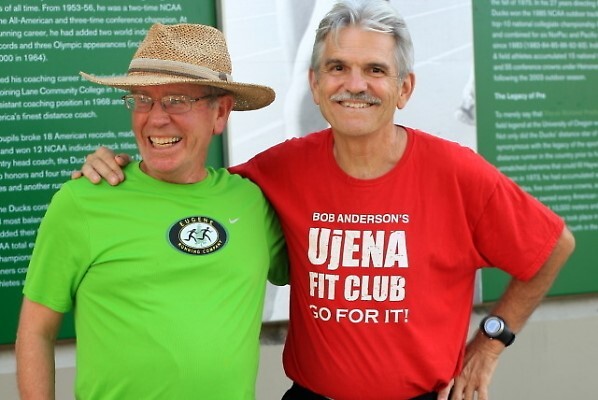
I don’t remember falling out of bed and hitting a low-slung bookcase, only waking up on the floor — missing two front teeth, with a broken nose, broken right hand and left eye that pointed the wrong way.
Worst, my wife Barbara died in early 2020. I wondered for months afterward why she quit coming to see me.
It turned out that the hard fall was the beginning of a wake-up call. It was a slow but steady return to a new normal.
The physical therapist dismissed me after a year — with the warning to always carry a phone in case of a fall. One eye doctor said I was stuck with the odd eye condition.
He did perform successful cataract surgery on both eyes. Another doc later told me that the left eye was moving toward its proper position, though ever so slowly.
The right leg remained affected, but much less so than at first. I was told that it as 95-percent impaired when first tested. It is now five percent off — but still requires a walker. Running is impossible, in the third year post-stroke (or fall).
I now live at a senior center called Shalom House. I don’t try to run, and use a walker for daily walks of 30 minutes or more (which sounds better than saying a mile or so).
My running is no longer personal, but my interest in the sport remains strong. I attended a small part of the Olympic Trials last year, and more of the Pre meet, NCAA and Worlds in 2022. I still hope to get back to coaching, if the runners will have an ex-runner whose running days are increasingly ancient,
Best of all, my mind is almost fully awake again. I realize that my wife is no longer with us. I returned to published writing with this brief tribute on the second anniversary of her passing:
Barbara Hazen Shaw — July 27, 1944, to January 19, 2020.
My dear Barbara. I treasure our time together — though that time was too short at more than 30 years, and it ended too soon, several months before the actual ending.
A stroke incapacitated me at first. But I’ve made up for it by thinking of you every day since that fog has cleared.
In your 75 years, you lived a life to be admired — if not imitated. On your deathbed, you promised to keep “exploring the universe” in your own ways.
This you will do, I am sure. We should all be so lucky.
So what does this have to do with Running Commentary? Perhaps nothing if you never subscribed, and maybe just this if you did.
I’ve felt lately that I have taken advantage of you while giving nothing in return. So between now and early next year, I’ll send you chapters from a yet-unpublished book, Miles to Go."
(08/29/2022) ⚡AMPby Joe Henderson
America’s Camille Herron finished sixth at the Comrades Marathon on August 27
"Oh Comrades Marathon you were magical! Thank you everyone for making us feel like rockstars out there. I’m proud to finish 6th this time and another top 10 finish. It was an honor to be here again and share the road with you all. Enjoy the moment for all your hard work," posted Camille Herron.
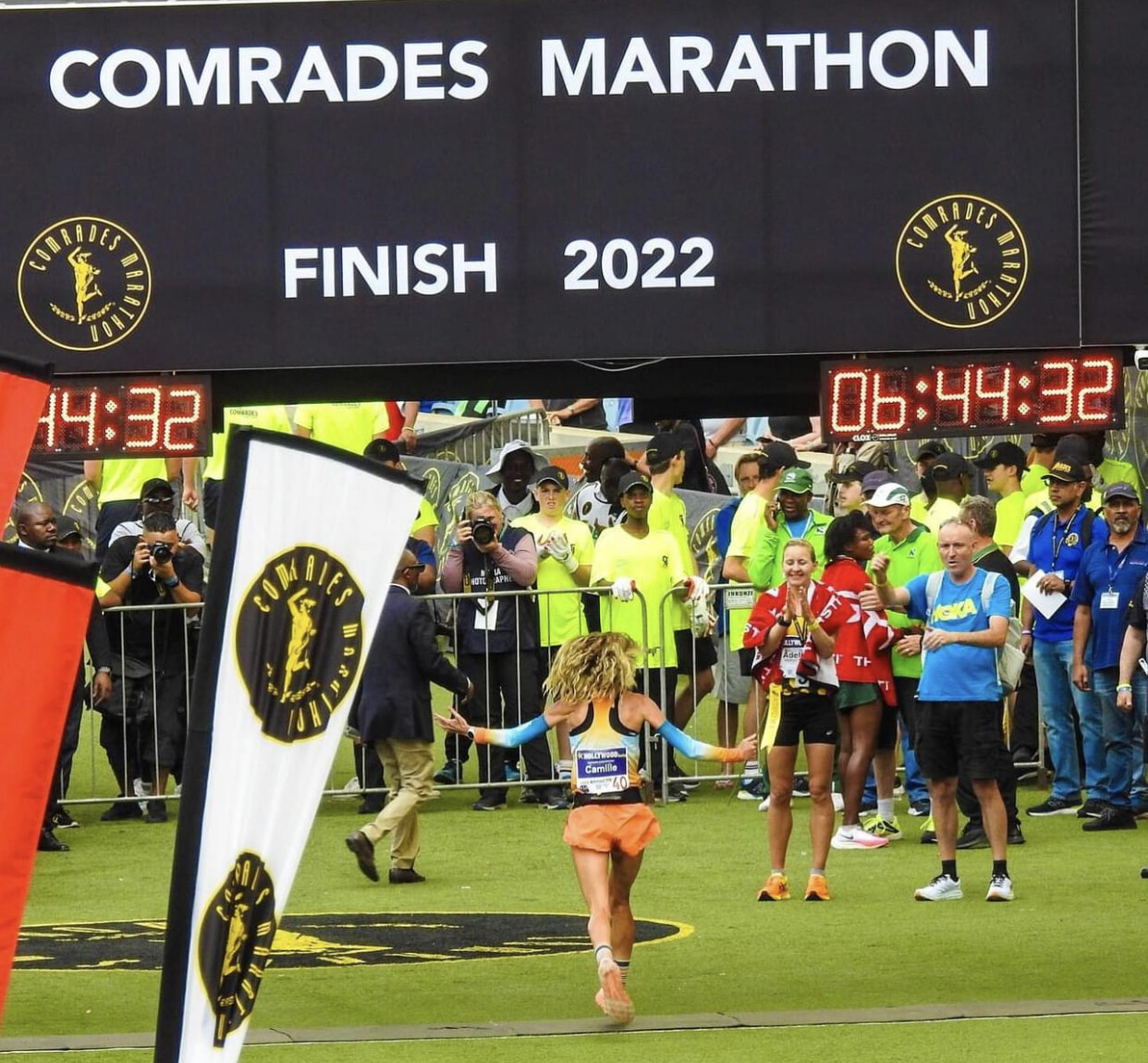
Camille Herron is an American ultramarathon runner. She is the first and only athlete to win all three of the International Association of Ultrarunners' 50K, 100K, and 24 Hour World Championships.
She won the 2017 Comrades Marathon and holds several World Record times at ultramarathon distances, along with the Guinness World Record for the fastest marathon in a superhero costume.
In November 2017, she broke Ann Trason's 100-mile Road World Record by over an hour in 12:42:40. She broke her 12-Hour and 100 Mile World Records in February 2022 at the Jackpot 100/US Championship, winning the race outright and beating all of the men.
In April 2022, she became the youngest woman to reach 100,000 lifetime miles. She is the first and only woman to run under 13 hours for 100 miles, exceed 150 km for 12-Hours, and to reach 270 km for 24Hrs.
(08/29/2022) ⚡AMPComrades Marathon
Arguably the greatest ultra marathon in the world where athletes come from all over the world to combine muscle and mental strength to conquer the approx 90kilometers between the cities of Pietermaritzburg and Durban, the event owes its beginnings to the vision of one man, World War I veteran Vic Clapham. A soldier, a dreamer, who had campaigned in East...
more...Russian Runner Alexandra Morozova Wins Women's 2022 Comrades Marathon Despite Controversy
Alexandra Morozova put a sideshow aside to emerge victorious in the 2022 Comrades Marathon today.
The Russian runner finished the grueling race in a time of 06:17:46.
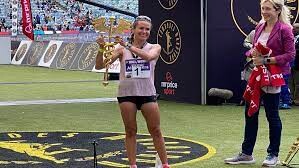
As was reported by ENCA, she had been barred from participating in the even by the organizers, who had been instructed to do so by Athletics South Africa acting on a recommendation by World Athletics. Russia is currently experiencing isolation from the world of sports following the fallout from the country's ongoing invasion of Ukraine.
However, EWN reported that she launched an interdict with the Pietermaritzburg High Court to challenge her barring, which turned out to be a successful one for her.
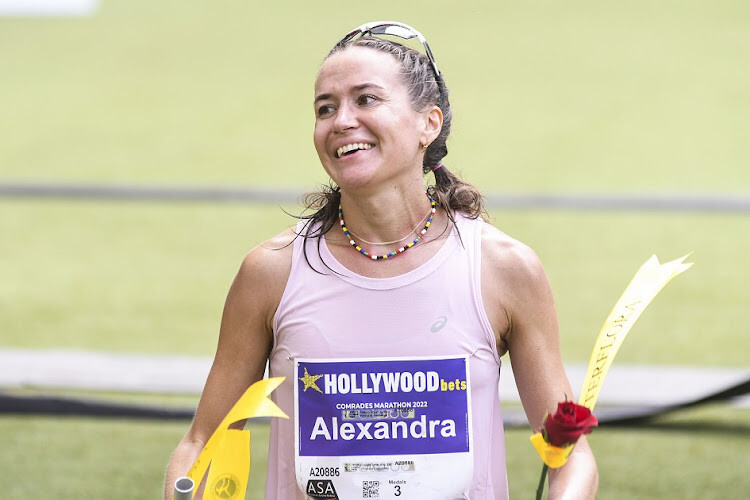
Morozova said after the win:
"It was amazing. All of my dreams came true today. It was the most difficult marathon of my career. I'm happy to be here to achieve this win. It was my turn this year.
"Thank you so much to the citizens of South Africa for the warm greetings. It was so special to run into the stadium and feel this warmth from the crowd.
Thank you so much for the opportunity."
EWN also added that she will have to return to the court in November to find out if she will receive her prize money or not.
(08/29/2022) ⚡AMPby Keba Mothoagae
Comrades Marathon
Arguably the greatest ultra marathon in the world where athletes come from all over the world to combine muscle and mental strength to conquer the approx 90kilometers between the cities of Pietermaritzburg and Durban, the event owes its beginnings to the vision of one man, World War I veteran Vic Clapham. A soldier, a dreamer, who had campaigned in East...
more...Benefits and limits of speed training for endurance runners
Interval training, repetitions or speed work are terms many people taking up athletics will often hear but what do they mean, where should it fit within your training and what are the potential pitfalls you should avoid when introducing it into your plan?
This guide will help provide some fundamentals.
For the sake of this article, intervals, repetitions and speed work will all be seen as the same general type of training, though in reality some coaches will have slight variances in their interpretations of those different terms.
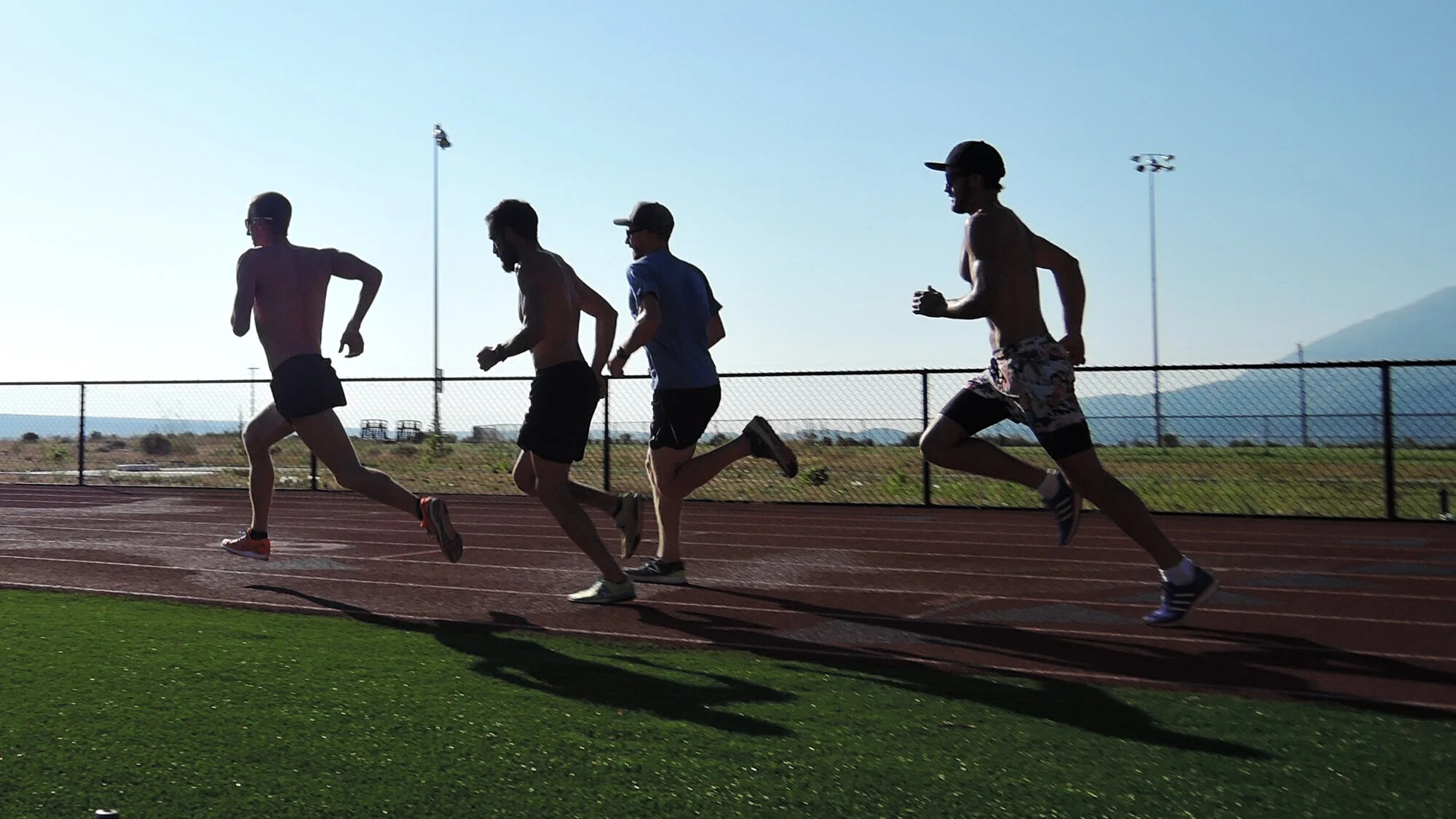
The theory behind speed training
When aiming to lower a personal best time, many coaches believe that running at paces quicker than or around your goal pace is important. This is for a variety of reasons not limited to:
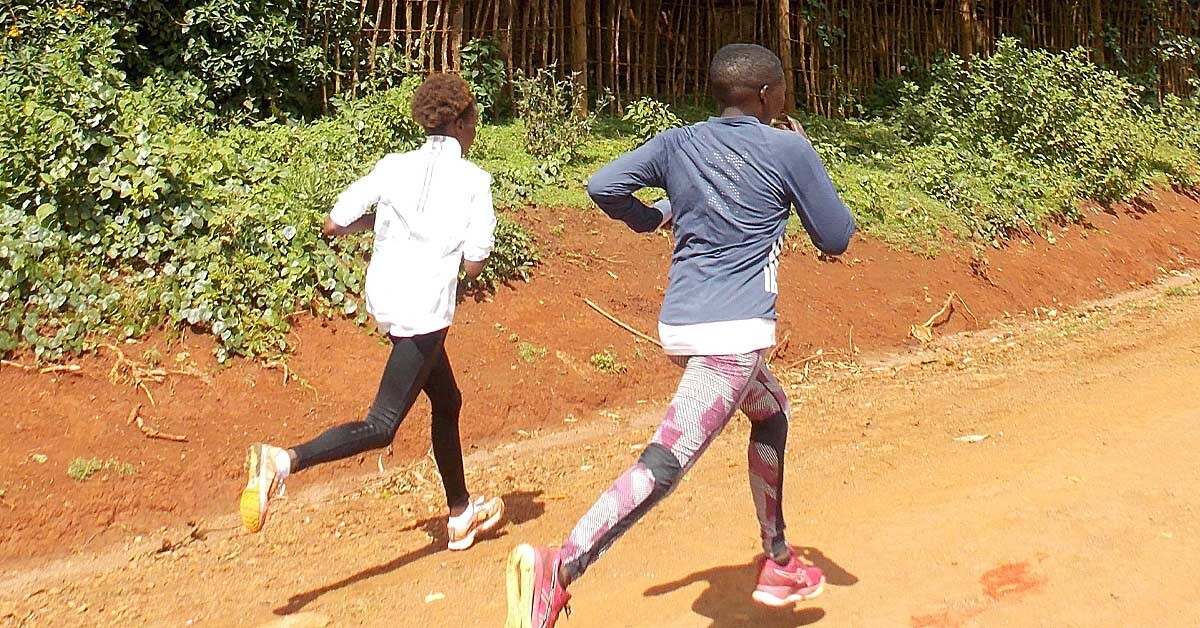
Preparing yourself mentally to run at those speeds and learning what it feels like physically
Stimulating the recruitment of fast-twitch muscles fibres
Fast-twitch muscle fibres are used for short, explosive movements as opposed to slow-twitch muscle fibres, which are less powerful but fatigue slower.
A higher proportion of fast-twitch muscle fibres will increase your top-end running speed while a higher proportion of slow-twitch muscles may increase your overall endurance. Striking a balance will be important to most runners, competing in all but the most extreme ultra-marathon distances.
Improving your running economy (how efficient you are in terms of the way you run) both at top speeds and at slower paces
Slower running will likely improve your aerobic fitness but will not stimulate the body to produce fast-twitch muscle fibres in the same way speed training does. This is because the body does not require as many fast-twitch muscles fibres to run at slower speeds.
How important speed training is for you will be depend on the races you are planning to partake in, though most distances will benefit from it to some degree.
Are you aiming to complete an ultra-marathon or is the 1500m your goal race?
What does speed training look like?
In the same way that the importance of speed training will depend on what events you are planning for, your speed training will look different based on your planned event.
Runners aiming to run the 1500m may well do fewer shorter reps at higher speeds, with 10,000m runners increasing the length of repetitions and sometimes the volume too.
Please note the sessions detailed below are not introductory sessions and should be worked up to over a period of months not weeks.
- Two typical 1500m sessions
3 to 4 x 500m with two to three minutes recovery between repetitions. These may be done at your target 1500m pace
3 x (800m, 200m, 200m) – three minutes between sets (after completing all the efforts within the brackets), 90 seconds between the repetitions (those within brackets)
- Two typical 10,000m sessions
8 x 1000m with two minutes recovery between efforts. All run at 10,000m goal pace.
1600m, 1200m, 800m, 800m, 1200m, 1600m. Two to three minutes between efforts. These would ideally be run slightly outside 10,000m goal pace for the longer efforts, and slightly inside for the shorter efforts. The idea is to keep the paces reasonably even, with a marginal increase in speed for the shorter efforts if possible.
How speed training fits with your overall training programme
It is impossible to sustain these types of sessions day after day, due to the significant impact each session has on your body.
Many runners choose to incorporate some kind of speed training once a week with some experienced and elite-level runners increasing this where they have more time to recover.
It is important to see how your body responds to these sessions, be honest with the impact they have and be conservative where they may cause a risk of injury.
In order to get the maximum benefit from these sessions, allow your body to recover by running slower than you normally would on the day or two following the session.
The dangers associated with speed training
Runners should be patient and build up to any speed training they do. If you try it too early without preparing your body through some easier running, muscle injuries can be more likely.
Alongside lighter running, strength and conditioning exercises for your calves, quads and hamstrings can help ensure that you are better prepared when you first start speed training.
As mentioned, these sessions will tire you out significantly more than most slower running, so be sure to watch out for the signs of overtraining, such as increased fatigue, excess soreness and an elevated heart rate when resting.
If you experience any of these, it may indicate it is time to back off your training, and be sure to speak to a qualified professional where possible to provide you the best advice.
Finally running at increased speeds may bring with it the temptation of lighter, faster shoes. These can be useful but the less cushioning can cause greater strain on your leg muscles.
Be sure to slowly introduce these to your sessions so that your legs have time to adapt.
Enjoy the training.
Think about how important speed is to your running goals.
(08/29/2022) ⚡AMPby George Mallett (World Athletics)
World Half Marathon silver medalist Kibiwott Kandie takes a break from road races to focus on track
Kibiwott Kandie has taken a break from road races to focus on the track ahead of next year's World Championships in Budapest.
Kandie said the NOC-K president Paul Tergat challenged him to try track and he decided to take the challenge by debuting in the 10,000m race at the Commonwealth Games in Birmingham, where he won a bronze medal.
“Tergat has always encouraged me to try track running. I gave it a shot during the Commonwealth Games and I did well. I am going to dig deep into track,” he said.
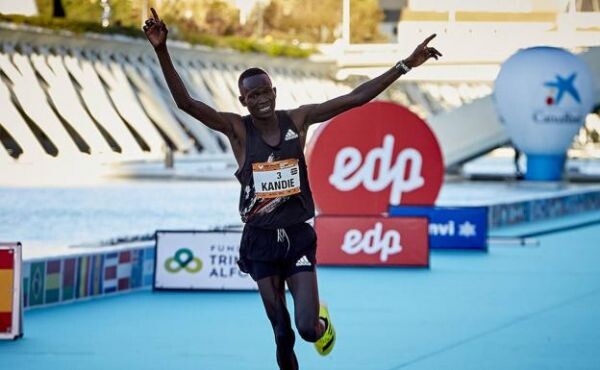
Kandie revealed that his main focus is to qualify for next year’s World Championships in Budapest, where he intends to run the 10,000m.
He revealed that winning a bronze medal at the Commonwealth Games had motivated him a lot and his next target is to invest more time and resources in training.
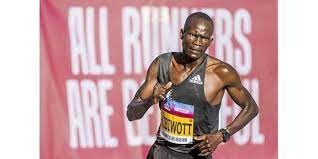
“I am training extra hard to book a slot in next year’s World Athletics Championships, where I want to run the 10,000m. The bronze win was a great achievement because that was my first international track competition. This was enough proof that I can achieve more not only on the roads but the track too,” he said.
Kandie will be among the athletes who will participate in the Brussels Diamond League scheduled for September 2. He will have the company of Kenyan compatriot Sabastian Sawe.
The two are the only athletes who have confirmed their participation in the race. Kandie has a personal best time of 27:20.34 in the 10,000m, which he ran at the recent Commonwealth Games in Birmingham while Sawe's personal best time is 27:09.46.
Kandie, who has had a good season with the Commonwealth Games and the 10k race win in Germany, will be hoping to replicate the same performance in Brussels.
“My training has been okay for the past three months and I hope to keep up the intensity. I think that’s why I did my best in the 10k road race and the Commonwealth Games 10,000m. I just hope I will post a good result in Brussels,” he said.
(08/29/2022) ⚡AMP
by Abigael Wuafula
Ethiopians Yalemzerf Yehualaw and Jemal Yimer clinched repeat victories at the Antrim Coast Half Marathon
Adding another strong run to her CV, Yalemzerf Yehualaw clocked 1:04:22 to retain her crown at the Antrim Coast Half Marathon, a World Athletics Elite Label Road Race, in Larne, Northern Ireland, on Sunday (28).
Her Ethiopian compatriot Jemal Yimer also became a back-to-back winner at the event, the national record-holder running 59:04 as both athletes set UK all-comers' records.
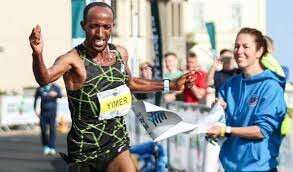
For Yehualaw, who ran a 1:03:51 half marathon PB in Valencia last October, her performance is the equal fifth-fastest ever women’s half marathon achieved on a record-eligible course. The 23-year-old appeared to have broken the women’s world record with her 1:03:44 run in Larne last year, but the course was later found to have been 54 metres short. That world record has since been taken to a remarkable 1:02:52 by Letesenbet Gidey, who achieved the feat in Valencia last October, and Yehualaw was on pace to challenge that mark in the early stages of Sunday’s race in Larne. On a fast opening section of the course, she was paced through 5km in 14:44, with Gidey having recorded 15:00 for that split in Valencia 10 months ago.
Although that pace couldn’t be maintained, Yehualaw – who set a world 10km record of 29:14 in Castellon in February – still passed the 10km mark in 29:52, running behind pacemaker Roy Hoornweg and alongside Britain’s Callum Hawkins, the two-time world marathon fourth-place finisher who is making a comeback after injury.
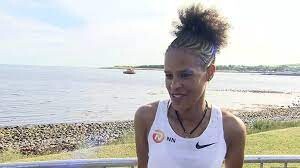
Hoornweg stepped aside when the group reached 13km in around 39:10 and there started Yehualaw’s solo run to the finish line, with Hawkins striding ahead. Yehualaw, who ran the fastest ever women’s marathon debut with 2:17:23 in Hamburg in April, went on to pass the 15km mark in 45:27 and reached the finish in 1:04:22. Only she, Gidey, Ruth Chepngetich and Girmawit Gebrzihair have ever gone faster for the distance.
Moving to 12th on the world all-time list was Yehualaw’s compatriot Tsehay Gemechu, who passed 10km in 30:33 and went on to finish in a PB of 1:05:01 for the runner-up spot. Kenya’s Beatrice Chepkemoi Mutai was third in 1:07:37 and Ireland’s Fionnuala Ross fourth in 1:14:00.
“I am so happy to win this race,” Yehualaw said on the live BBC stream. “I was thinking of the world record. The first 10km was fast, the last 5km was slower. I will try it next time. I hope I will be back, I like this race.”
In the men’s race, Yimer was part of a lead group that passed 5km in 14:10 and he broke away a couple of kilometres later to lead by nine seconds at the 10km mark. He clocked 28:16 at that point, ahead of Kenya’s Alfred Ngeno and Shadrack Kimining, plus Ethiopia’s Tesfahun Akalnew.
Yimer had increased his lead to more than a minute by 15km, which he passed in 42:13, and he continued untroubled to reach the finish line in 59:04.
Ngeno held on for second in 1:01:00, while Kimining was third in 1:01:08 and Akalnew fourth in 1:01:44. Britain’s Marc Scott finished fifth in 1:02:58.
(08/29/2022) ⚡AMPby World Athletics
MEA ANTRIM COAST HALF MARATHON
The MEA Antrim Coast Half Marathon 2022 has been approved by World Athletics as an Elite Event. The World Athletics certified course takes in some of the most stunning scenery in Europe, combined with some famous landmarks along the route. With it's flat and fast course, the race is one of the fastest half marathons in the world. Starting...
more...More Evidence That Fitness Trackers Actually Do Make You Move More
A recent review highlights the benefits of wearables in helping you get more physical activity into your day.
A comprehensive research review published in The Lancet Digital Health suggests there are far more benefits than downsides to wearing a fitness tracker.
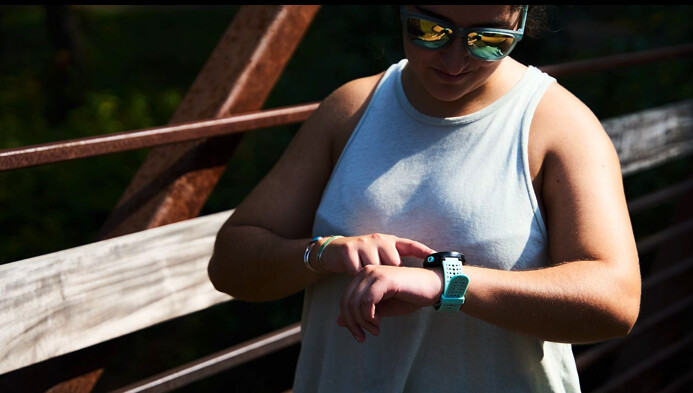
On average, people who wore a fitness tracker got an extra 1,800 steps and walked for 40 minutes more daily compared to non-tracker groups.
Ever since they came onto the market, fitness trackers have prompted varying opinions about their efficacy. Some studies suggest these wearables can have a negative psychological impact or that they have limited utility, because many people end up abandoning them within a few months. On the other hand, studies suggest checking your watch stats during a run can keep your performance on par, particularly if you’re feeling mentally taxed.
A comprehensive research review published in The Lancet Digital Health suggests there are far more benefits than downsides to wearing a fitness tracker.
On average, people who wore a fitness tracker got an extra 1,800 steps and walked for 40 minutes more daily compared to non-tracker groups.
Ever since they came onto the market, fitness trackers have prompted varying opinions about their efficacy. Some studies suggest these wearables can have a negative psychological impact or that they have limited utility, because many people end up abandoning them within a few months. On the other hand, studies suggest checking your watch stats during a run can keep your performance on par, particularly if you’re feeling mentally taxed.
(08/28/2022) ⚡AMPby Runner’s World
How Dani Moreno Became the First-Ever American Woman to Podium at the OCC Race at UTMB
"How far is the podium?!" Dani Moreno yelled to her French friend as she crested a high point in the race at this week's hyper-competitive OCC race, based in Chamonix, France.
"Too far!" her friend responded.
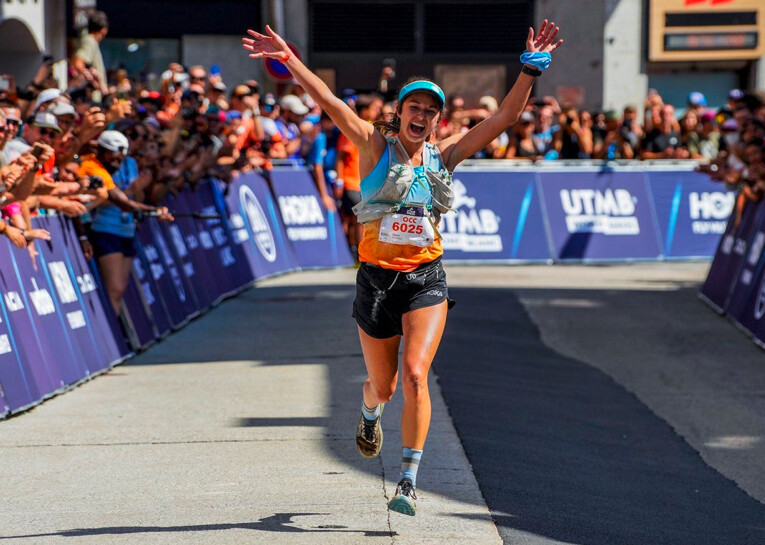
He would later regret saying that. Why? Because 6 hours and 17 minutes after starting, Dani Moreno, 30, from the Mammoth Lakes, California, secured her spot on the podium to finish in third place, the first-ever American woman to reach this level at OCC.
The OCC (Orsieres-Champex-Chamonix) race is a 56km (35 mile) option with 3500 m (11,500 feet) of elevation gain. Unlike the UTMB 100-mile race that circumnavigates Mount Blanc, starting and finishing in Chamonix, France, the OCC option begins in Switzerland and stays in the Valais region, until the finish, where it drops into the Chamonix valley. Winners expect to arrive at the finish in under six hours, while the cutoff is 14 hours, 30 minutes.
Weeks prior to OCC, Moreno experienced an unusually difficult race at Sierre-Zinal, in Switzerland. Before the race, she lost someone close to her back at home and a funeral service was the week of the race. She thinks the emotion caught up with her.
"I went into that race realizing I hadn't fully grieved," said Moreno. "I didn't represent myself and all this work I'd done." But after overwhelming support from friends and family, she recalibrated for OCC and showed up ready to compete. Her fiance traveled to Chamonix to help crew, along with a couple of friends.
Early in the race, Moreno would pass competitors on the ups and get passed on the downs, and yet she kept saying to herself: trust, trust, trust. Trusting in her strengths and pacing was critical, and it paid off halfway into the race.
"I passed five girls and moved into fourth at the halfway point," she said. "I could see the third-place woman but didn't know what was happening in front of them. Then third place and I were battling it out."
"You are As Strong As You Think You Are"
Moreno's secret weapon? Having fun-no matter what.
"It was fun the whole time," said Moreno. "Well, maybe the last downhill was agonizing because I was really trying to see if I could catch second place." She would make airplane arms, pretending to fly, while high-fiving spectators, always with a smile. "It felt like a fun day out with my friends."
Before the last descent, she received a huge boost after seeing her ultrarunning hero, Ruth Croft, who offered her words of encouragement. And at one of the last spots along the course, she remembers her fiance yelling to her: "You are as strong as you think you are!"
"Those last 90 minutes I sort of blacked out," said Moreno, digging deep to try and catch up to the second place woman. A few hundred yards from the finishing chute, she knew she'd done it, and the joy of her last few hundred yards was palpable. "It was a lot. First, I was like, I did it, but then I was like we did it. My coach, my family, everyone that believed in me."
Moreno finished in 6 hours and 17 minutes, only 7 minutes off the winning woman, Sheila Aviles, from Spain. The second-place woman, Nria Gil, finished only one minute ahead. Other American women in the top ten were Kimber Maddox (4th) and Allie McLaughlin (6th).
Running As Expression, Running As Order.
Dani Moreno moved to the eastern slope of California's Sierra Nevada Mountains after living and attending university at UCSB, where she ran cross country. Moreno is a four-time member of Team USA and a two-time USA champion. In addition to competing at the highest levels of the sport, Moreno maintains a full-time job at a construction firm, working in mergers and acquisitions.
"First, I was like, I did it, but then I was like we did it."
OCC was the longest race-both time and distance-that Moreno had ever pursued. But on her website, she writes that her goal is "to solidify myself as one of the best mountain runners in the world at the sub-ultra-distances." Refreshingly, she appears content with fine-tuning her performances in shorter trail races. So often in this sport, athletes feel pressure to level up to increasingly longer distances. For the next couple years, Moreno hopes to focus on marathon trail distances. However, more ultras are very much on the horizon.
"My plan is to do a 100K in the next year and a half, nestled between other shorter races, and keep inching my way up," she said. Moreno mentioned not wanting to do the CCC yet, the 101K option at UTMB. Yet.
"I'd like to do OCC again, and go about a little more aggressively this time." She plans to finish the Golden Trail Series, too, which she did last year.
Want to Run a UTMB Race? Here are Moreno's Three Rules:
Respect the weather. The weather in this dramatic region can change in an instant. Be ready for anything. "Practicing with your equipment is key," she says.
Learn how to move and fuel. Moreno is strict about practicing eating and drinking while training. During her OCC race she mixed up sports drinks and foods, things she was familiar with. The best place to learn what works-and what doesn't-is during training. "It's okay to fail during training," she said. Better to fail in training than in a race.
Be prepared for undulations. Constant ups and downs. "The undulations. Sometimes in the U.S. we tend to only go up and then down, and that's it. Here, there are multiple [big] ups and downs."
Beyond the competition, Moreno seeks trails not only as an elite athlete, but as a way of becoming a whole person, of building order and resiliency into her life.
"It helps me get through a lot of stuff," said Moreno. "It helps me organize and compartmentalize stuff in my life. Sometimes in life I can get overwhelmed by my emotions, Running provides important guidelines for that."
(08/28/2022) ⚡AMPNorth Face Ultra Trail du Tour du Mont-Blanc
Mountain race, with numerous passages in high altitude (>2500m), in difficult weather conditions (night, wind, cold, rain or snow), that needs a very good training, adapted equipment and a real capacity of personal autonomy. It is 6:00pm and we are more or less 2300 people sharing the same dream carefully prepared over many months. Despite the incredible difficulty, we feel...
more...U.K.'s 'Forrest Gump' runs across Ireland in under 24 hours
British marathoner and podcast host Robert Pope, 44, downed a pint of Guinness in Galway City, Ireland, and hit the road. The Liverpool native ran the 213 km trek to Dublin, the capital city, in a record-setting 23 hours, 39 minutes (pending verification). Upon arrival, Pope had his post-run beverage of choice: another Guinness.
Pope made the decision to attempt the feat only two months earlier and told the BBC that, while he had originally planned to follow an eight-week training regime, the Glastonbury music festival got in the way. “I was also working, so it was probably just five weeks of ‘yeah, I’m happy with that’ training,” said Pope.Pope dedicated his run to raising funds for the World Wildlife Foundation (WWF) and well surpassed his goal of $3,100.

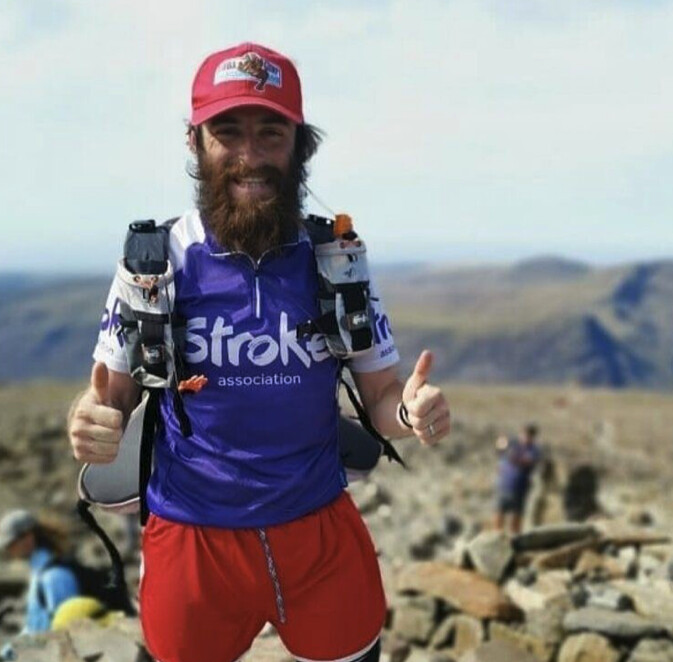
The athlete posted about his effort on social media, his ever-present sense of humour apparent throughout: “People have asked why I want to do this and, like Forrest, they’re asking if I’m running for world peace, the homeless, women’s rights, the environment or animals. Well, I’ll take any opportunity I can to tell you to PLEASE go and check out the work of the WWF and Peace Direct and see how you can help, but this is more the classic answer: #justfeltlikerunning.”
Pope had promoted his run under the hashtag #EdgetoEdge to celebrate U2 guitarist the Edge’s birthday, so, over the course of his run, he listened to the band’s entire catalogue in chronological order.This adventure was far from Pope’s first unique personal challenge. In 2016, he ran the length of America five times, following the route of the fictional movie character Forrest Gump.
He covered 25,140 kilometres in 422 days, and wrote a ‘love letter to America’ about the adventure called Becoming Forrest.Pope is a renowned marathoner, with a marathon PB of 2:27:13 from the 2016 Liverpool Rock’n’Roll Marathon.
He holds the Guinness World Record for the fastest marathon dressed as a film character, set for running the 2018 London Marathon in 2:36:28 (finishing 82 overall) while dressed as–who else? Forrest Gump.
“Maybe seeing me win, lose, or draw will inspire you to do something, to challenge yourself, or make a difference. Just remember and this is the most important point of this run – it’s giving it your best that counts, not whether you impress others, or present the perfect image,” Pope said.“Take pride in the struggle, you’re ace, you are,” he added.
(08/28/2022) ⚡AMPby Running Magazine
2022 UTMB Women’s Race
An American living in France and eighth-place finisher at UTMB in 2021, Katie Schide set out to make her mark on the race from the beginning, leading the women’s field after seven kilometers into Les Houches while being trailed closely by the trio of Marianne Hogan from Canada, Kaytlyn Gerbinfrom the USA, and Hillary Allen from the USA.
Schide grew the gap over the next 13 kilometers into Saint-Gervais. With only one hour and 48 minutes on the race clock, a truly raw opening effort, her lead over second place Hogan was already five minutes, and she had eight minutes on third place Audrey Tanguy (pre-race interview) of France. Jocelyne Pauly and Manon Bohard, both from France also, came through in fourth and fifth with Mimmi Kotka (pre-race interview), a Swede living in Chamonix, just behind them in sixth.
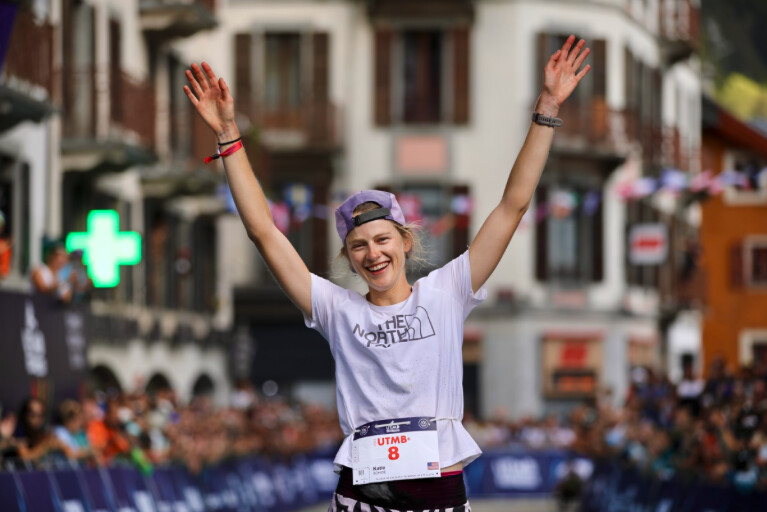
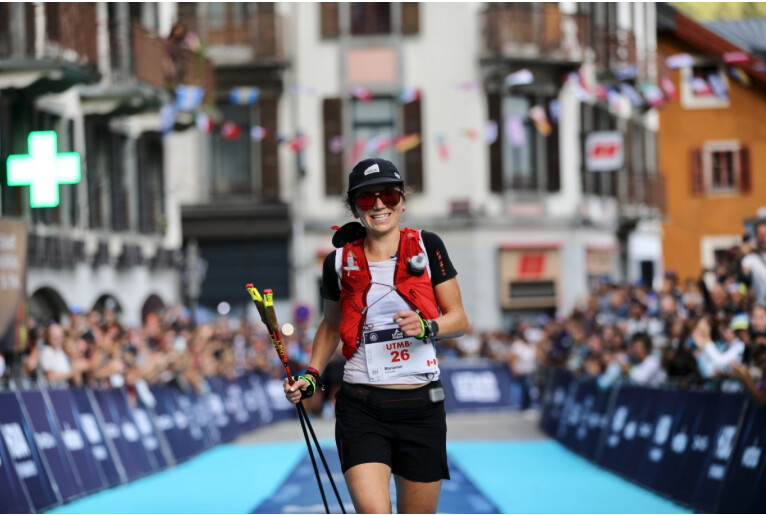
Fu-Zhao Xiang (pre-race interview) of China, Ragna Debats (pre-race interview), who is Dutch but lives in Spain, and Azara García (pre-race interview) of Spain rounded out the top 10, running together 13 minutes behind Schide.Keeping up her consistent and strong pace, Schide continued to increase her lead on the rest of the women’s field, coming into Les Contamines at 31 kilometers with 2:50 on the race clock.
By then, she’d extended her lead on Hogan to over nine minutes, Tanguy to 12 minutes, and Bohard and Pauly to 15 minutes. Tanguy was probably relieved to make it past Les Contamines where she had dropped last year from severe stomach cramps. A visibility limping Kotka, who had challenged Courtney Dauwalter during last year’s UTMB during the early miles of the race before finishing third as Dauwalter won, came into Les Contamines nearly 20 minutes off the lead in sixth and would not continue.
Schide continued to smile coming through the Col du Bonhomme, at about a marathon’s distance into the race, clearly enjoying her run through the night and appreciating the cheers of the spectators. Climbing one of the largest passes of the race only seemed to make her stronger. Her gap to Hogan and Tanguy had grown to about 20 minutes as the two chasers crested the col.
The cheers from the enthusiastic French crowd brought smiles to both women’s faces as they passed through. The cheers continued for Bohard and Pauly, who were still running together.
The crowd at Les Chapieux, 50 kilometers in, was enthused to see Schide, erupting in huge cheers as she came in. While the gaps between the women in second through 10th grew and shrunk over the kilometers, Schide’s gap on the field had only gone one direction so far: up. She was now more than 22 minutes up on second place Hogan. By the time Schide got to Lac Combal, 66 kilometers into the race, the gap was up to 25 minutes, and it would be an additional 20 minutes for Tanguy to arrive after that.With 80 kilometers run, Schide came into Courmayeur flying, spending only eight minutes at the aid station approximately halfway into the race.
The crowds were thrilled to see her, providing a warm and raucous welcome as she ran into the aid station looking smooth. But for the first time in the race thus far, Hogan had started to close the gap to the leader, whittling it down to just over 20 minutes. Smiling but with a stomach that couldn’t handle gels any more, she quickly drank a Coke and opted for pizza for fuel. The gap between the top two women and the rest of the field continued to grow, and it was over an hour before Tanguy, Pauly, and Gerbin ran through, and a few more minutes after them to the sixth woman, Emily Hawgood, of Zimbabwe, who lives in the USA.
While Schide had seemed unstoppable before Courmayeur, the tables seemed to turn over the next 17 kilometers to Arnouvaz as night turned to day. Schide came in with stomach issues, clearly in a rough spot, with Hogan hot on her heels, now only two minutes behind. Closing a gap of more than 18 minutes is a feat to be acknowledged, and a feisty and strong Hogan seemed energized by the coming of the day and the idea of leading the race for the first time.
A struggling Schide maintained her lead over the Grand Col Ferret at 102 kilometers, but it was down to a minute, and when the women’s leader arrived at La Fouly at 112 kilometers, it was Hogan instead of Schide for the first time, with a sizable six-minute gap.
By Champex-Lac at 125 kilometers, it was still Hogan in the lead and well under course record pace, now with a 10-minute gap to second. But Schide wasn’t about to give up, slowing down to let her stomach recover from its previous rough spell, and finally eating a cheese sandwich and starting to move well again.
One hundred miles is a long distance to race, long enough that runners can get through rough spells and rebound. And that’s exactly what Schide did, regaining the lead in Trient at kilometer 142, not only eliminating the 10-minute gap but putting an additional 10 minutes on Hogan. By Vallorcine at 153 kilometers, the gap between the top two was up to 41 minutes, with Hogan nursing a hurt left leg.
By the time the pair reached the finish line in Chamonix, they maintained their one-two position with Schide having extended the gap to some 75 minutes.It was another 35 minutes later that we saw the final member of the women’s podium arrive, Gerbin, who ran for much of the second half of the race in what she described as “no woman’s land,” well in front of those behind her but out of contact with the lead.
It was apparently a comfortable spot for her, though, as she held her position strongly, and crossed the finish line back in Chamonix like she could run plenty more kilometers if needed.
Pauly finished fourth, the successful conclusion of a focused day of racing. Eszter Csillag, who is from Hungary but lives in Hong Kong, moved up later on to take fifth. Emily Hawgood ran strong all day to set and maintain a very similar position of sixth place. Xiang held tight to seventh place with Spain’s Aroa Sio just behind in eighth. Italy’s Francesca Pretto and Eva-Maria Sperger of Germany moved up into the top 10 in the last 50 kilometers.
(08/28/2022) ⚡AMP
2022 UTMB Men’s Race
As expected, the men took the race out fast from the start on the relatively flat roads and trails from Chamonix to the village of Les Houches. Spain’s Pau Capell, the 2019 UTMB winner, led a charging group through Les Houches, seven kilometers into the race, followed closely by Mathieu Blanchard, a Frenchman living in Canada, and Jia-Ju Zhao and Guo-Min Deng, both of China. All the top contenders were in a massive chase pack, settling in for the long night and day ahead.
It didn’t take long for Jim Walmsley (pre-race interview) of the USA to make his intentions for this year’s race clear, coming into Saint-Gervais, at 20 kilometers into the race, in the lead, looking strong and relaxed. Kilian Jornet and Capell were just seconds behind with Deng, Zhao, and American Zach Miller making up a chase group half a minute in arrears. They were followed by Frenchman Germain Grangier, Blanchard, Frenchman Thibaut Garrivier, and Yan-Qiao Yun of China.
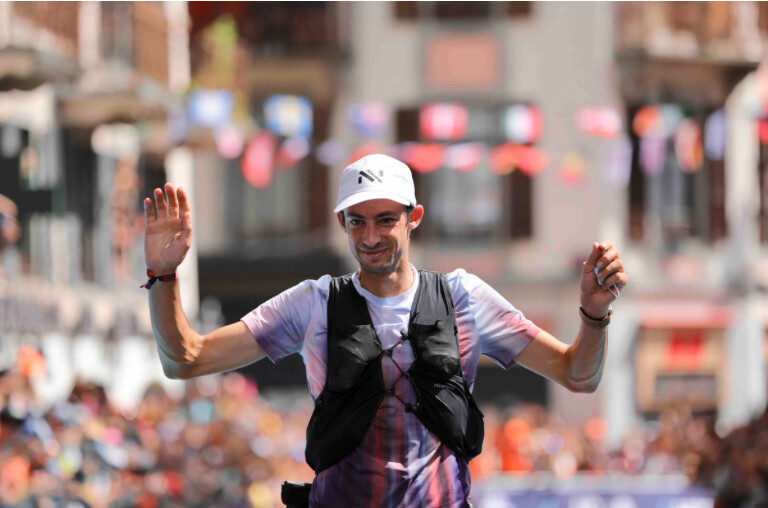
Unsurprisingly, by Les Contamines, 31 kilometers into the race, it was shaping up to be a showdown between Walmsley and Jornet. They came into the aid station together looking relaxed, Walmsley taking the time to high-five fans, and were shortly on their way into the night together. Capell and Miller came in just 30 seconds back, and Grangier rounded out the top five, just a minute behind them.
A notable withdrawal around this time due to physical issues is last year’s second place finisher, Frenchman Aurélien Dunand-Pallaz (pre-race interview).
Climbing over the high Col du Bonhomme, 43 kilometers in, Walmsley, Miller, Jornet, and Tom Evans (pre-race interview) of the U.K. shared the lead. With 1,160 meters (3,800 feet) of climbing down just on this one climb, everyone in the group looked relaxed and was moving well. Capell was just 90 seconds back, trying not to let the elastic to the front group snap in the dark of the night on the run over to Col du Bonhomme before the long descent into the remote French outpost of Les Chapieux.
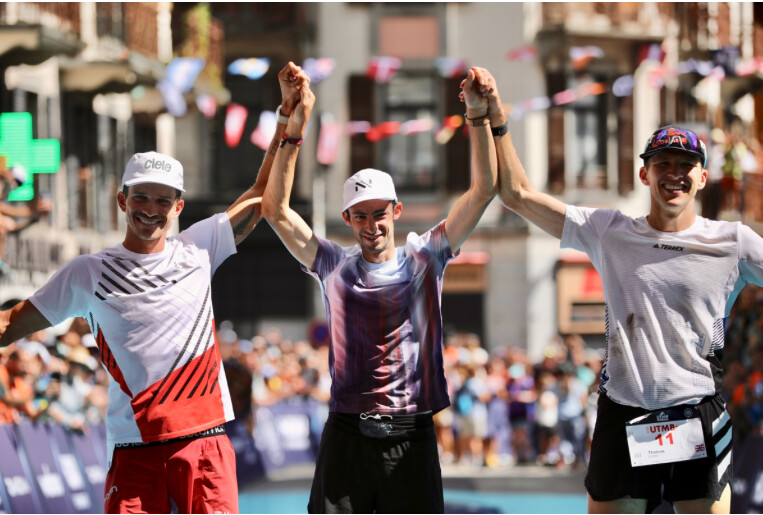
The four leaders stayed together down to Les Chapieux, 50 kilometers into the race, where last year’s winner, François D’Haene — not participating this year — was spectating and cheering on runners. Unfortunately, Capell had lost contact with the lead group over the previous section, coming into the aid station more than two minutes back. The rest of the top nine stayed relatively the same with Erik Sorenson of the USA slotting in 10th for the first time.Coming into Lac Combal, 66 kilometers into the race, after crossing country borders into Italy and traversing the most remote part of the course, Walmsley and Jornet had only slightly pulled away, their gap to Miller and Evans hung at a tenuous minute. All four looked strong, but it seemed like pre-race predictions of a two-man showdown were about to be realized.
Walmsley, with his arms and legs fully covered from the cold of the night but shirt front open, came into the town of Courmayeur, 80 kilometers in, solo and in the lead, but his gap on Jornet just 80 seconds.
Both men were moving well and left the aid station together after only a few minutes. It was a significant 12 minutes before Evans and Miller came through, staying in Courmayeur for under three minutes. Blanchard, looking more relaxed than any of the previous four, was also in and out of the aid station quickly, 18 minutes off the lead. Known for his slower starts and late race surges, Blanchard appeared to know exactly what he was doing.
It was never a question of if Walmsley or Jornet would strike out on their own, it was just a matter of when. Walmsley was the first to throw down a serious acceleration, coming into Arnouvaz (97 kilometers) solo and with a 2.5-minute gap on Jornet. Both were in and out of the aid station quickly, looking strong and motivated. Blanchard also chose the trail between Courmayeur and Arnouvaz to make his move, coming into the Arnouvaz aid station in third, looking very controlled and 14 minutes behind the leaders.
He was familiar with that position in the race, having finished third in UTMB in 2021. He was also familiar with the race tactic of starting slower, letting the leaders fight it out early and tire themselves out, and then moving up as the fast starters dropped back. It had brought him success the previous year, and he was seemingly employing the strategy again. Miller and Evans continued to run near each other, what Evans would later refer to as a “bromance” that lasted over half the race, and both looked like they had less spring in their step than the men ahead of them.
Committed to making the move stick, Walmsley climbed the Grand Col Ferret at 102 kilometers with a strong powerhike and held a five-minute gap over Jornet. Seemingly unconcerned with his position, Jornet chatted in French with both spectators and volunteers before vanishing into the night. Moving faster and looking stronger over the col than the previous two men, Blanchard continued the chase in third 17 minutes back. Miller and Evans continued to work together to keep the gap manageable.
The gap between Walmsley and Jornet stretched even further to 14 minutes by the sleepy Swiss village of La Fouly, 112 kilometers into the race. Both men were running under course-record pace, and both looked calm and collected. Still running strong into La Fouly, Blanchard kept the leaders within reach.
But Walmsley was committed to stretching the elastic on the field as much as he could, coming through Champex-Lac at 125 kilometers with 13 hours and 40 minutes on the race clock, gaining even more time on the course record and moving strongly. It’s generally a bad idea to bet against Walmsley after he’s put his mind to something, and after a fifth place finish in 2017 and DNF in 2018 and 2021 at UTMB, his commitment to the race and move to Europe to train on the trails seemed to be paying off.
But Walmsley is also known for going out fast and strong, and it doesn’t always stick.One could argue that Jornet was just biding his time, letting Walmsley burn his matches out front. However, there were times around this point in the race where Jornet just plain looked like he was working, enough so that we all began to wonder if the GOAT of trail running would have a crack in his armor today. However, by Trient at 142 kilometers, Jornet had decided to make his move, coming into the aid station in the lead. But instead of seeing Walmsley behind him, it was a surging Blanchard, less than a minute back that Jornet would have to now battle.
It was a long 19 minutes before Walmsley would arrive, appearing to be in discomfort. The dynamic duo of Evans and Miller continued to run together, still holding the gap to the race leader at just over 30 minutes, as they had for much of the race.As the kilometers ticked down, it was indeed a showdown between two men, except it was Blanchard challenging Jornet, with both men coming into Vallorcine at 153 kilometers together, well ahead of the course-record pace.
With Walmsley slowly losing time to the leaders but still in third, eyes moved to Evans who’d finally dropped Miller after nearly a night and a day of racing side by side to see if he could make the pass.By this time, it felt nearly inevitable that Jornet would run to the win and it was no surprise when he came into Tete aux Vents solo looking focused and fast with an 11-kilometer downhill run to the finish. Blanchard never gave up the chase, seven minutes back, while Evans passed a tired but “pumped” Walmsley to slot into third for the first time.
Jornet would finish with a course-record time of 19:49:30, besting both François D’Haene’s 2014 record time (20:11:44) on a course which did not include the Pyramides Calcaires, a gnarly little climb and descent added to the UTMB course a few years back, and Capell’s 2019 time (20:19:09), which did include those extra kilometers.
This is his fourth win at UTMB. Just five minutes back, Blanchard would also come into the finishing chute under the previous course record in second place. An elated Evans rounded out the podium, a stellar finish for his first UTMB.
Walmsley came across the line in fourth, releasing the two DNF monkeys on his back and finishing the next step in his goal of ultimately winning this race someday. Miller, no longer on the comeback trail following surgery and recovery, but fully back, crossed the line in fifth place.
Most of the back half of the men’s top 10 are runners who started slower and bided their time, moving up in the race’s second half, including France’s Beñat Marmissolle, France’s Arthur Joyeux-Bouillon,Jonas Russi of Switzerland, and Romania’s Robert Hajnal. The final member of the men’s top 10, however, is France’s Thibaut Garrivier, who went out hot and looked like he paid for it later, but ultimately holding onto 10th place.
(08/28/2022) ⚡AMPNorth Face Ultra Trail du Tour du Mont-Blanc
Mountain race, with numerous passages in high altitude (>2500m), in difficult weather conditions (night, wind, cold, rain or snow), that needs a very good training, adapted equipment and a real capacity of personal autonomy. It is 6:00pm and we are more or less 2300 people sharing the same dream carefully prepared over many months. Despite the incredible difficulty, we feel...
more...ADHD and runners: can diet help with management?
As a sports nutritionist, I commonly counsel runners and other athletes who have Attention Deficit Hyperactivity Disorder—generally referred to as ADHD (or ADD). ADHD is characterized by hyperactivity, impulsivity, and/or inattention. It affects 4-10% of all American children and an estimated 4.4% of adults (ages 18-44 years). ADHD usually peaks when kids are 7 or 8 years old. Some of the ADHD symptoms diminish with maturation but 65-85% of the kids with AHDH go on to become adults with ADHD.
Ideally, runners with ADHD get the help they need to learn how to manage their time and impulsiveness. Unfortunately, many youth athletes with ADHD just receive a lot of negative feedback because they have difficulty learning rules and strategies. This frustrates teammates and coaches. Older athletes with ADHD often run to reduce their excess energy, calm their anxiety, and help them focus on the task at hand. This article offers nutrition suggestions that might help coaches, friends, and parents, as well as runners with ADHD, learn how to calm the annoying ADHD behaviors.
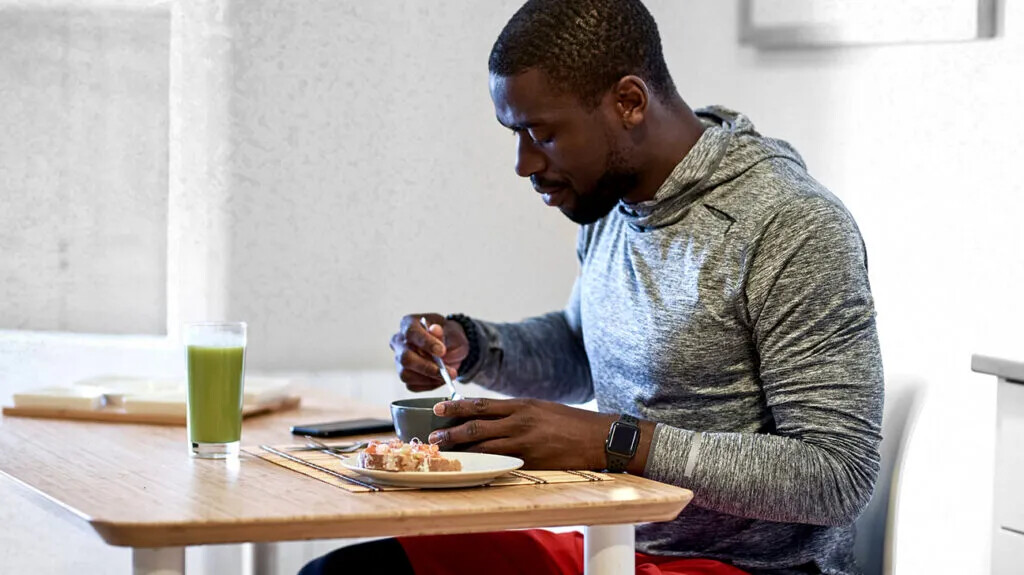
• To date, no clear scientific evidence indicates ADHD is caused by diet, and no specific dietary regime has been identified that resolves ADHD. High quality ADHD research is hard to do because the added attention given to research subjects with ADHD (as opposed to the special diet) can encourage positive behavior changes. But we do know that when & what a person eats plays a significant role in ADHD management and is an important complimentary treatment in combination with medication.
• ADHD treatment commonly includes medications such as Concerta, Ritalin & Adderall. These medications may enhance sports performance by improving concentration, creating a sense of euphoria, and decreasing pain. These meds are banned by the World Anti-Doping Agency (WADA) and the International Olympic Committee (IOC). Hence, runners who hope to compete at a high level are discouraged from taking ADHD medications

• To the detriment of ADHD runners, their meds quickly blunt the appetite. Hence, they (like all athletes) should eat a good breakfast before taking the medication.
• The medication-induced lack of appetite can thwart the scrawny teen runner who wants to gain weight and add muscle. Teens should be followed by their pediatricians, to be sure they stay on their expected growth path. If they fall behind, they could meet with a registered dietitian (RD) with knowledge of sports nutritionist (CSSD) to help them reach their weight goals.
• An easy way for “too thin” runners to boost calories is to swap water for milk (apart from during exercise). The ADHD athlete who does not feel hungry might find it easier to drink a beverage with calories than eat solid food. Milk (or milk-based protein shake or fruit smoothie) provides the fluid the athlete needs for hydration and simultaneously offers protein to help build muscles and stabilize blood glucose.
• A well-balanced diet is important for all runners, including those with ADHD. Everyone’s brain and body need nutrients to function well. No amount of vitamin pills can compensate for a lousy diet. Minimizing excess sugar, food additives, and artificial food dyes is good for everyone.
• Eating on a regular schedule is very important. All too often, high school runners with ADHD fall into the trap of eating too little at breakfast and lunch (due to meds), and then try to perform well during afterschool sports. An underfed brain gets restless, inattentive, and is less able to make good decisions. This can really undermine an athlete’s sports career
• Adults with ADHD can also fall into the same pattern of under-fueling by day, “forgetting” to eat lunch, then by late afternoon are hangry and in starvation mode. We all know what happens when any runner gets too hungry – impulsiveness, sugar cravings, too many treats, and fewer quality calories. This is a bad cycle for anyone and everyone.
• All runners should eat at least every four hours. The body needs fuel, even if the ADHD meds curb the desire to eat. ADHD runners can set a timer: breakfast at 7:00, first lunch at 11:00, second lunch at 3:00 (renaming snack as second lunch leads to higher-quality food), dinner at 7:00.
•For high school runners with ADHD, the second lunch can be split into fueling up pre-practice and refueling afterwards. This reduces the risk of arriving home starving and looking for (ultra-processed) foods that are crunchy, salty, and/or sweet.
• (Adult) runners with ADHD are often picky eaters and tend to prefer unhealthy snacks. For guidance on how to manage picky eating, click here for adults and here for kids.
• Fiber-rich fruits, vegetables, and whole grains can be lacking on an ADHD runner’s food list. Their low fiber diet can lead to constipation. Fiber also feeds the zillions of microbes in their digestive tract that produce chemicals that can positively impact brain function and behavior. Everyone with ADHD should eat more fiber-rich foods like beans (hummus, refried beans in a burrito), seeds (chia, pumpkin, sunflower, sesame), and whole grains (oatmeal, brown rice, popcorn). They offer not only fiber but also magnesium, known to calm nerves.
• With more research, we’ll learn if omega-3 fish oil supplements help manage the symptoms of ADHD. At least, eat salmon, tuna, and oily fish as often as possible, preferably twice a week, if not more.
• Picky eaters who do not eat red meats, beans, or dark leafy greens can easily become iron deficient. Iron deficiency symptoms include interrupted sleep, fatigue, inattention, and poor learning and can aggravate ADHD. Iron deficiency is common among runners, especially females, and needs to be corrected with iron supplements.
• While sugar has the reputation of “ramping kids up”, the research is not conclusive about whether sugar itself triggers hyperactivity. The current thinking is the excitement of a party ramps kids up, more so than the sugary frosted cake. Yes, some runners are sugar-sensitive and know that sugar causes highs and crashes in their bodies. They should choose to limit their sugar intake and at least enjoy protein along with sweets, such as a glass of milk with the cookie, or eggs with a glazed donut. Moderation of sugar intake is likely more sustainable than elimination of all sugar-containing foods.
(08/27/2022) ⚡AMPby Colorado Runner
World lead for Jakob Ingebrigtsen in Lausanne
Olympic 1500m champion enjoys emphatic win at Diamond League on Friday as Noah Lyles, Jasmine Camacho-Quinn and Joe Kovacs also take victories in the Swiss city.
There were plenty of surprises at the Athletissima meeting in Lausanne on Friday (Aug 26) with world champions Ryan Crouser, Grant Holloway, Tobi Amusan and Mutaz Essa Barshim among those suffering end-of-season defeats. But there was no doubt about the winner in the men’s 1500m as Jakob Ingebrigtsen stormed to victory in a world-leading mark of 3:29.05.
Using his predictable yet effective tactics of taking the lead shortly after the pacemaker went through 800m in 1:51, the Norwegian built a small lead at the bell and held his advantage over the final lap as Abel Kipsang of Kenya battled his way into second in 3:29.93 and Stewart McSweyn of Australia showed a welcome return to form with 3:30.18 in third.
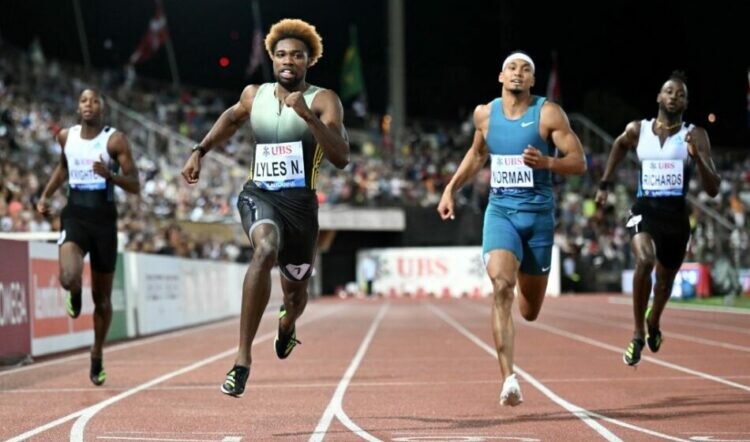
Josh Kerr bounced back from his dismal Commonwealth Games experience by finishing fourth in 3:32.28 with fellow Brits Jake Heyward (3:34.99) and Matt Stonier (3:35.57) ninth and tenth. Commonwealth champion Olli Hoare, meanwhile, faded badly on the last lap to finish 12th.
“It was a good race,” said Ingebrigtsen. “I would have liked to have gone a little faster but considering I’ve had a lot of races, it was good. I’m now looking forward to the races at the end of the season and running even faster next year.
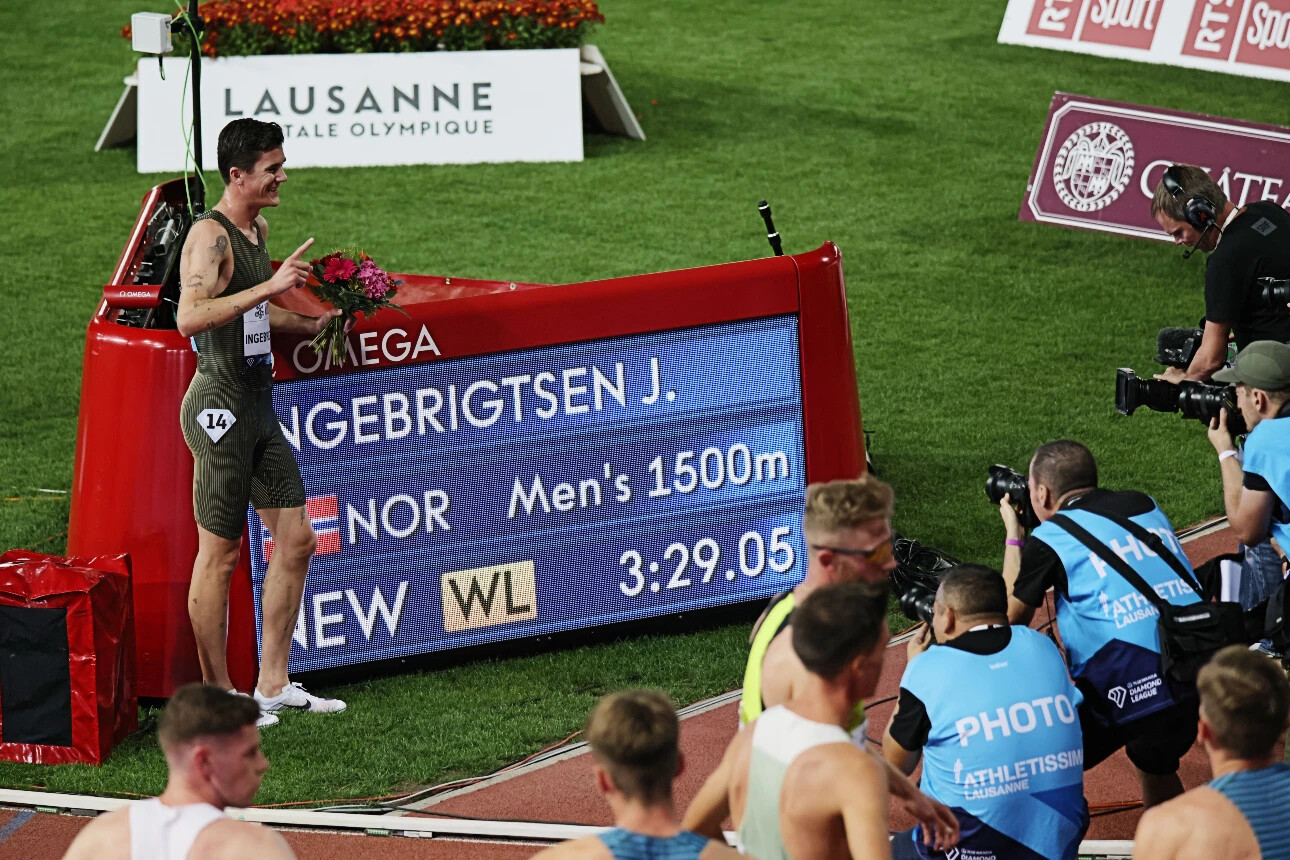
“All in all it’s been a good season but I’m ready to put in a lot of work this winter to win more races next summer. I don’t think we’re going to get any record times in Zurich (Diamond League final next month) but I think we will have a good competition there.”
Chilly conditions in Lausanne were not conducive to fast sprint times but Noah Lyles ran a quick 19.56 (1.3) despite a poor start. Mike Norman, who had led into the home straight, was runner-up in 19.76 as Britain’s Charlie Dobson, on his Diamond League debut, ran 20.34 in eighth from the inside lane.
The much-anticipated women’s 100m showdown turned into an anticlimax when firstly world champion Shelly-Ann Fraser-Pryce withdrew with a minor injury and then Elaine Thompson-Herah, the Olympic champion, false started. In their absence Aleia Hobbs won in 10.87 (0.0) from Shericka Jackson’s 10.88 and Marie-Josee Ta Lou’s 10.89.
(08/27/2022) ⚡AMPby Jason Henderson
Budapest 2023 World Athletics Championships schedule will favor double bids
Next year's World Athletics Championships in Budapest will last for nine days - one less than the last five editions of this event - and will favor athletes seeking double bids.
Popular doubles such as the 100m/200m, 800m/1500m, 1500m/5000m, 5000m/10,000m, 20km/35km race walk, women's long jump/triple jump and women's 200m/400m have all been made possible with athletes attempting them not having to contest more than one round in any given session.
The 2023 World Championships schedule - from August 19 to 27 - will involve 49 disciplines including six road events which will be spread across five separate mornings.
All track and field finals will be contested in the evening sessions, with at least four finals scheduled every day, even on the first day.

The final two days will feature eight medal events and both will end with women's relays.
And, as has been the case at recent major championships, the mixed and single-sex 4x400m finals are held either side of the individual one-lap disciplines to allow athletes to partake in both relays and individual disciplines should they so desire.
The first evening session will end with the mixed 4x400m final.

The men's 100m will be in the spotlight on the second day, while the women's 100m takes center stage on day three.
The women's 1500m will be one of four finals held on day four.
The men's 400m hurdles will conclude the action on day five.
Both 35km race walk finals will be held on the morning of day six and there will be no rest on the seventh day, as both 200m finals will conclude the evening session.
The women's marathon starts on the penultimate day, which will later include the men's pole vault and both 4x100m finals.
The men's marathon will be held on the morning of the final day and the championships will end with both 4x400m finals.
"The release of the timetable is a significant milestone for the World Athletics Championships Budapest 23, now less than a year away," World Athletics President Sebastian Coe said.
"After seeing the extraordinary crowds that descended on Birmingham for the Commonwealth Games and Munich for the European Championships in the last month, we know the appetite for our sport across Europe is as strong as ever and we're looking forward to taking our premier event to central Europe for the first time.
"Creating the timetable for an outdoor World Championships is a complex balancing act, taking into account the needs of athletes, broadcasters and the host city, as well as our other stakeholders.
"I’m confident that a return to a nine-day programme and evening-only finals in the stadium will be embraced by our athletes and audience in Budapest, and by those watching around the world."
Peter Deutsch, chief executive of the Budapest 2023 local organising committee, added: "We have created a schedule that best serves the interests of the athletes, including Hungarian athletes and the audience.
"There will be a lot of competitions late in the evening because that will be the right weather for the athletes.
"Every night there will be great excitement, there will be finals, and every night there will be Hungarians in the field for the home fans to cheer on.
"Our aim is for the World Championships to strengthen Hungarian athletics, to achieve the best results and to make this wonderful sport as popular as possible."
Tickets are due to go on sale in late 2022.
(08/27/2022) ⚡AMP
by Mike Rowbottom
World Athletics Championships Budapest 23
From August 19-27, 2023, Budapest will host the world's third largest sporting event, the World Athletics Championships. It is the largest sporting event in the history of Hungary, attended by athletes from more than 200 countries, whose news will reach more than one billion people. Athletics is the foundation of all sports. It represents strength, speed, dexterity and endurance, the...
more...South Africa’s Tete Dijana Storms to Victory in the 2022 Edition of Comrades Marathon
Tete Dijana won the Comrades Marathon from Pietermaritzburg to Durban ahead of his teammate Former champion Bongamusa Mthembu took fourth place and broke the Nedbank Running Club's dominance Nedbank Running Club had five athletes in the top 10 of the Comrades Marathon, including the top three
South Africa’s Tete Dijana has won the 2022 edition of the Comrades Marathon. The Nedbank runner stormed to victory, beating his teammate and defending champion, Edward Mothibi.
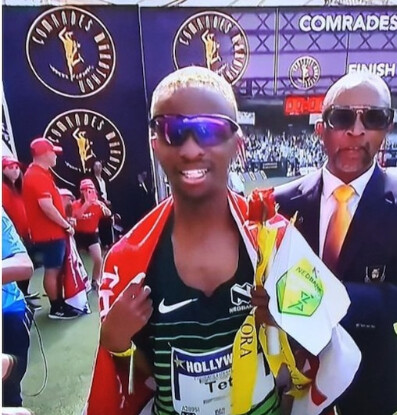
The duo were neck and neck with not too long to go before Dijana took control of the race and never looked back. Dijana, a security guard from the North West, finished the race in 5:30:38 while Mothibi finished in 5:33:46.
(08/27/2022) ⚡AMPBrazilian Runner Dies After Fall During UTMB Team Event
A Brazilian runner, 40, was fatally injured at the Petite Trotte à Léon, part of the UTMB ultra, earlier this week.
The unidentified man fell 30-50 feet around 1:30 a.m., only 23 miles into the race.
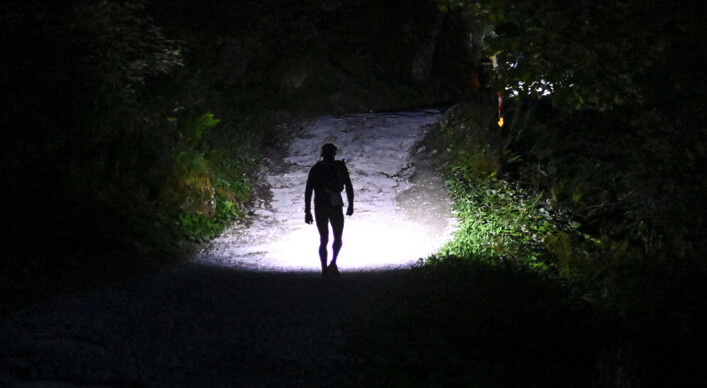
The Ultra Trail du Mont Blanc (UTMB) got off to a tragic start following the death of a Brazilian runner earlier this week. The 40-year-old runner, whose identity remains anonymous, was fatally injured on the first night of the 300K (186-mile) Petite Trotte à Léon (PTL) team event.
“The runner was with his team on an official trail, which is secured for the PTL and marked throughout the year, between the Col de Tricot and the Refuge de Plan Glacier,” UTMB officials said about the accident, which occurred about 23 miles into the race.
At around 1:30 a.m. CET, the two-person Brazilian team was in a remote portion of the course with loose stones. It was there, above the French village of Les Contamines, that the victim fell an estimated 30 to 50 feet.
An Italian team, which was pacing behind the Brazilians, reported the incident after discovering the victim’s teammate safe, but in shock. A helicopter team responded shortly after and pronounced the runner dead before flying his body and teammate to a local hospital.
“It’s so very sad, but it was an accident,” Catherine Poletti, cofounder of the UTMB and president of the UTMB Group, told Outside. “When you go into nature for adventure—it may be the mountains, it may be the sea—but all the time there is a risk. We cannot provide something with zero risk. It’s impossible. I think that’s a good thing because when you want to have an experience or adventure, you absolutely need to know where the limits are, what your experience is.”
The remaining 104 teams could choose whether they wanted to finish the race—all decided to keep running.
Approximately 240 participants began this year’s PTL in Chamonix, France, on August 22. They will cover 82,000 feet of elevation gain within the Mont Blanc massif, traversing France, Switzerland and Italy.
To enhance runner safety, the race has instituted specific protocols, like selecting athletes based on criteria meant to ensure their successful completion. Runners are required to possess sound knowledge of the mountain environment, since they will likely encounter precarious weather conditions while also navigating steep slopes, falling stones, narrow paths, and glaciers. Due to a lack of marked trails, participants must be able to read a map and use a compass and altimeter, too.
While the PTL must be completed in autonomy, there are aid stations where participants can sleep and eat by cashing in one of their four meal tickets. While on course, runners are tracked with GPS beacon and required to carry mountaineering helmets—which the Brazilian victim was not wearing at the time of his death.
This is not the first time a runner has died during the UTMB since the event was founded in 2003. In August 2021, a 35-year-old Czech runner fell to his death during the Sur les Traces des Ducs de Savoie (TDS) race.
Despite the inherent risk involved, approximately 10,000 runners are expected to compete in one of this year’s eight UTMB races, held from August 22-28.
(08/27/2022) ⚡AMPby Runner’s World
Two Promising Updates on Heart Health in Endurance Athletes
There’s encouraging new evidence on artery stiffening and the risks of too much exercise
Reporting on emerging science can sometimes feel like watching live coverage of an ultramarathon. Sure, there’s the occasional dramatic move, but for long stretches of time it feels like nothing is happening. Beneath the surface, though, the action continues. Fatigue mounts, blisters begin to form, an aid station is missed… the evidence gradually accumulates, and only later do we realize when the outcome was settled.
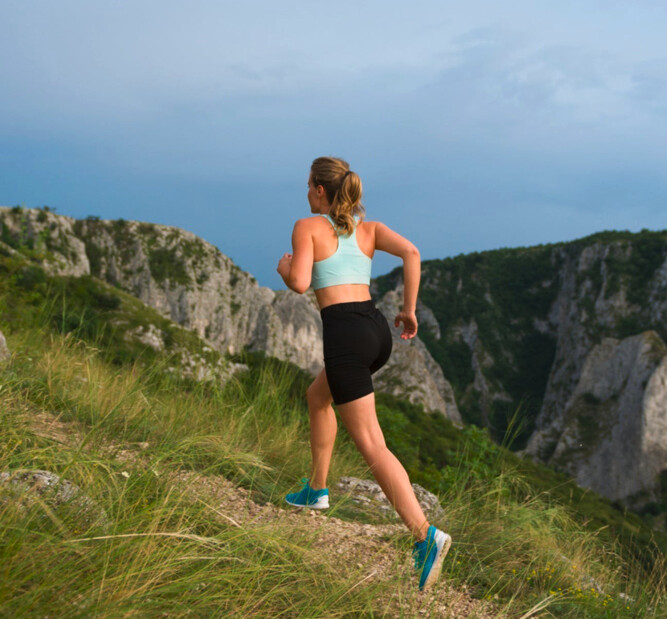
In that spirit, I have a couple of mid-race updates on a topic of longstanding interest: the potential deleterious effects of too much endurance exercise. I’ve been reporting on this controversy for more than a decade now, and summed up the current state of evidence most recently last summer. It would be nice, of course, if we now had final evidence about whether training for marathons or ultramarathons might damage the heart. Instead, it’s become clear that the perfect study is almost impossible to design, because you simply can’t randomize people to spend a few decades either running marathons or lying on the couch. Still, the steady drip of incremental evidence continues, and two new studies fill in some important gaps.
The first one, published in the British Journal of Sports Medicine, explores the links between exercise and atherosclerosis, the build-up of plaques that narrow and stiffen your arteries. One way to test for atherosclerosis is to get a coronary artery calcium (CAC) score, which uses a CT scan to assess how much calcium is present in your heart’s arteries. Recent evidence suggests that masters endurance athletes tend to have higher CAC scores than non-athletes, perhaps because of wear and tear from years of pumping all that blood during exercise. That’s not good, because high CAC scores reliably predict an elevated risk of serious and potentially fatal heart problems in the general population.
The good news is that endurance athletes tend to have different plaques compared to non-athletes. The athletes have plaques that are smooth, hard, and unlikely to rupture; the non-athletes have softer plaques that are more likely to break off from the artery wall and block the flow of blood. So there’s a theoretical argument that high CAC scores shouldn’t be considered as much of a problem in athletes as they are in others. But no one has demonstrated that this is how it pans out in the real world.
This is where the new study comes in. A group led by Pin-Ming Liu of Sun Yat-sen University in China analyzed data from a long-running study whose subjects got a baseline CAC test back in 2000 or 2001, a follow-up CAC test five or ten years later, and filled out questionnaires on their exercise habits on at least three different occasions during the study. These repeated measures are crucial, because it can distinguish between those whose CAC scores are high (perhaps simply because of genetic bad luck) and those whose scores are increasing (presumably due to some lifestyle factor such as exercise).
They looked at three groups with a total of about 2,500 subjects: those who consistently did less than the recommended amount of exercise; those who consistently hit or slightly exceeded the recommendations; and those who averaged at least three times the recommendations. In this case, the recommended amount of exercise, based on public health advice, is 150 minutes a week of moderate exercise or 75 minutes a week of vigorous exercise, with activities like running counting as vigorous.
There were two key conclusions. First, the group doing the most exercise was indeed more likely to have an increase in CAC score on their second test, consistent with previous studies. Second, despite their increased CAC scores, the high-exercise group was not more likely to suffer adverse cardiac events during the study’s follow-up. This, too, is consistent with the idea that exercise promotes the formation of plaques, but those plaques don’t carry the same risks as plaques in sedentary people.
This is far from the final word on this topic, in part because only a handful of subjects had exercise levels comparable to those of an elite endurance athlete. But it’s an encouraging sign that CAC scores mean something different in exercisers than they do in non-exercisers.
Debates about CAC scores and other risk factors sometimes feel a bit abstract. The study many of us crave is much simpler: take a bunch of people, find out how much they exercise, and wait to see who dies first. Many such studies have been done, but their results are difficult to interpret because there are so many other differences, beyond exercise habits, between those who choose to run 100 miles a week and those who choose not to run at all.
Despite those caveats, there were two such studies, one from the Cooper Clinic in Texas and the other from Copenhagen, that claimed to see a “reverse J-curve” in the relationship between exercise amount and mortality risk. Doing a little exercise produced a dramatic decrease in your chances of dying early; doing more produced a modest further increase; but doing too much bent the curve back upward and began increasing your risk again.
Numerous other studies have tested the same idea and failed to find evidence that more exercise, beyond a certain point, raises your risk of premature death. But given the imprecisions inherent in this kind of observational data, it’s hard to know which study to trust (especially when you really want a particular conclusion), so I normally wouldn’t report on yet another study finding that too much exercise isn’t bad for you after all.
This one has an interesting twist, though. It’s published in Circulation, by a group led by Dong Hoon Lee of Harvard’s T.H. Chan School of Public Health, and it follows 116,221 adults from the Nurses’ Health Study and the Health Professionals Follow-up Study, beginning in the 1980s. Over the course of 30 years, there were more than 47,000 deaths among the subjects, which means you’re not drawing conclusions on the basis of small numbers. (The Copenhagen study I mentioned above famously suggested that ”strenuous” running raises your risk of premature death on the basis of just two deaths in that group.)
The crucial detail is that subjects in the new study were asked about their exercise habits every two years, instead of just once at the beginning of the study. This allowed the researchers to divide subjects into groups based on their average exercise levels over the course of the study, rather than relying on a single snapshot of exercise habits to deduce someone’s health as much as 30 years later.
The headline result is that those doing 150 to 300 minutes a week of vigorous exercise such as running (or, somewhat equivalently, 300 to 600 minutes a week of moderate exercise such as walking) were about half as likely to die during the study. Even after adjusting for other secondary benefits of exercise like lower body mass index, their risk was still about a quarter less. Note that 300 minutes a week is five hours of running—not a heavy-duty ultramarathon training program, but still a substantial amount of exercise.
As for those doing more than five hours a week, the benefits stayed about the same. At least, they did if you use the average physical activity levels over the course of the study. When the researchers reran the analysis using just the first exercise questionnaire from the 1980s, the reverse J-curve reappeared. There are several problems with relying on a single measure of exercise habits, the researchers point out, including the risk of reverse causation: declining health before the baseline assessment might spur you to do more exercise, leading to the false impression that exercise causes bad health. This is the way nearly all the previous studies of exercise and mortality have been conducted, so the new results may finally explain why a few studies have observed that reverse J.
It’s still too early to declare that years of serious endurance training have no effect on the heart. In fact, it’s clear that training does change the heart—that’s kind of the point—and it wouldn’t be surprising if those changes sometimes end up having negative effects. But the epidemiological evidence continues to accumulate that the overall effects on longevity are either positive or, at worst, neutral. And that doesn’t even take into account how much fun it is.
(08/27/2022) ⚡AMPby Outside
What to Eat Before, During and After a Race
It is important to fuel your body with proper nutrition and water - before, after and during a race.
For a successful marathon, it’s critical to fuel your body with proper nutrition and keep it sufficiently hydrated before, during and after the race.
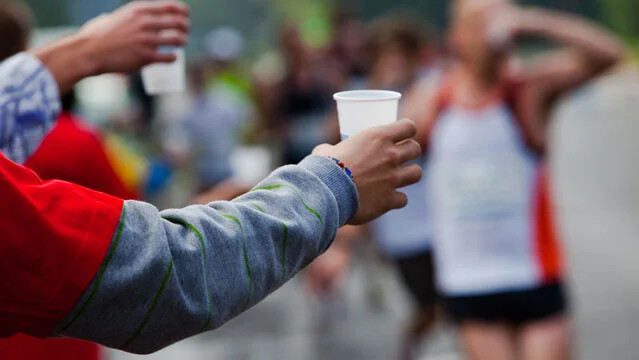
Before any big race, build up your energy reserves by loading on carbohydrates, starchy vegetables, fruits and lean protein for three days.
Inexperienced runners often make the mistake of taking heavy meals the day before the race. Overeating can overwhelm your digestive system. You may feel bloated or nauseous during the race.

What to eat before a race
Have a low-fat, high-carbohydrate and low-fibre meal about three hours before the race to prevent any indigestion, fatigue or stomach discomfort whilst running. Avoid heavy meals the day before the race and only eat familiar foods on the day itself.
Foods to eat
Bread/toast, bagel, peanut butter, fruit without skin (banana), pulp-free fruit juice or sports drink for a pre-race breakfast.
Rice, pasta, lean meat, starchy vegetables, fruits for “carbo-loading” at least three days before the race.
For hydration, drink 500 to 700 ml of fluid about three hours before the race.
Foods to avoid
Deep fried foods, foods high in saturated fats (red meat, processed foods like bacon, sausages and pastries).
Avoid dairy products (milk, cheese, yoghurt) on race day if you have a history of gastrointestinal problems. Some marathon runners skip morning coffee as it is diuretic.
Because the body uses more energy digesting fatty foods, your race performance might suffer if you consume excess fats.
What to eat during a race
Energy bars, energy gels and bananas are excellent for replenishing carbohydrate during a race. Take small bites while continuing the run.
Keep yourself hydrated. Dehydration occurs when water lost through heavy breathing and perspiration is not replaced adequately by fluid intake. You may lose up to 3 to 5 kg of water weight in a three-hour marathon.
To prevent dehydration during a race:
Take another 300 to 600 ml of fluid 15 minutes before the race begins.
Drink 150 to 250 ml of fluid at regular intervals to replace fluid loss. Take small sips while continuing to run.
Fluids include plain water (for runs lasting less than 90 minutes) and sports or isotonic drinks (for longer distances such as marathon).
Avoid soda, fruit juices and cordials. Their high sugar concentrations may delay gastric emptying and cause stomach discomfort during the run.
What to eat after a race
Hydrate with sport drinks after a marathon. Isotonic drinks are preferred as they contain similar concentration of salts and sugar as the human body. Avoid alcohol in the 24 hours following a race, as it promotes dehydration.
Do not drink just based on your thirst, as it won’t reflect all of your fluid needs. For a visual guide, your urine should be almost colourless a couple of hours after the run.
Within one hour after a race or marathon, grab a carbohydrate-rich snack such as banana sandwich, red bean bun, energy bar, peanut butter on a banana and a sports drink.
Within two to three hours after a race or marathon, have a balanced meal comprising a lean protein (fish, chicken), carbohydrates (rice, pasta, potatoes) and good fats (avocados, nut butter).
(08/26/2022) ⚡AMP
by Dr Darren Tay
Current world champion, Tamirat Tola will run the Valencia Marathon
The Ethiopian athlete Tamirat Tola, current world champion, will run the next edition of the Trinidad Alfonso Valencia Marathon, which will be held on December 4 and where he will be one of the favorites to win.
The African will be one of the candidates to lower the best mark of the Valencian circuit, established in 2:03:00 in the year 2020 and his presence will help the Valencian event to continue climbing positions in the international marathon ranking, where he has the fifth best record in history.
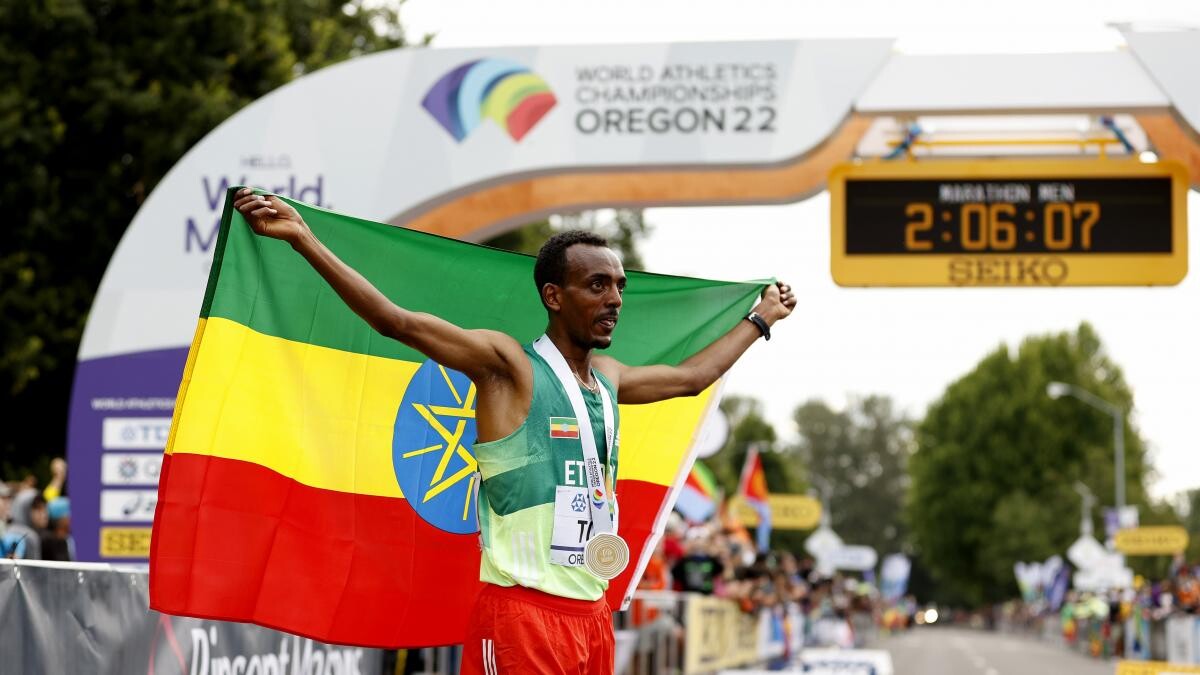
In addition to his success in the last World Cup in Eugene (United States), Tola, whose best time is 2:03:39, which he achieved less than a year ago in Amsterdam (Netherlands), was Olympic bronze in 2016 and world runner-up in 2017.
“It is a great pleasure to have accepted the invitation to run the Valencia Marathon after stopping running the London Marathon. After the victory in the World Championships I had to recover for 15 daysand that meant that with only 60 preparation it was not correct to present myself in London”, explained the Ethiopian in statements provided by the organization of the race.
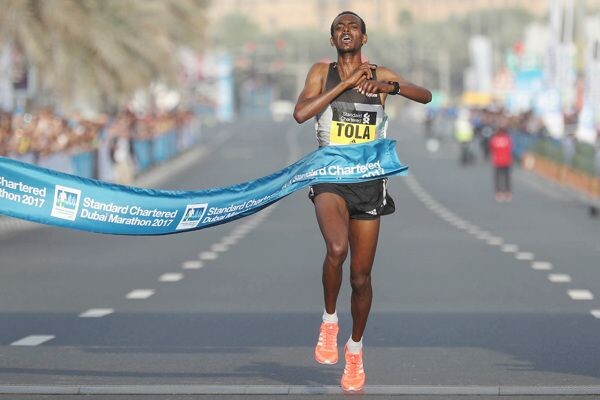
The African knows that the Valencia circuit “is one of the fastest in the world”. “I hope I can get my personal best and the race record if all conditions are favorable,” he stressed.
In addition, the organizers also confirmed that the race will be the setting chosen by the Ethiopian Letesenbet Gidey to make her debut in the distance of 42,195 meters. The African has an idyll with the Turia capital since two of the four world records that she holds she has achieved there.
(08/26/2022) ⚡AMPby George Williams
VALENCIA TRINIDAD ALFONSO
The Trinidad Alfonso EDP Valencia Marathon is held annually in the historic city of Valencia which, with its entirely flat circuit and perfect November temperature, averaging between 12-17 degrees, represents the ideal setting for hosting such a long-distance sporting challenge. This, coupled with the most incomparable of settings, makes the Valencia Marathon, Valencia, one of the most important events in...
more...Ethiopians Yehualaw and Yimer look for fast times at Antrim Coast Half
British distance runners Marc Scott and Callum Hawkins are also set to race 13.1 miles while Haile Gebrselassie and Jo Pavey will run the one mile fun run this weekend.
Ethiopian distance running stars Ethiopians Yalemzerf Yehualaw and Jemal Yimer lead a world-class line-up at the ‘Mid & East Antrim’ Antrim Coast Half Marathon in Larne, Northern Ireland, on Sunday (Aug 28). There is plenty of British interest too with Marc Scott and Callum Hawkins among the entries.
The event, which is set to be covered live on BBC online from 8.55am, sees Yehualaw coming into this year’s race having broken the women’s world record over 10km with 29:14 in Castellon, Spain, earlier this year, in addition to running the fastest female debut marathon ever of 2:17:23 in Hamburg in April.
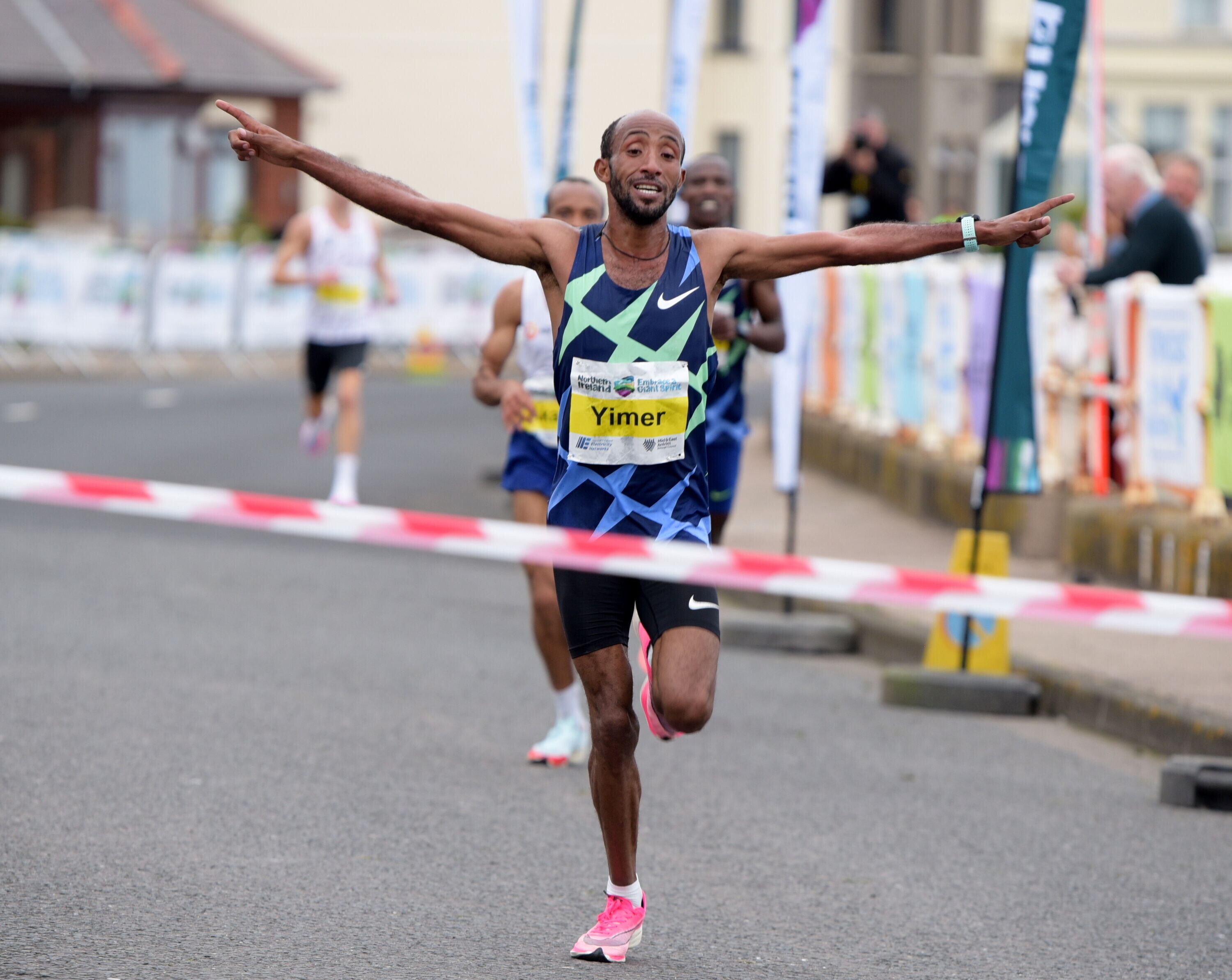
At the Antrim Coast event last year she appeared to break the world record for 13.1 miles with 63:43 but was denied the mark due to the course being found to be 54 metres short.
Yehualaw will be joined at this year’s Antrim Coast event by her training partner Tsehay Gemechu. The 23-year-old Ethiopian comes to this year’s with a personal best of 65:08 and has been winner of the Lisbon Half-Marathon two years in a row and Copenhagen Half-Marathon in 2021.
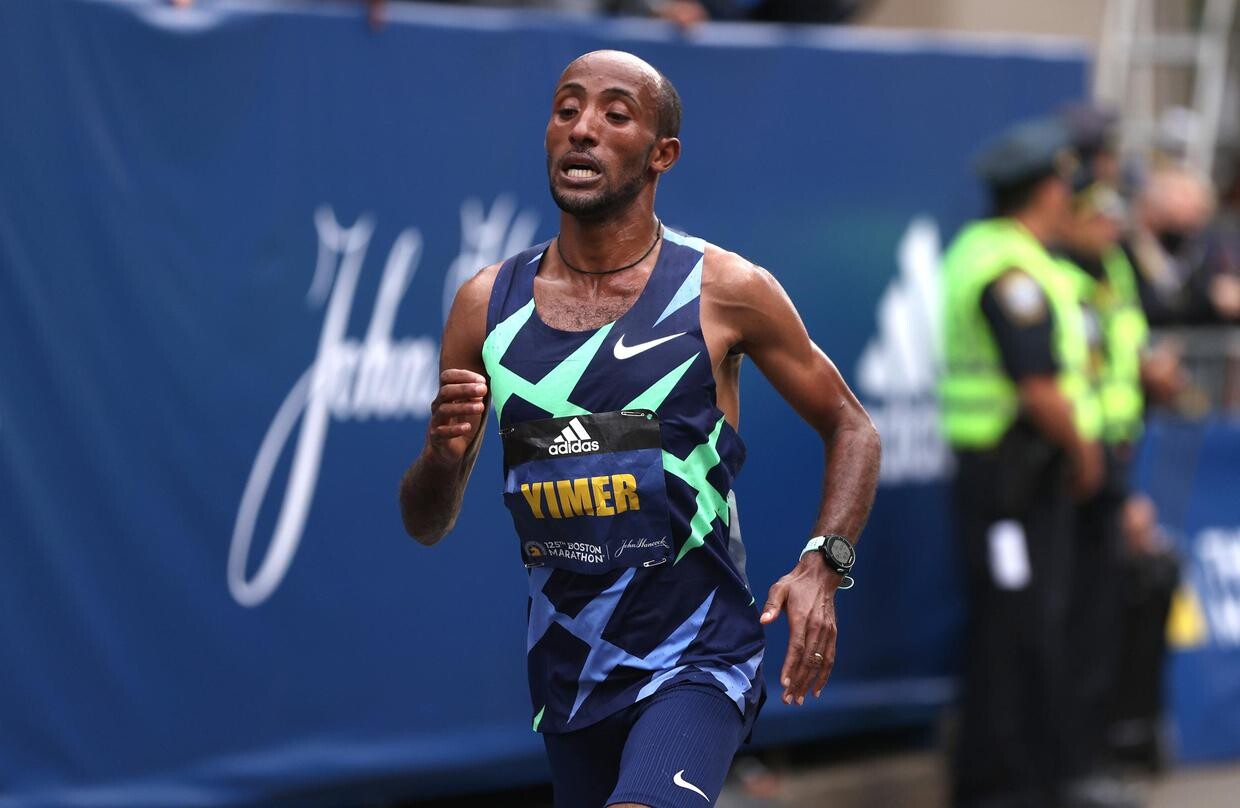
In addition for this World Athletics Elite Label road race there is Gete Alemayehu, who recorded 66:37 for second in Barcelona Half-Marathon in April. Beatrice Chepkemoi of Kenya, who has a PB of 67:29, will make it four women who have run under 67:30.
Three male pacemakers have been lined up and there is Northern Ireland interest courtesy of Emma Mitchell, Fionnuala Ross and Hannah Irwin.
The men’s field is led by Ethiopian record-holder and last year’s winner, Yimer. He is the quickest in the race with a PB of 58:33 but faces fellow Ethiopian Tesfahun Akalnew, who was was runner-up in Larne 12 months ago and has subsequently recorded a 2:06:55 marathon in Amsterdam.
Bethwel Birgen of Kenya is set to set the pace with Scott in particular hoping to be dragged under the 60 minute barrier. The Brit was not at his best in this summer’s track championships but has great pedigree on the roads after having won the Great North Run last year.
Could he get close to Mo Farah’s British record of 59:32 set in Lisbon seven years ago?
Also in the line-up are Shadrack Kimining of Kenya, Huseydin Mahamed of Ethiopia and Gizealew Ayana of Kenya, all of whom have broken the 60-minute barrier in the past.
Northern Ireland’s Stephen Scullion is also due to run plus Omar Ahmed of Birchfield Harriers.
The event has also secured a major coup with the signing of Haile Gebrselassie. The 49-year-old, who won multiple global titles during his career, will run the inaugural Antrim Coast Classic Street Mile for fun with Jo Pavey, young athletes and parents on Saturday evening (Aug 27) before joining race director James McIlroy to commentate on a half-marathon the next day.
(08/26/2022) ⚡AMPby Jason Henderson
MEA ANTRIM COAST HALF MARATHON
The MEA Antrim Coast Half Marathon 2022 has been approved by World Athletics as an Elite Event. The World Athletics certified course takes in some of the most stunning scenery in Europe, combined with some famous landmarks along the route. With it's flat and fast course, the race is one of the fastest half marathons in the world. Starting...
more...Three simple steps to running hills with ease
Running hills seems simple: you power over the top and continue, right? Once you’ve tried a few hill training sessions, or find yourself suddenly running uphill in a race, you’ll realize there’s an art to it. Here’s how to maximize your hill training by running both up and down effectively and efficiently, without getting hurt.
1.- Practice long climbs at sustainable paces
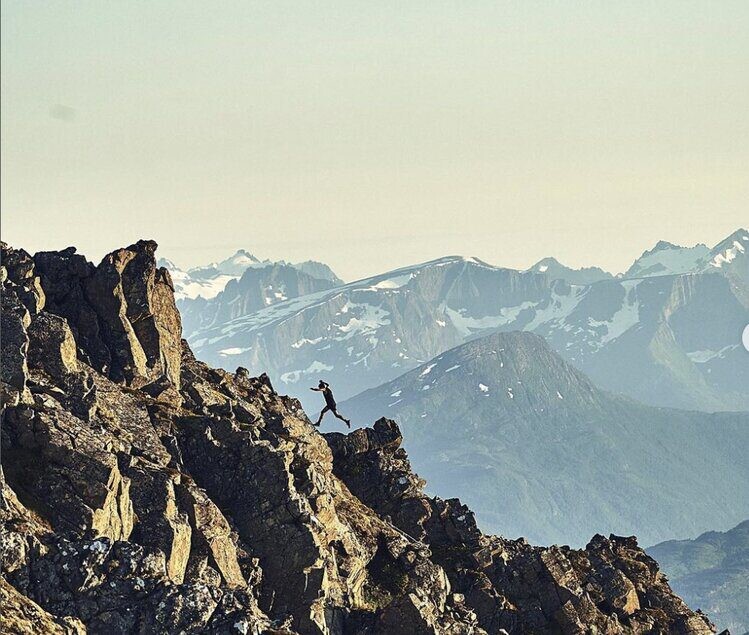
Studies show many runners tackle hills too quickly at the outset, dashing up a long climb at a greater effort than they can maintain. If you’re running a hill sprint workout, this is fine, but in any other circumstance you want to run at an even, sustainable pace. You risk burning energy you won’t be able to regain later in the race or workout if you run full-tilt up every hill you see.
Aim to find a hill that takes you 10 minutes or longer to run up (or set your treadmill incline to the point where you feel a burn, but can smoothly keep pace). Try to mimic the effort you would be expending if you were running on flat terrain, regardless of how slowly it feels like you’re going. If your breathing is noticeably heavier, slow down.
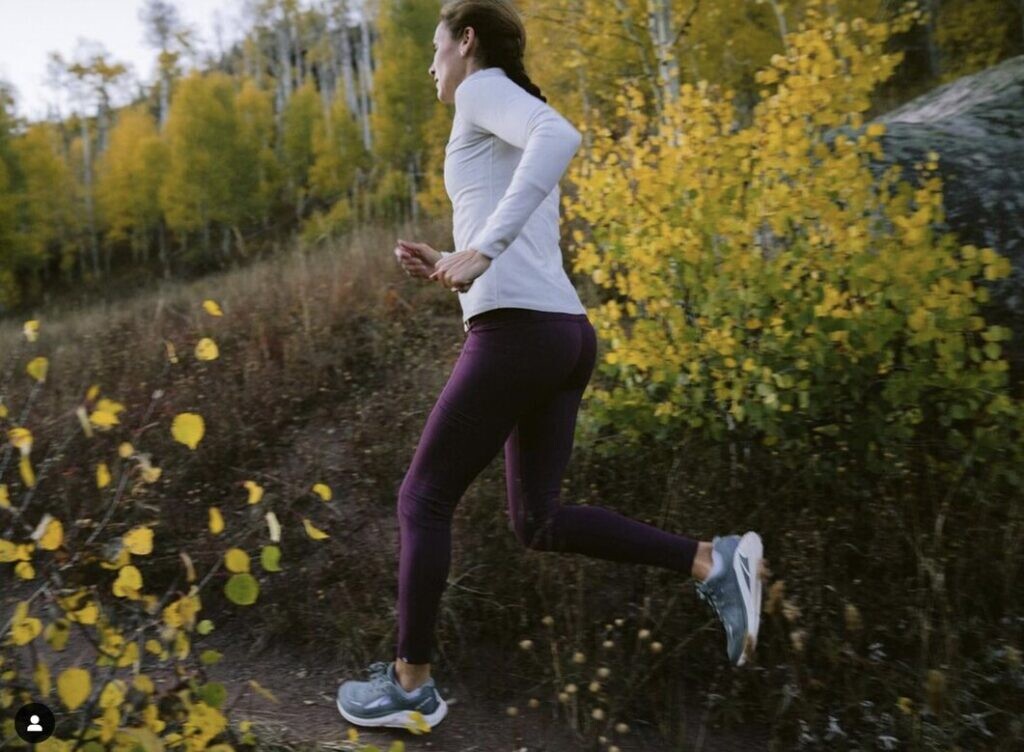
2.- Use ‘long strides’ at the top to transition
If you run too quickly up a hill, you may find yourself pausing at the top or slowing down greatly to catch your breath before resuming your normal pace. You’ll also have a shorter stride as you head uphill, and it takes a conscious effort to switch back to your regular gait quickly.
Cue yourself to open up your stride and accelerate. For practice, find a short hill that takes under a minute to reach the top of. Run hard to the top, lengthen your stride and pick up your pace for 15 seconds. Jog down the hill to recover, and repeat five to 10 times.
3.- Practice good running form on the way down
You’ve probably seen others run downhill at full speed–if you’re a person who can comfortably and safely do that, you’re lucky. For most of us, downhill running is a skill to practice. You want to avoid putting on the brakes too much, but you also don’t want to be pounding down the hill or running out of control.
After your regular run, add in four to six 100-metre strides down a slope, or a gentle hill with a grade you are comfortable tweaking your speed on. Shorten your stride, keep your arms wide and low for balance, and aim to run smoothly with quick steps. If you find your breathing quiets, you can push a little bit harder. Over time, find steeper hills to run down while maintaining the same form.
(08/26/2022) ⚡AMPby Keeley Milne
Here’s how kindness will make you a better runner
Renowned ultrarunner, coach and co-author (with his wife, Megan Roche) of The Happy Runner, David Roche has some suggestions about how we can practice kindness and positivity toward others in our running and racing, and he explains why science backs this up.
“Lifting others up can lift you up too,” says Roche. “It’s not just psychological, but in how physiology responds to stress. Uplifting emotions may improve running economy. Affirmations reduce cortisol and stress. Even adaptation processes on the cellular level may be improved by a positive neurophysical context,” he adds.
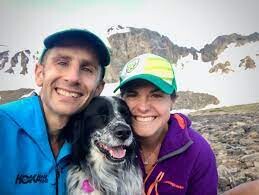
If that’s not enough for you, know that you’ll also have way more fun; whatever the end result of your race, you’ll look back on the experience with more joy.
Celebrate shared experience
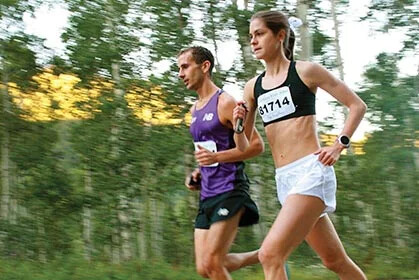
While the running community still has a long way to go in supporting diversity and inclusivity, trails do tend to tear down barriers and bond people. Most of us feel far more comfortable talking to strangers on a trail than we would on a street. If you see someone struggling a little out there, you’ve probably been in that situation yourself, and you have some empathy for them.
That person you stopped to give a salt tablet to mid-race when you noticed them struggling hits the finish-line all smiles and tears, and you’ll feel their success like its you’re own. Roche explains that by building your running community, you will tend to be more process-focused and less results-focused (which was actually, in turn, help you run faster).
Thank every single volunteer and encourage every other runner
If you’ve ever had challenging race, you’ve probably experienced some moments of suffering. Mine, in ultrarunning, often involve struggling to keep enough nutrition in and combat nausea; I find it hard to carry on conversations when I feel that unwell. A much more experienced ultrarunner (who has also combated GI distress) once commented to me that the worse she felt, the more appreciative of the volunteers she tried to be. At first, that seemed unfathomable to me. Be extra thankful when I all I really want to do is cry or throw up?
I set out to test this theory when I ran a backyard ultra earlier in 2022. I dedicated myself to asking questions about others when my brain started to spiral into lowness, and to express my gratitude toward my crew and the race volunteers. That day was a certain kind of magic unlike any other I’ve had, and while I’m sure I can’t chalk it up entirely to practicing being nice, it certainly helped.
Roche sums up the concept of being a beacon of cheer when he says: “Spread the freaking love because life is too short and uncertain and scary to spend it alone, withholding affection.” I can’t argue with that. Even if you’re an introvert like me, up your kindness-game next race. You have absolutely nothing to lose by giving it a try.
You don’t have to be perfect at this–no one is. “The goal isn’t to exude an infallible aura of kindness, but to accept yourself and others as much as you can given the constraints of your background, brain chemistry, and perspective,” says Roche.
(08/25/2022) ⚡AMPby Running Magazine
Gelete Burka will be running the 2022 TCS Toronto Waterfront Marathon on October 16th
A three-time Olympian for her country, Gelete was also the 2008 World Indoor 1,500m champion and 2006 World Cross Country champion. But when she won the 2017 Ethiopian World Championships 10,000m trials and was not selected for London, she turned to the marathon. Her results in the classic distance have been sublime.
Her curriculum vitae includes a personal best time of 2:20:45 (2018 Dubai Marathon) and a splendid 3rd place finish in the 2019 Chicago marathon (2:20:55). Dipping under 2 hours 20 minutes remains a tangible objective.
This will be only the second time the 36-year-old star has raced in Canada. On her previous occasion in 2018 she set a Canadian All Comers’ marathon record of 2:22:17 in Ottawa, despite running with stomach cramps and completely alone for much of the race.
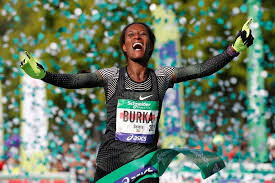
That record was beaten by one second at the Toronto Waterfront Marathon by Kenya’s Magdalyne Masai in 2019. The pair will battle in Toronto.
“My training is going well and I am so happy with my training,” Burka says from her home in Addis Ababa, the Ethiopian capital. The WhatsApp call had been delayed by a couple of hours when the lights went off during a power outage.
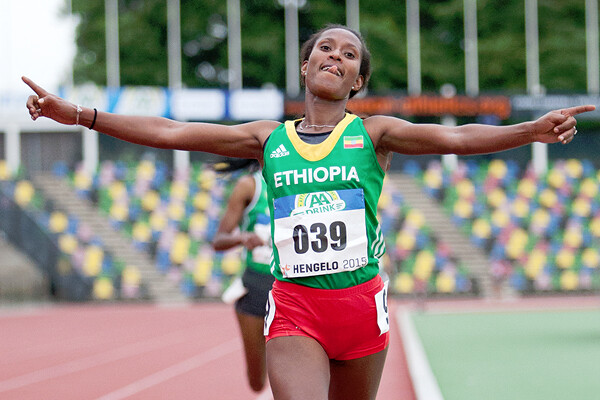
“We have two months until the race and I’m just working hard,” she adds. “It is sometimes raining here. We look at the weather and choose training places. We are working hard in Sendafa, Entoto, Sululta, Arafat. We train in five or six different places.”
Coached by Getamesay Molla, the group of elite runners she belongs to meet in those various locations all within half an hour of Addis by car. In a radical departure, Gelete even spent most of the month of July in Colorado Springs, Colorado where she joined Kenyan born US coach Haron Lagat. It is the rainy season in Ethiopia and heavy rains adversely affected the dirt roads back home.
“It’s nice for training there,” she says of the Colorado Rocky Mountains. “I was with some friends in the US Army Athletics (group). Do you know Haron Lagat? I was with him working there in Colorado Springs before the marathon training.”
Gelete had expected to race Ottawa earlier in May but although her Canadian visa was approved, she did not receive her passport in time to travel to Canada. After training for six months specifically for the race, the disappointment was enormous. It is not easy to train to peak for a specific marathon and then have to find an alternative. In any case, Ottawa is among the final spring marathons.
“One week I was sick. I was so heartbroken,” she reveals with a smile. “I haven’t any business, my only business is working in athletics. I just focus on my running. A little bit I was angry because I worked so hard. It is not like track racing.
“It was a big disappointment but sometimes you forget something that happened in life. I have forgotten it and now am only focused on Toronto.”
Gelete comes from Kofele in Arsi district of south-central Ethiopia. It’s the same region from where national hero, Haile Gebrselassie, originates.
Family is everything to her and currently her youngest sister together with her niece, Deborah, and nephew, Muse, share her home in Addis. After returning from Colorado, one of the first things she did was travel back to visit her mother and her other siblings in Shashamane, one of the main towns in Arsi. It is also known for its large Rastafarian community.
A devoted Christian, Gelete is also a member of the 40-member choir at the Glorious Life Church in Addis. They sing in Amharic, Oromo and English at two weekly services. In addition, she is an usher at the church and so must attend meetings and choir practices when called. Her faith is important enough that following her 2018 Ottawa victory she sought out an Ethiopian church to attend.
Given the news that Magdalyne Masai shaved a second off her Canadian All Comers record in 2019 - and will face her on the Toronto starting line - Gelete smiles. Asked whether Masai’s 2:22:16 standard will now be a target, she thinks for a moment.
“You have to see in the race how you are feeling and also what she is feeling,” Gelete explains. “In a race you think of records when your body feels ok. For now I am not sure. I will look inside the race for what I can do.”
Ethiopians were overjoyed with the performance of their 2022 World Championships team in Eugene, Oregon. With 10 medals, Ethiopia finished second in the medal table behind the host USA. Seeing her compatriot Gotytom Gebreslase take the women’s marathon gold was extra special.
“It is still in my head that I want to run under 2:20,” she says, “because you see the world championships I am so happy (Gotyom) ran 2:18. After you see in championships they are running 2:18 then I think under 2:20 (is possible) if the body is ok and the weather is ok. And, if the others want to run a very good time.”
Clearly this Ethiopian superstar has bold intentions for her future. Her race against Masai in this World Athletics Elite Label race is a tantalizing prospect.
About the TCS Toronto Waterfront Marathon
One of only two World Athletics Elite Label races in Canada, the TCS Toronto Waterfront Marathon is Canada’s premier running event and the grand finale of the Canada Running Series (CRS). Since 2017, the race has served as the Athletics Canada Canadian Marathon Championship and has doubled as the Olympic trials. During the 2021 event, participants raised over $3.08 million for 151 community charities. Using innovation and organization as guiding principles, Canada Running Series stages great experiences for runners of all levels, from Canadian Olympians to recreational and charity runners. With a mission of “building community through the sport of running,” CRS is committed to making sport part of sustainable communities and the city-building process.
(08/25/2022) ⚡AMPby Paul Gains
TCS Toronto Waterfront Marathon
The Scotiabank Toronto Waterfront Marathon, Half-Marathon & 5k Run / Walk is organized by Canada Running Series Inc., organizers of the Canada Running Series, "A selection of Canada's best runs!" Canada Running Series annually organizes eight events in Montreal, Toronto and Vancouver that vary in distance from the 5k to the marathon. The Scotiabank Toronto Waterfront Marathon and Half-Marathon are...
more...US record holder Keira d’Amato and Kenyan Nancy Jelagat Meto head Women’s Field At BMW Berlin Marathon Sept 25
The American record holder Keira d’Amato and Kenya’s Nancy Jelagat Meto lead a high quality women’s field for the 48th edition of the BMW BERLIN-MARATHON on Sunday, September 25. Keira d’Amato improved the US record to 2:19:12 which also gives her the accolade of the fastest in the women’s field, announced by the organisers today. Eight women will be on the start line with personal bests of under 2:21.
The return of Kenya’s double Olympic champion and world record holder Eliud Kipchoge had already been announced some weeks ago as well as the participation of the current BMW BERLIN-MARATHON champion Guye Adola of Ethiopia. Six men on the start lists have personal bests of under 2:06while the organisers SCC EVENTS expect more than 45,000 runners from around 150 countries for Germany’s top road race. The BMW BERLIN-MARATHON is an Abbott World Marathon Majors race and a Platinum Label Road Race, awarded by World Athletics, the international governing body of the sport.
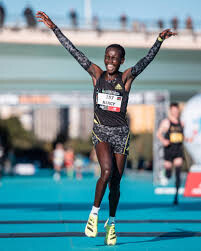
“After securing the presence of Eliud Kipchoge and Guye Adola, we are delighted also to have a very strong women’s field on the start line. With the right weather conditions there is certainly a good chance of very fast times,” said race director Mark Milde.
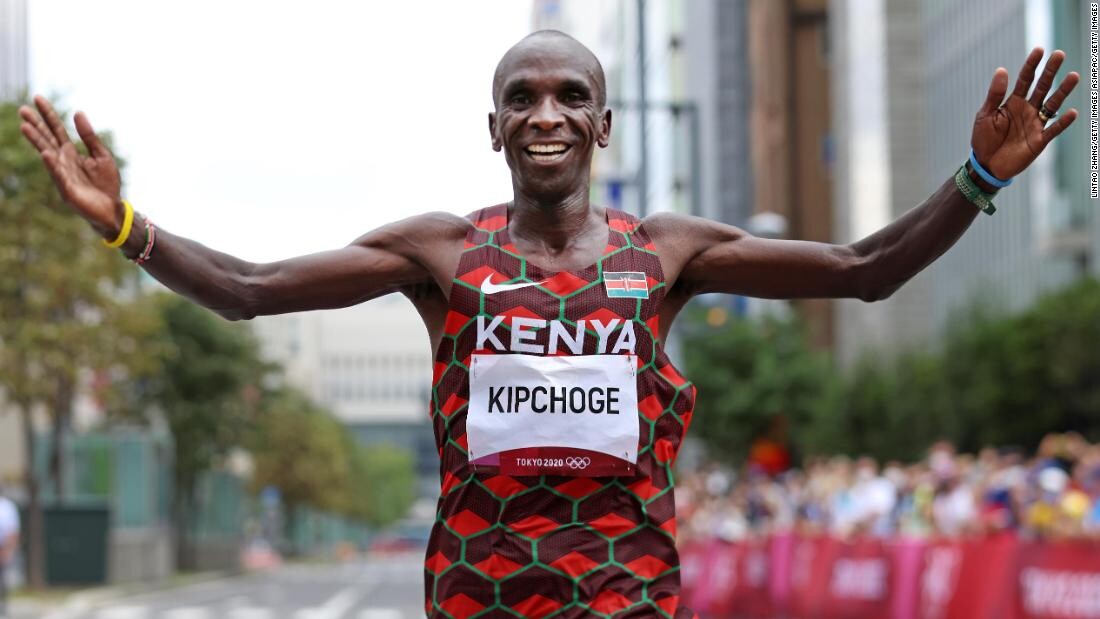
The presence of Keira d’Amato and Nancy Jelagat Meto brings to the event two women who have already run sub-2:20. At the age of 37, Keira d’Amato sprang a major surprise to break the American record with 2:19:12 in winning the Houston Marathon. That led to her late nomination for the World Championships in Eugene where she ran impressively to finish eighth. Sara Hall, who plans to run Berlin and then New York as well, went even better, finishing fifth.
Hall’s best time is 2:20:32. Nancy Jelagat Meto showed fine form in the past year, winning the prestigious Valencia title with a major improvement of 2:19:31. Four months previously she made a strong showing with second place in 65:21 at the GENERALI BERLIN HALF MARATHON.
Quite a few women runners will hope to put Berlin’s fast course, where Eliud Kipchoge set the current men’s world record of 2:01:39 in 2018, to good use in their bid to break 2:20: Gutemi Shone Imana has a best of 2:20:11 while Workenesh Edesa has run 2:20:24 and a third Ethiopian, Sisay Gola, has clocked 2:20:50. The Kenyans also have their contenders to break this landmark time in Maurine Chepkemoi, currently with a best of 2:20:18 and Vibian Chepkirui, who won the Vienna City Marathon in 2:20:59 in April.
Nor should marathon debutants be overlooked in the search for potential women winners, given that the Ethiopian Gotytom Gebreslase did just that to win last year’s BMW BERLIN-MARATHON title. Two possible contenders are Rosemary Wanjiru of Kenya and Ethiopia’s Nigisti Haftu. Both have strong performances at half marathon to their credit which could make them realistic challengers.
(08/25/2022) ⚡AMPBMW Berlin Marathon
The story of the BERLIN-MARATHON is a story of the development of road running. When the first BERLIN-MARATHON was started on 13th October 1974 on a minor road next to the stadium of the organisers‘ club SC Charlottenburg Berlin 286 athletes had entered. The first winners were runners from Berlin: Günter Hallas (2:44:53), who still runs the BERLIN-MARATHON today, and...
more...Is There a Right Age to Start Running?
Running is a versatile sport — which means that people take it up for a variety of reasons. You could start running either to improve your health, compete in a race, raise money for a charity, lose weight, or for a select few, to become a professional runner. Now, you might be wondering about the right age to start running — if there is such a thing as too early or too late — and how it affects your body differently. Let’s find out.
Most, though not all, professional distance runners start running very young, usually even before they turn 10. And if they haven’t been a long-time runner, they’d have likely participated in other endurance sports at a higher level from an early age. Most elite runners have years of competitive running under their belts before “going pro”.
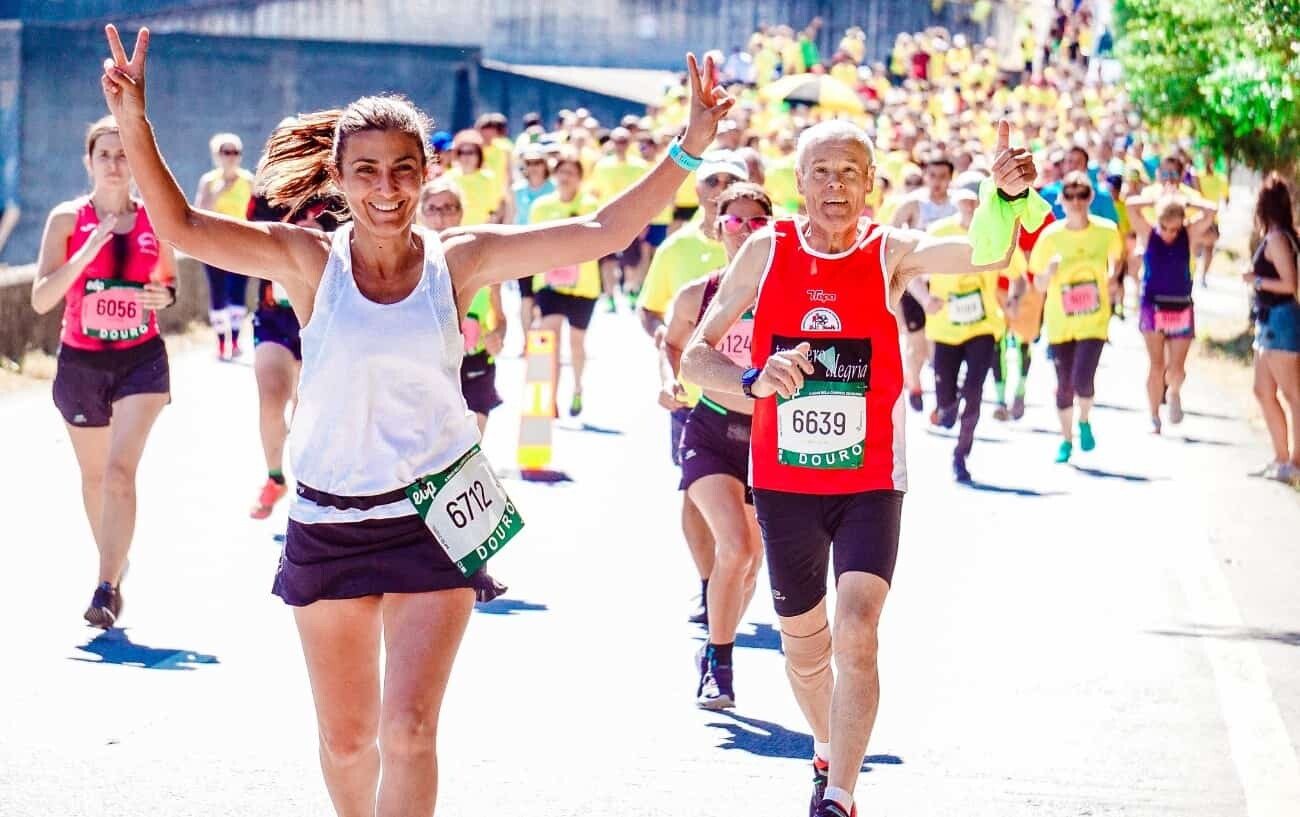
It is important to note that speed and endurance are largely inversely related. As people age, their speed diminishes, but their endurance does not. However, one’s absolute aerobic capacity does decrease with the years. So, while there is no strict or right age where an individual must start running in order to become a professional, generally speaking, the latest age would be between the late 20s and early 30s.
When is it a good time to start running?
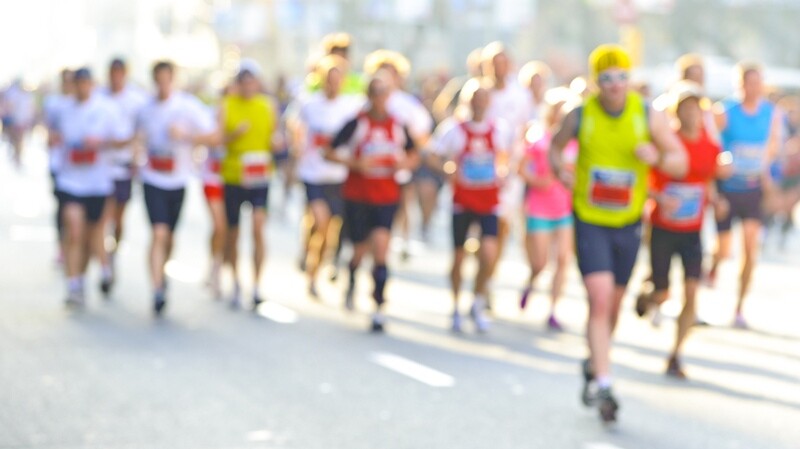
From a health perspective, there is never a wrong time. Running is a series of small one-legged jumps that most people can do. Many myths, such as running being hard on the knees, have been proven to be just that — myths. So, at the end of the day, there is no age that is not appropriate to start running.
Running is often introduced in middle school (grades 5 to 8) as part of physical fitness classes. When starting out at a young age, the focus should be on fun and possibly integrating running with other sports.
From one’s late teens to the thirties, the focus is often on competition and using fitness as a means to lose weight and get in shape. In one’s late thirties and beyond, the focus is often on overall health, weight loss, and stress reduction.
Are there any prerequisites?
Before undertaking any sort of physical fitness routine, regardless of the modality, it is a good idea to get a medical clearance from a professional. You may want to go to a sports cardiologist or any specialized sports clinic. Tests such as blood work and electrocardiography (ECG) are often performed to ensure that an individual has no underlying heart or other issues.
A medical screening would help to know if the potential runner has any contraindications (for instance, doesn’t have a heart rate above 140), which can be discussed before beginning an exercise program. Also, it helps in identifying any underlying conditions that may only occur during cardiovascular activity.
Cardiovascular fitness precedes musculoskeletal readiness
What this means is that one’s cardiovascular system develops at a faster rate than one’s bones, muscles, and connective tissue (i.e., tendons and ligaments). Just because a runner can handle a particular intensity and/or distance from a cardiovascular standpoint, doesn’t guarantee that their connective tissue, bones, and muscles can do the same. This is why many new runners are susceptible to issues such as tendinosis (or tendonitis), shin splints, and muscle strains.
Therefore, a running program for a beginner should focus on slow progression with adequate rest days. If someone is out of shape, a run/walk program is often suggested. A beginner runner should work with a coach on a customized program, which will help monitor their progress.
Running for beginners calls for personalized coaching, dedication, and persistence. And some love for the sport. So, when’s the right time to start running? Right now!
(08/25/2022) ⚡AMPby Rick Prince
Four reasons fall is the best time to race
There is nothing quite like the fall racing season, and now is the perfect time to sign up.
Every season has its pros and cons for running, but let’s be honest: fall takes the cake. In fall, it’s rarely too warm or too cold, there’s a fresh feeling and smell to the air, and you can’t beat the fall colors. If you don’t have a fall race on your calendar yet, now is the perfect time to sign up and start training so you can ace your race.
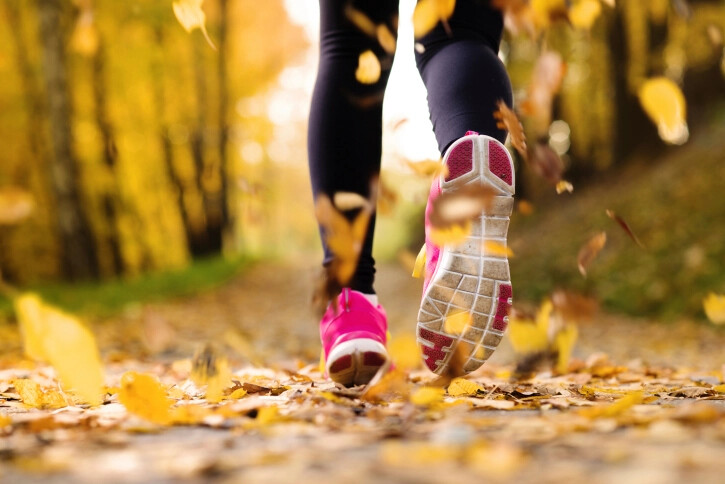
Here are four reasons why fall is the best time to race.
Ideal temperatures
After dealing with hot, humid runs all summer, nothing feels more refreshing than the cooler temperatures fall brings. Doing workouts or racing in the fall feels about 10 times easier, thanks to the cooler weather. After training in the heat all summer, your body will be acclimatized to warm conditions; so on a cooler race day, you’ll see better results.
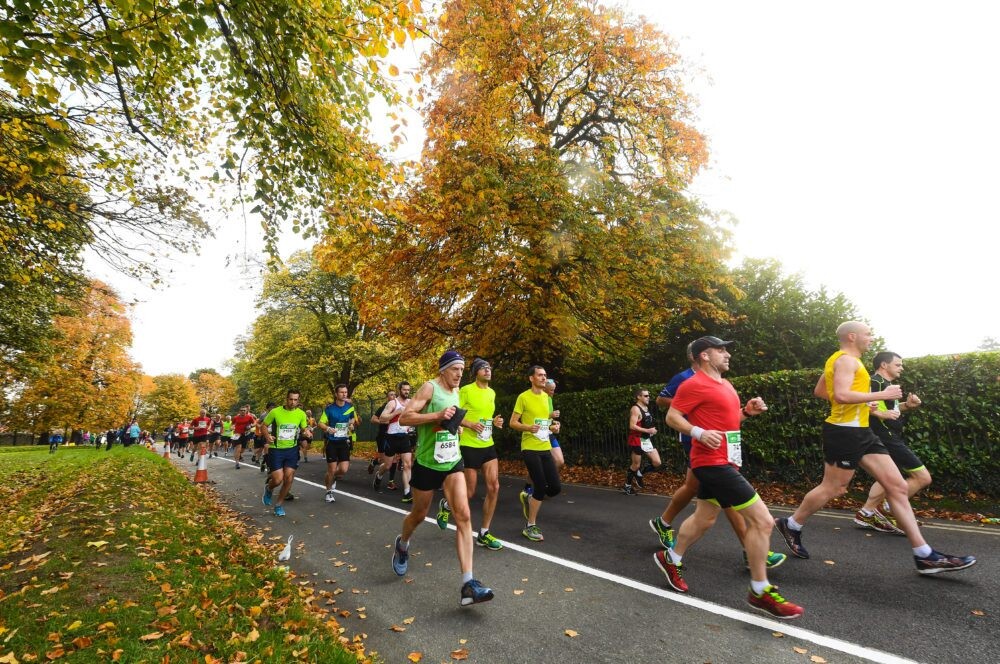
A plethora of races
If you’ve been training all summer and still haven’t registered for a fall race, don’t worry. There are many fall races across Canada, from the beginning of September to the end of November. There are plenty of half marathons, 10K’s and 5K’s taking place all across Canada this fall, check out our Canadian Race Guide for upcoming races in your province.
The fall season is the perfect time to put all your summer training on display and to watch your hard work pay off.
The best time for marathons
For marathoners, there are four Abbott World Majors within a six-week span: Berlin, London (which is back to its usual fall schedule this year), Chicago and New York, plus three Canadian marathons (in Montreal, Quebec City and Toronto). Fall is when you finally get to see your training partners and favorite elites throw down at some of the biggest marathons in Canada and around the world.
Beautiful scenery
Is there anything more scenic than a fall race as the leaves start changing color? The smell of the cool air and the crunch of the leaves under your feet is satisfying as it gets. Plus, it makes for great race photos.
(08/25/2022) ⚡AMPby Marley Dickinson
Five Ways to Make Running a Habit
This time of year is the perfect time to start getting back in shape, revamping your fitness routine, and falling in love with running. However, one of the most challenging parts of beginning to run is learning how to make running a habit.
Making running a habit is key to any long-term success.
Whether you’ve taken up running to lose weight, gain muscle, stay in shape or conquer new goals – you’ll be hard-pressed to accomplish much without consistency.
While running is known for its impressive health benefits, heading out the door for a run once every three or so weeks won’t do you much good.

The challenge of any sport is no doubt that it is difficult to begin. Trying something unfamiliar for the first time can feel uncomfortable and downright unpleasant. But persevering through these struggles is what makes us stronger.
If we’re lucky, we’ll find the motivation we need to continue on even when times are hard. Eventually, each day will feel a bit easier, and before long, this once foreign activity will become part of our routine.
But still, getting to this point can often be tricky. Even once you’ve started to feel comfortable running, making a habit out of it brings new challenges of its own.
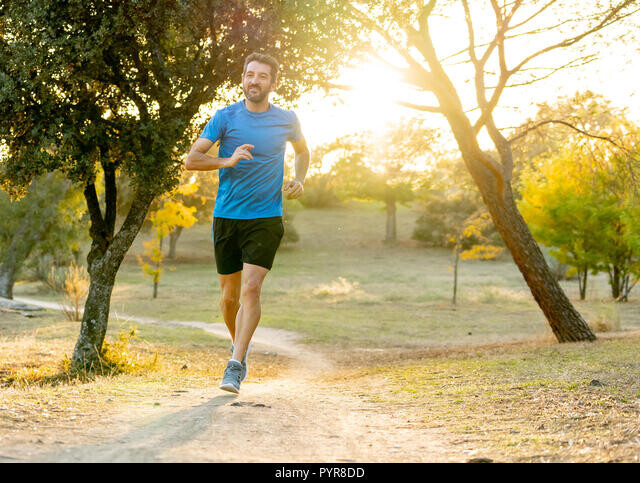
One of the biggest obstacles you’ll face when incorporating running into your lifestyle is finding a way to make running a habit. When life gets busy, which is so often does, finding the time to head out for a run can feel nearly impossible.
However, these simple tips will help you quickly make running a habit – so you never have to think twice about heading out for your run. Before long, your friends will be calling you “their runner friend” and questioning how in the world you make time for it all.
1.- Schedule it in.
There’s nothing worse than knowing you have to run, but not knowing when you’ll be able to fit it in. Starting the day without a schedule or plan for your run will likely leave you scrambling to make time before you go to bed. And after a long day, the last thing you’ll want to do is any sort of physical activity – leaving you primed to succumb to those excuses.
Create a plan for your day ahead of time, and make a point to schedule in your run. If possible, make a plan for the entire week all at once. Look through the activities you have planned each day and decide on a time to run that makes sense.
If your Thursday is packed with evening activities, plan to set your alarm and run before work. If you have Tuesday afternoon off work, plan to run after lunch before settling down on the couch.
Proactively planning time to run will help minimize excuses and leave you with less reasons to skip out. Before long, you’ll know the plan for the day before it even begins.
2.- Find a time that works.
While the thought of running in the wee hours of the morning may feel motivating, it might not work best for you. Likewise, just because your friend fits their workout in after dinner doesn’t mean you’re going to want to head out after a big meal.
Find a time that works for you to run each day and stick to it. There is no such thing as the wrong time to run. Experiment with morning runs, lunchtime runs and evening runs until you find a time of day that works best with your schedule.
Once you’ve decided on a set time each day to run, your body and mind will begin to expect to run at this time. Stay consistent with your timing as much as possible to help establish a schedule. Before long, running will be a habit that you don’t even have to think twice about.
3.- Prepare ahead of time.
Frantically trying to round up your gear while you scramble to get dressed in time to run will just leave you wanting to skip it all together. The key to maintaining a consistent running habit is preparation.
Prepare your gear, clothes, shoes and mind ahead of time – no matter when you plan to run the next day. Set out all of your fuel, water, gadgets and clothes to take away as much decision making as possible.
It’s much harder toskip a run when everything is laid out and ready to go. Take the time to prepare your running gear the night before no matter when you are planning to run. Then, as soon as you wake up or get home from work, change into your running clothes.
4.- Don’t think twice about it.
Sometimes overthinking can be our biggest enemy. When we take the time to really think about our run, we often find ourselves coming up with a list of excuses to skip it.
Make a plan to run, prepare your things ahead of time, and then don’t think twice about it. When it’s that time of day, change into your running gear and head outside.
Allowing yourself extra time to procrastinate just leaves you feeling lazy and sluggish – and wishing you wouldn’t have wasted so much time when you finally do head out for a run.
In the beginning phases of creating a running habit, just doing it is key. Get out there every time, no matter how much you don’t want to. Stay consistent with your running each week and maximize your time by not thinking twice about it.
5.- Set a goal.
Creating a running goal is a great way to keep yourself motivated and help make running a habit. Decide on a certain distance, weekly mileage, pace, or race that you’d like to complete and focus on this goal when running feels challenging.
Working towards a goal gives you purpose every day. When you’re feeling lazy or unmotivated, reminding yourself of your goals will help you stay on track.
Set a goal as you begin running and remind yourself how easily success will come once running is a habit.
No matter how much you love running, there will always be days when you just don’t feel like it. Creating a running habit is key to succeeding during these times of low motivation.
Staying consistent as you start running is the best way to really make running a habit. Getting out there every week to run those miles will help show your mind and body what to expect. Before long, you’ll be heading out for your run without even a second thought.
(08/24/2022) ⚡AMPKenyan Evans Chebet eyes course record in New York Marathon race
Boston Marathon champion Evans Chebet will be looking to extend his winning form during the New York Marathon which goes down on November 6.
Chebet will be battling it out with defending champion Albert Korir among other top names in the elite field.
Korir stormed to victory last year after clocking two hours, 8:22 seconds ahead of Mohamed El Aaraby with 2:09:06 and Eyob Faniel came third in 2:09:56.
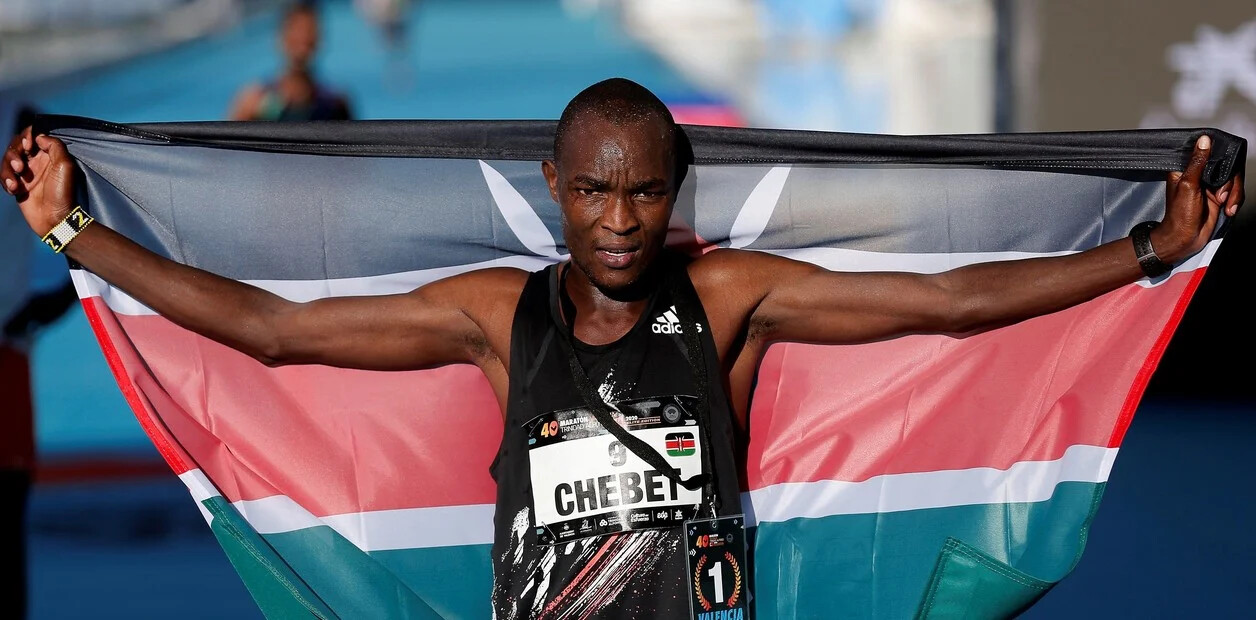
Four of the six Abott World Marathon Majors will be taking place this season. Berlin Marathon will be held on September 26, London Marathon on October 2, Chicago Marathon October 9 and New York Marathon in November.
In an interview with Nation Sport, Chebet said that he has started preparations to make his debut in the New York Marathon race.
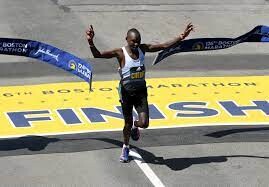
He said that the race looks competitive, given that only two Kenyans will be lining up for the contest, but he will do his best.
“I have started preparations for my first New Marathon race. I understand the course is tough but I believe with good training I will be able to register good results,” said Chebet.
The athlete said that he will apply the same tactics he used to win the Boston Marathon during the New York race, and if possible, run a course record.
But this could be a tall order because since Geoffrey Mutai registered the 2:05:06 course record in 2011, no athlete has run close to that time due to weather conditions.
“I have asked around and I have been told that the course is tough, and I have to prepare well for that. Marathon racing needs a lot of calculation and you just can’t run without thinking what awaits you in the last few kilometres,” added Chebet.
At the same time, he said that there is need for athletes to travel with translators because they can use Kiswahili language to express themselves during the pre-race conference and interviews after the race.
“I feel comfortable expressing myself in Kiswahili, and I know many athletes are struggling but I think it is high time we have translators when we compete abroad just like the way Ethiopians do when they talk in Amharic,” he said.
The big names in the New York Marathon include; the 2020 London Marathon champion Ethiopia’s Shura Kitata, Brazilian Olympian Daniel Do Nascimento, Japan’s Suguru Osako who was third at the 2018 Chicago Marathon, Dutcs Olympic silver medallist and national record holder Abdi Nageeye and four-time Olympian American Galen Rupp.
World Athletics Championships marathon champion Ethiopia’s Tamirat Tola is also in the mix. He won the world having won the World Championships marathon title in Oregon, USA on July 17.
Albert Korir won the last Abott Marathon Majors series after accumulating 41 points for the 2019-2021 season.
The Abott Marathon Majors series this season began with the delayed 2021 Tokyo Marathon race which world marathon record holder Eliud Kipchoge won on March 6 this year. Thereafter, Chebet won the Boston Marathon title on April 18.
Ethiopia’s Tamirat Tola is also in the mix having won the World Championships marathon title last month in Oregon, USA.
(08/24/2022) ⚡AMPby Bernard Rotich
TCS New York City Marathon
The first New York City Marathon, organized in 1970 by Fred Lebow and Vince Chiappetta, was held entirely in Central Park. Of 127 entrants, only 55 men finished; the sole female entrant dropped out due to illness. Winners were given inexpensive wristwatches and recycled baseball and bowling trophies. The entry fee was $1 and the total event budget...
more...One simple trick to master fuelling on the run, Practice, practice, practice: here's how
Practice. If you’re used to simply lacing up your shoes and heading out the door, it can seem like a nuisance to have to consider your meals, snacks, and what nutrients you should be taking in every single time you run. Becoming better at this key skill for any longer-distance race means incorporating it into your training as often as possible. Here’s why, and how to get started.
Experiment with gels and real food
If you’re training for a marathon distance or longer, you should be taking in some form of calories once your weekly long runs are longer than an hour. Regardless of what nutrition plan you follow in your life outside of running, you’ll probably turn to carbohydrates during a race, and for good reason. Simple carbohydrates, often in the form of glucose, are the easiest to digest and will give you an energy boost quickly.
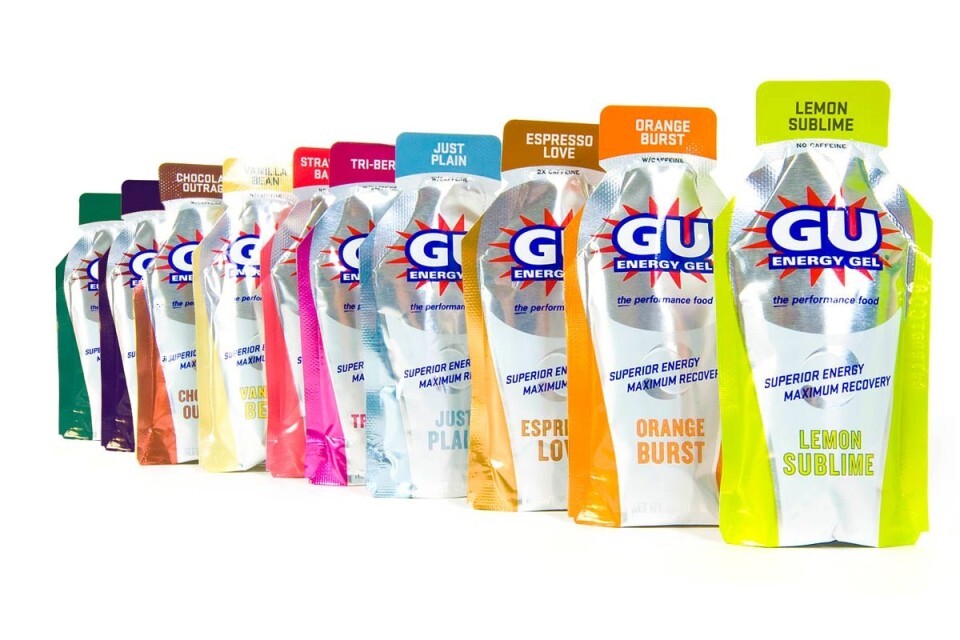
If you’re training for an ultra, depending on the distance, you need to co-ordinate consuming thousands of calories. Gels can be an easy form of simple carbs to take in, but when you’re logging many hours, you may want to turn to real food.
If you have tackled a few long runs, you’ll know that while you might feel hungry, not every type of food will satisfy or sit well in your stomach. Experiment on long runs with foods that appeal to you, and see if you can manage to eat and digest them while running without GI distress. Some runners have no issue eating a sandwich while logging mileage, others will feel sick trying to digest anything of substance. The good news is that you can actually train your gut to handle digesting food better while running; it just takes (you guessed it) practice.

Practice the actual act of managing to eat while running
If you’ve ever volunteered at a marathon or ultra aid station, you have probably noticed people struggling to open gels, drink from little cups, or unscrew the lids on their hydration packs. While some very experienced athletes have their fueling down to a fine art, the vast majority of runners aren’t at their most dextrous during a hard run.
When most of the calories you are consuming are being used to keep your legs moving, your body temperature regulated and your brain functioning enough to keep you on the course, you lose fine motor skills. Practicing eating and drinking on long runs can make a vast difference when it comes to race day.
Learn how your body responds to salt and caffeine
Caffeine can be a very effective stimulant for athletes, but knowing how much and how to use it is unique to each runner. A large body of research has shown that caffeine enhances mental alertness and delays physical fatigue, but it can be tricky to determine how much is ideal for your body and how you prefer to ingest it. Test out gels or drink mixes that contain caffeine, caffeine pills and caffeine chewables to see if you find them effective.
We know that sodium is an essential electrolyte, and salt is one of the thing things the body becomes depleted of most quickly during hard efforts. Salt also contains electrolytes like magnesium, calcium and potassium, so it’s good for more than just sodium replenishment. Experiment with salt pills, chewable salt tablets, or simply add a pinch of salt to some water.
Drink mixes have varying amounts of electrolytes, so be sure to keep track of what you try and what seems effective–hotter days will require more salt to keep your body running smoothly.
While it can seem like one more thing to juggle when you head out to train, making sure you’re keeping track of fuel and experimenting at every opportunity will make you a more wise, prepared and strong athlete. When it comes to fuelling, practice really does make perfect.
(08/24/2022) ⚡AMPby Keeley Milne
How to run every street in your town
Is your training lacking a bit of motivation? Try finding and exploring places you've never run before with CityStrides.
The #RunEveryStreet challenge started organically for runners like Vancouver’s David Papineau, who set out with a pen and paper to run all 1,090 streets in the Vancouver area in 2014. It wasn’t until 2018 that renowned ultrarunner Rickey Gates ran every street in San Francisco over 46 days, which put CityStrides on the map and opened the realm of possibilities for runners like Toronto’s Stephen Peck, who recently did the same thing on his city’s 11,000 streets.
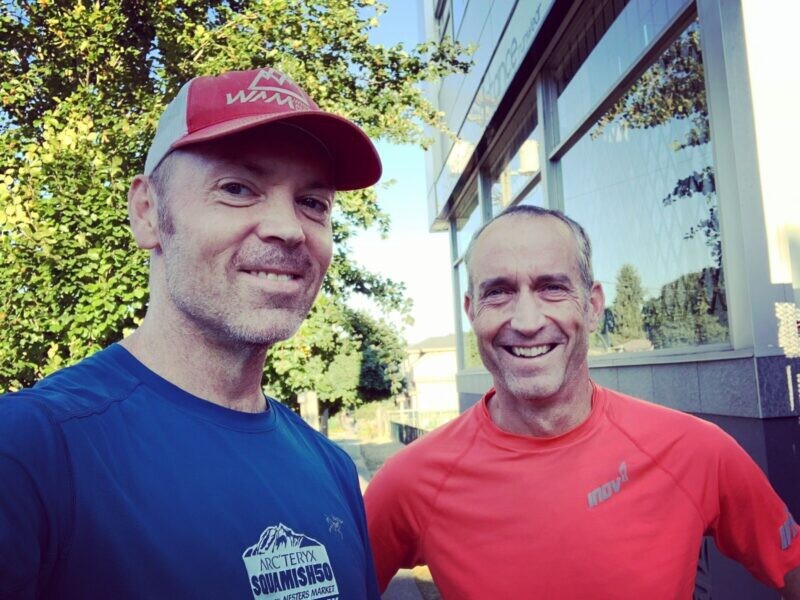
In case you do not know what CityStrides is (i.e. me, six months ago), it’s an Internet open street map software that syncs with MapMyRun, Garmin and Strava, creating a heatmap which shows you how much of a city you’ve run. CityStrides uses the GPS data from the third-party apps and throws all the runs or walks you’ve ever done on a map, giving you a super precise detail of the streets you’ve covered and when you’ve covered them.
When Papineau first uploaded his runs to CityStrides in 2018, he was shocked at how much of Vancouver he still had to cover. “I used to print a map on paper and bring it with me on my run,” says Papineau. “Trying to run every street is like building a house: most runners have covered the main streets and parks (the foundation), and running every street is just filling in the gaps between.”
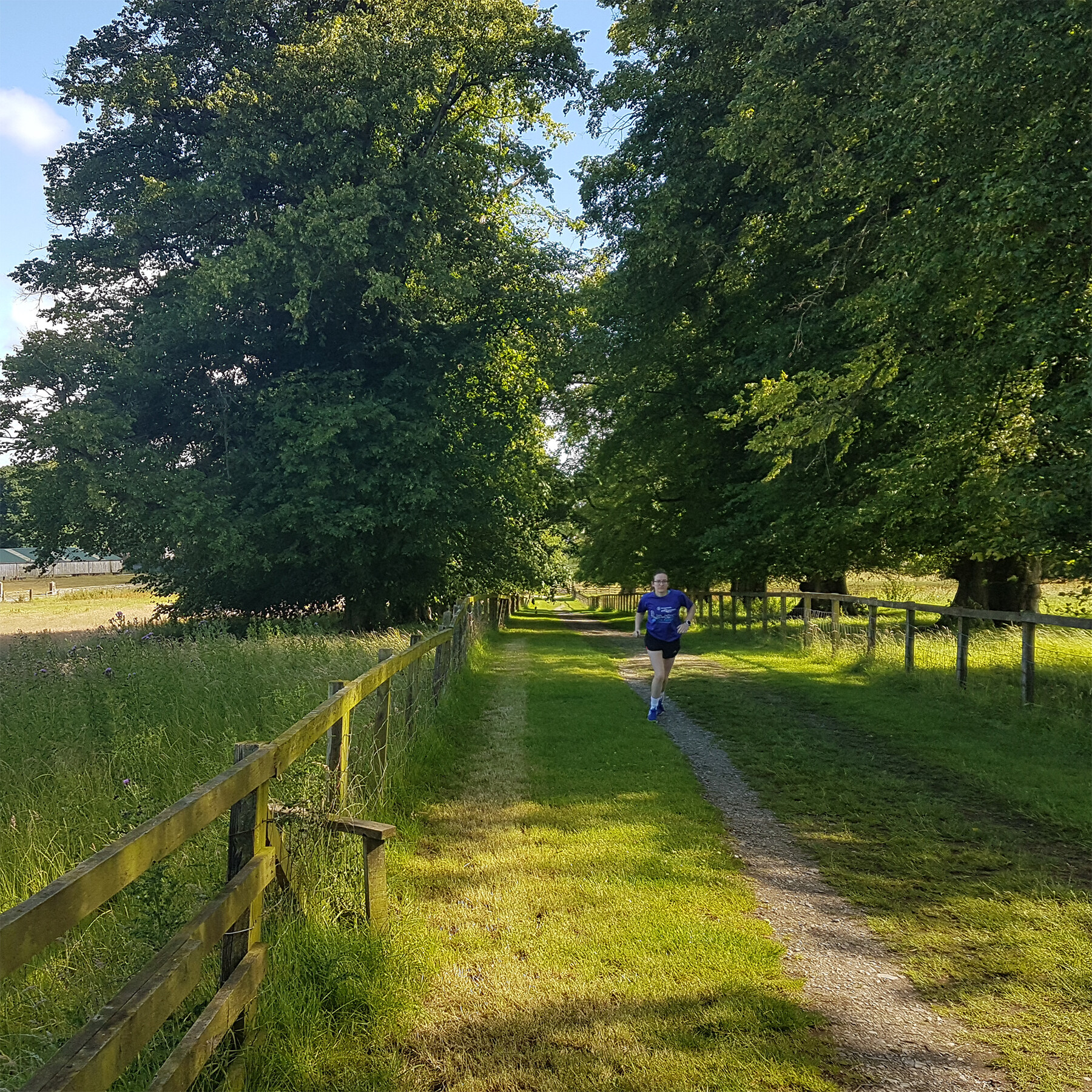
How to get started?
If you use a third-party app like Strava or Garmin Connect for your training, getting started on CityStrides is easy. Visit the CityStrides website and connect to the third-party app to create your profile within seconds.
The application will automatically create a profile for you and connect all your previous runs and all runs moving forward.
If you are just starting with running, using CityStrides is an easy way to keep yourself motivated. Use your progress as motivation to run every street in your neighbourhood or town. “One of the rewarding things about CityStrides is that you will often see places you would often never go to,” says Papineau.
Papineau said the best way to get started is to get out and do it! “Start with the short runs around your immediate neighbourhood on streets you have not run down, and branch out from there.”
Some techniques Papineau used while completing Vancouver were pre-setting his route on his GPS watch, plus graphing out runs in areas he’s never been. “In grid cities or towns, it’s easy to tackle running every street in a particular neighbourhood since the roads are restricted to parallel and perpendicular directions.”
“I’d travel to an area and write down the streets I needed, then run them,” says Papineau.
“When you start seeing your total completion percentage go up, you almost get this endorphin rush for completing new streets,” he says. “It’s rewarding to see all your hard work documented.”
CityStrides may become an obsession, or you may not like it at all, but at least you get to see and experience new places you’d never see in your own backyard.
(08/24/2022) ⚡AMPby Marley Dickinson
Tim Murphy founder of San Diego Elite Racing Inc has died at age 77
Tim Murphy, founder of San Diego’s Elite Racing, Inc., the man who reinvented running, not once but three times, succumbed to pneumonia Wednesday night (August 17, 2022) passing in hospice care at his home in San Diego, California. He was 77 years old.
Today, though smaller than it once was, the Rock ‘n’ Roll Marathon Series remains the largest purveyor of running events in the world, with 29 events in 16 U.S. states, Washington D.C., and seven foreign countries. But a quarter century ago, who knew what lay ahead in the wild open spaces of the first Rock `n` Roll Marathon?
Some observers even questioned the concept of rock bands strung along the marathon course altogether. What does rock`n` roll have to do with San Diego, much less with running a marathon, the ultimate test of endurance?
Well, on June 21, 1998 the world got its answer. With the snarl of a blistering guitar solo, the tight syncopation of a snare drum, and the slap of millions of accompanying footfalls, the second-wave running boom announced its arrival in San Diego with a carnival of music, endorphins, and sweat. It’s like Tim turned over the calendar two years early to introduce the new century.
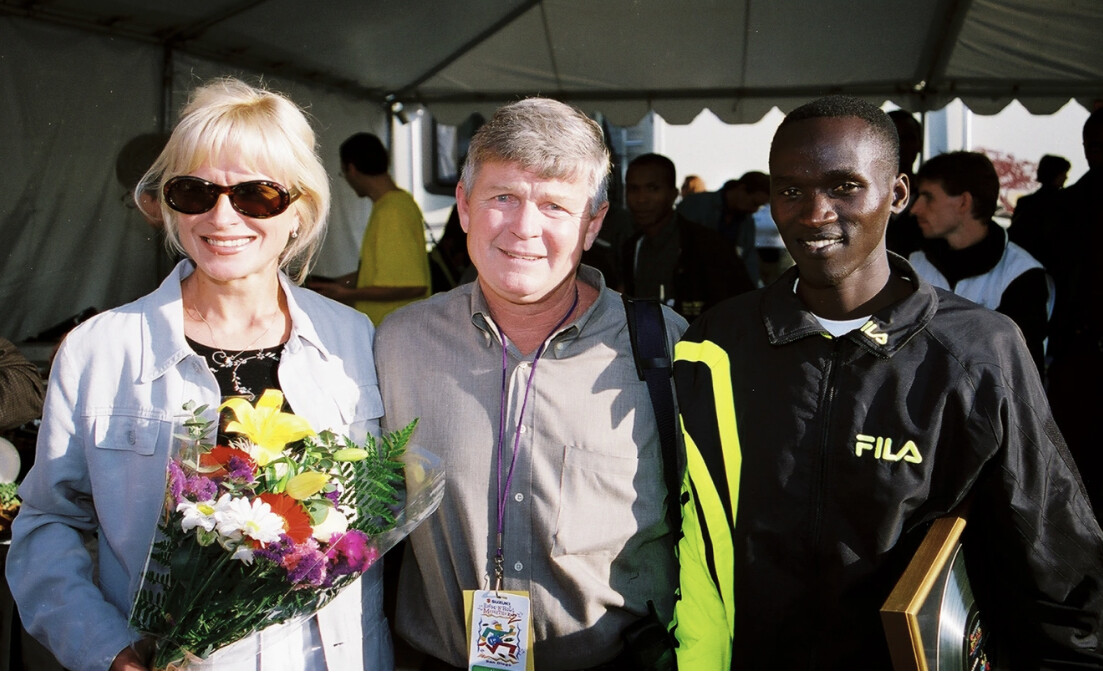
“We created a theme marathon without intending to,” said Tracy Sundlun, Tim’s long-time partner at Elite Racing.
NEW DEMOGRAPHICS
No new major marathon had sprung up in the U.S. or the world since the Los Angeles Marathon arrived in 1986. In its first year, LA registered 10,787 runners, making it the largest inaugural marathon in history. Instantly, that number became Tim‘s goal for San Diego to beat LA.
Even before its first steps were run, though, there was the feel of a major marathon about the Rock ‘n’ Roll Marathon. Tim had conceived the idea years before while running the final lonely miles of the Heart of San Diego Marathon out along Friar’s Road to Qualcomm Stadium in Mission Valley. Wishing there were some kind of support along the road to help out, Murphy thought, wouldn’t it be great to have music to run to.
It took a long time for his idea to gestate, but the seed had been planted.
After a decade of developing his reputation as an event innovator, beginning in 1986 with the Carlsbad 5000 just north of San Diego – the event that proved runners in a then 10k / marathon focused world would run a 3.1 mile race, while introducing “spectator running” where the professional field followed age and gender specific races over the same tight-looped course – Murphy’s idea of a musical marathon came to life, born out of two separate, but catalyzing events.
“When they opened the Rock & Roll Hall of Fame in Cleveland (1995), there was so much hype about it,” Tim told San Diego YuYu in 2004. “So I was running along one morning and I thought, “If I lived in Cleveland I would do a marathon that would start and finish at the Rock & Roll Hall of Fame and do a big concert afterwards.”
One year later 273 San Diegans were among the record 38,000 entrants at the 100th anniversary of the Boston Marathon.
“Afterwards, they had this get together and all they could talk about was why there wasn’t a major marathon in San Diego. And all the runners, some of them pretty important, just wouldn’t leave me alone about it. So I essentially dusted off the old idea I had for Cleveland and started.”
With the backing of a set of investors, led by Hollywood A-list producers Frank Marshall and wife Catherine Kennedy – “Jurassic Park”, “Indiana Jones” , “Jason Bourne” – along with celebrity ambassadors like basketball Hall of Famer Wilt Chamberlain, Tim promoted his concept relentlessly at race expos around the country, touting his new baby with posters and ads that said, ‘You missed the first Boston. Don’t miss the first Rock ‘n’ Roll!’
No longer a simple feat of speed endurance, the grueling marathon had been reinvented as a rollicking 26-mile long block party through America’s Finest City.
Despite a 37-minute delay at the start due to some perceived traffic issues on the course – which led to a water-dousing through the first aid station – the high-spirited music rocking the sidelines caused an immediate sensation.
Nearly 20,000 entrants from 30 countries and all 50 states passed the word, ‘You gotta try this one!” And that was before they got to the post-race concert that night featuring Huey Lewis and the News, Pat Benatar, and the Lovin’ Spoonful!
The makeup of year one’s field proved historic, as well. 50% of the field was women, far and away the largest such percentage of any co-ed road race of any distance to date, and a pivot-point in the history of the sport. Before RnR San Diego, the largest percentage of women in a major marathon had been just 23% at New York City. Most road races had only 10% to 15% women at the time.
Rock ‘n’ Roll’s runners were also slightly older than the norm, slightly wealthier, and slightly slower than the average marathon runners.
At a time when road race courses were designed to be minimally visible and impact their communities as little as possible, the initial Rock ‘n’ Roll Marathon layout was designed to be an infomercial for the city, regardless of the potential inconvenience for some.
When city officials asked how long they would have to keep the streets closed, Tim based his projections on the New York City Marathon, saying, ‘we might have 50 or 60 runners who will take longer than six hours 30 minutes. But we’ll just direct them onto the sidewalk, so you can reopen the streets.’ As it turned out, 1500 runners took over seven hours to complete their 26.2 mile journey.
But Tim Murphy wasn’t just in it for the large participation numbers, important as they were. He always had his eye on top talent, too, and urged elite athlete coordinator Mike Long to pull in a world-class field, like he did every year for the Carlsbad 5000 where so many world records were set.
Mike Long, the late Elite Racing athlete recruiter with Rock `n` Roll 1999 champs Tarus & Bogacheva
Nobody knew how fast RnR could be run until young Kenyan, Philip Tarus, busted a 2:10 opener for the men, with Russian women Nadezhda Ilyina and Irina Bogacheva battling just nine seconds apart at the finish for the women in 2:34. That told the athletes of the world, ‘This one is worth having a go,” especially after all the Suzuki products and prize money checks were handed out.
Not since the New York City Marathon’s first five-borough extravaganza in 1976 had a marathon come on the calendar with such dramatic impact: The largest first-time running event in history; the most ingenious show along the sidelines and at the finish ever produced; $18.6 million (net) raised by and for The Leukemia & Lymphoma Society’s Team In Training charity – the largest amount ever for a single-day sporting event; and to cap it off, world-class performances by its champions.
Though the race lost over $1 million in its first year, it instantly became the number one economic impact event in Southern California, generating $39.3 million in its inaugural year, as two-thirds of its entrants came from outside the region. With Murphy’s persistence and the continued backing of his investors, Rock ‘n’ Roll eventually broke even in year three. Thus was the foundation set for what has become a global phenomenon, the so-called second-wave running boom.
Born and raised with two sisters in Denver, Colorado, Tim attended high school in Nebraska where he competed in the 880-yard run and threw the discus. He then spent the first part of his professional life toiling in the health care industry, selling hospital supplies on the road while moving across the country time and time again. Finally, in the late 70s, he decided to abandon the rat race and settle in San Diego where his two sisters lived.
Though he ran track in high school, he wasn’t a distance man. But once in San Diego and introduced to the area’s vibrant running community, like so many before him, he got hooked on the sport. Tim often trained up to 10 miles a day, which led him into the race organization business and the founding of Elite Racing in 1988.
Always more of a behind the scenes workaholic than a flashy frontman, Tim did serve as interim race director for the troubled Chicago Marathon in 1989. But mostly he focused like a laser on the business side of Elite Racing. Tracy Sundlun, former head of New York City’s Metropolitan Athletics Congress, and a former collegiate and club track coach, joined as Tim’s partner in 1997, taking on the role of political go-between and liaison with the sporting world.
Through it all, Tim used his marketing and sales skills to build his race business from a fledgling local concern into the most successful for-profit organization in running.
“We have lost someone who – I don’t think many of the insiders even grasp his importance, his significance,“ said Tracy Sundlun. “Besides Fred Lebow in New York City, Tim was the best retail marketer the sport has ever known. It makes me happy all the people who’ve reached out from all over the world when they heard news of his passing. Tim would’ve felt good knowing the people recognized what he built, what he reinvented.”
Beginning with the Carlsbad 5000 in 1986, Tim bucked the conventional norms of the sport. Nobody thought people would pay to run a 5K. Running at the time was a 10K and marathon trade. But Tim turned it into a 5K and half marathon business and the sport soon followed along.
Ethiopian great Tirunesh Dibaba breaks another world record at Carlsbad 2005 (14:51)
The success of the Rock ‘n’ Roll Marathon in San Diego changed Murphy’s fortunes for good. Over the next several years, Tim developed the brand into a seven event juggernaut that spread from San Diego to Virginia Beach, Nashville to Phoenix, San Jose, California to San Antonio, Texas.
Elite Racing was the first organization to stage more than one marathon in a year, and the first to put on events outside their own home city. Designed as a for-profit company in a not-for-profit industry, Elite Racing was the first organization to build a brand in the sport, though, initially they didn’t realize they were doing it. They were also the first to buy events and the first to sell to private-equity.
When the City of Virginia Beach, VA wanted to start a new marathon on Labor Day weekend in 2001, Tim made a site visit. He realized that with the heat and humidity of late summer in Virginia Beach, and not wanting to conflict with the fall marathons which had been so supportive of his races in San Diego in the summer and Nashville in the spring, there was no way that a full marathon would work. So Tim convinced VB to create the first destination half-marathon, The Rock ‘n’ Roll Virginia Beach Half Marathon. Until then, half marathons were just local training races for marathons.
“Just like with Carlsbad in the 5K, nobody thought people would travel to run a half marathon,“ remembered Sundlun. “When we proposed Virginia Beach, we were one of Runner’s World Magazine‘s biggest advertisers. We said we were going to sell out at 12,000 for the Labor Day weekend race. People at Runner’s World said we were nuts. At the time, the largest half marathon was the Philadelphia Distance Run at 6000, the largest inaugural half marathon was on Long Island at 2900.
“Runner’s World bet us a full, center-spread, double page ad that we wouldn’t hit our number. They didn’t even think vendors would come to a Labor Day weekend race in Virginia Beach. But we sold out by July and eventually got 14,990 entrants. Getting that check back from Runner’s World, that was really something.”
Deena Kastor headlined the inaugural Rock ‘n’ Roll Virginia Beach Half Marathon in 2001, setting an American debut record as a prep race for her marathon debut in New York City that fall. Kenyan superstars Martin Lel and Paul Tergat both tuned up for fall marathon victories with wins in Virginia Beach.
Records were always important to Tim. He would often have side bets with Mike Long about the outcome of races. Two-time Olympic champion and multiple-time world record holder Haile Gebrselassie of Ethiopia broke the half marathon world record at Rock ‘n’ Roll Arizona in 2006 (58:55). And with 16 World Records / Bests and 11 American Records, Carlsbad was always recognized as The World’s Fastest 5K.
“Tim felt if you created special events with a team of people who were passionate about the space they were in, the money would follow,” Sundlun told me. “He also understood that an event was only as good as its weakest link. So he was laser-focused on every aspect of the event, from the expo to the medal to the course to the elite athletes to the give-a-ways to the ads to the water stations, you name it.
“We never had a meeting about what to cut, just about how to improve. Tim understood you had to invest and promote relentlessly. He was tireless in his pursuit of greatness. Good people would join him and he empowered them and got out of their way. But he refused to take no for an answer, and had a single-minded focus.”
Tim even bought television’s Road Race of the Month from Salmini Films in 1991, the series that aired on ESPN for over a decade featuring the best races in the country and around the world. Tim understood that with television as a promotional arm, he could sell more advertising and attract more runners.
The string of happy days ended abruptly in July 2007, however, when Elite Racing’s beloved athlete recruiter Mike Long died suddenly of a heart attack. Mike’s passing seemed to take the spark out of Tim.
Later that year he sold the business to Falconhead Capital for more than $40 million. Elite Racing essentially became the event division of the new Competitor Group, Inc., and Tim moved on. Eventually, after Tracy also left, CGI abandoned the elite aspect of running altogether, before leaving San Diego, as well.
At times, Tim could be a volcanic boss, as his business was his life’s passion. Yet he engendered a deep dedication and respect from his Elite Racing family, out of which 17 marriages were spawned (including my own with Toya), growing families, and lifelong friendships. Tim’s final years were spent quietly, visiting with friends and his two sisters who were with him at the last.
R.I.P., Tim. You were a true visionary who has left a legacy that moved us all both body and soul.
(08/23/2022) ⚡AMPby Toni Reavis
Ferdinand Omanyala and Julius Yego lead protests over new World Athletics qualifying standards
The qualifying standards published on Friday by the World Athletics for the World Athletics Championships due for August 19 to 27 in Budapest, Hungary next year, continue to illicit mixed reactions.
However, most athletes and coaches say it will be a tall order to achieve them.
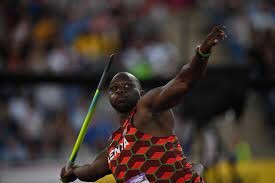
World Athletics have shortened times for most track events as well as increased the distances in field events save for men's 400m and women's 800m where it has eased the the standards compared to the World Athletics Championships held last month in Oregon, United States.
The men's qualifying time for Oregon was 44.90 seconds, but the time has been reviewed to 45.00 sec, while the women's time has been put at 1:59.80 from Oregon's 1:59.50.
The men and women's 20 kilometers race walk and marathon qualifying times have been reduced.
As was the case in 2019 and 2022, athletes will be able to qualify for the World Championships by achieving an entry standard or through their World rankings.
The qualification period for the marathon and 35km race walk opened on December 1, 2021 and ends on May 30, 2023.
For the 10,000m, 20km race walk and combined events, the window runs from January 31, 2022 until July 30, 2023.
For all other disciplines, the qualification period is July 31, 2022 to July 30, 2023.
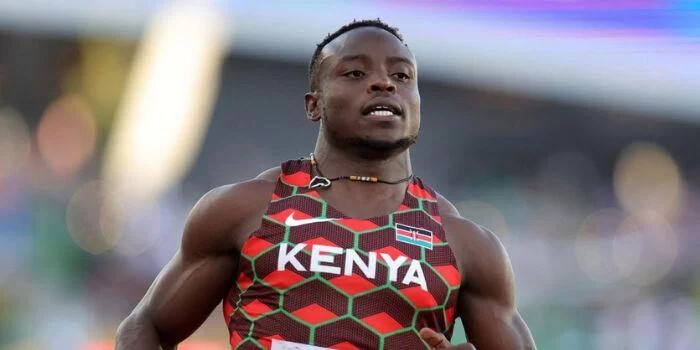
Athletics Kenya head coach Julius Kirwa, Africa, Commonwealth Games 100m champion Ferdinand Omanyala and Commonwealth Games javelin bronze medalist Julius Yego said that it will be a tall order to achieve some of the standards set.
"For instance, the 51.00sec set in women's 400m will be achieved by a handful of athletes. Africa will be most hit," said Kirwa, adding that women will be the most affected.
Kirwa noted that only 34 women have achieved that time in 400m this year including one from Africa, Kenya's Mary Moraa, who posted 50.84 sec in June, which is outside the qualifying period.
"I don't know the logic of the times and distances set but they will have to reconsider them," explained Kirwa pointing out that it's only Edward Zakayo who meets the 10,000m time of 27:10.00.
Kirwa said not even Daniel Simiu and Kibiwott Kandie who returned personal best times of 27:12.26 and 27:20.34 to settle for silver and bronze at the Commonwealth Games attained that time.
"No athlete attained that time even at the World Athletics Championships in Oregon," said Kirwa. "It will simply discourage many athletes and that isn't growing the sport. It will continue to push many to road racing."
Omanyala said the bar is a bit too far for some athletes to meet.
"This year, we have only 25 going under 10 seconds and 11 are Americans. That means the rest of world has to put in the work," said Omanyala, who hopes to attain the set standards in the coming races.
"That means that Athletics Kenya has to put in more electronic races for our athletes to have a chance of qualifying," explained Omanyala.
Yego noted that the move by World Athletics might have been informed by many athletes around the globe having beaten that distance over the last few years in javelin.
"Most of them are coming outside Europe unlike before," said Yego, adding that it now calls for serious training program and many pre competitions.
"Africa will be the most disadvantaged because few athletes get the chance to compete in many events," explained Yego.
World Athletics has offered defending world champions wild card entry, as will the winners of the 2022 Diamond League, World Race Walking Tour and World Combined Events Tour.
The leading hammer performers on the Continental Tour will get wild cards but this is all subject to selection by the athlete's national federation.
Area champions in selected disciplines and subject to certain conditions, top-five finishers at Platinum Label marathons during the qualification period and winners of Gold Label marathons held in 2023 shall also be considered as having achieved the entry standard.
The number of athletes in some events has been adjusted, compared to 2022. Most noticeable is in the field events, where the number has been increased from 32 to 36.
The mile – both in-stadium and road mile – will now be a qualifying event for the 1500m, while performances achieved on the road in the 5km and 10km will be eligible for qualification in the 5,000m and 10,000m, respectively.
In addition, the top eight athletes in the world cross country rankings not otherwise qualified through other pathways will be considered qualified for the 10,000m.
(08/23/2022) ⚡AMPby Ayumba Ayodi
World Athletics Championships Budapest 23
From August 19-27, 2023, Budapest will host the world's third largest sporting event, the World Athletics Championships. It is the largest sporting event in the history of Hungary, attended by athletes from more than 200 countries, whose news will reach more than one billion people. Athletics is the foundation of all sports. It represents strength, speed, dexterity and endurance, the...
more...Fit-again Peres Jepchirchir to debut at Great North Run
Olympic marathon champion Peres Jepchirchir will make her return from injury when she debuts at the Great North Run Half Marathon on September 11 in England.
Jepchirchir, who resumed training three weeks ago, said the pain from the hip injury that locked her out of the World Athletics Championships in July in Oregon, United States, had eased.
“I feel much better now with the pain having subsided. My doctor advised me to return to training gradually and all is well as for now,” said Jepchirchir, ahead of the race that will start at Newcastle upon Tyne before ending at South Shields.
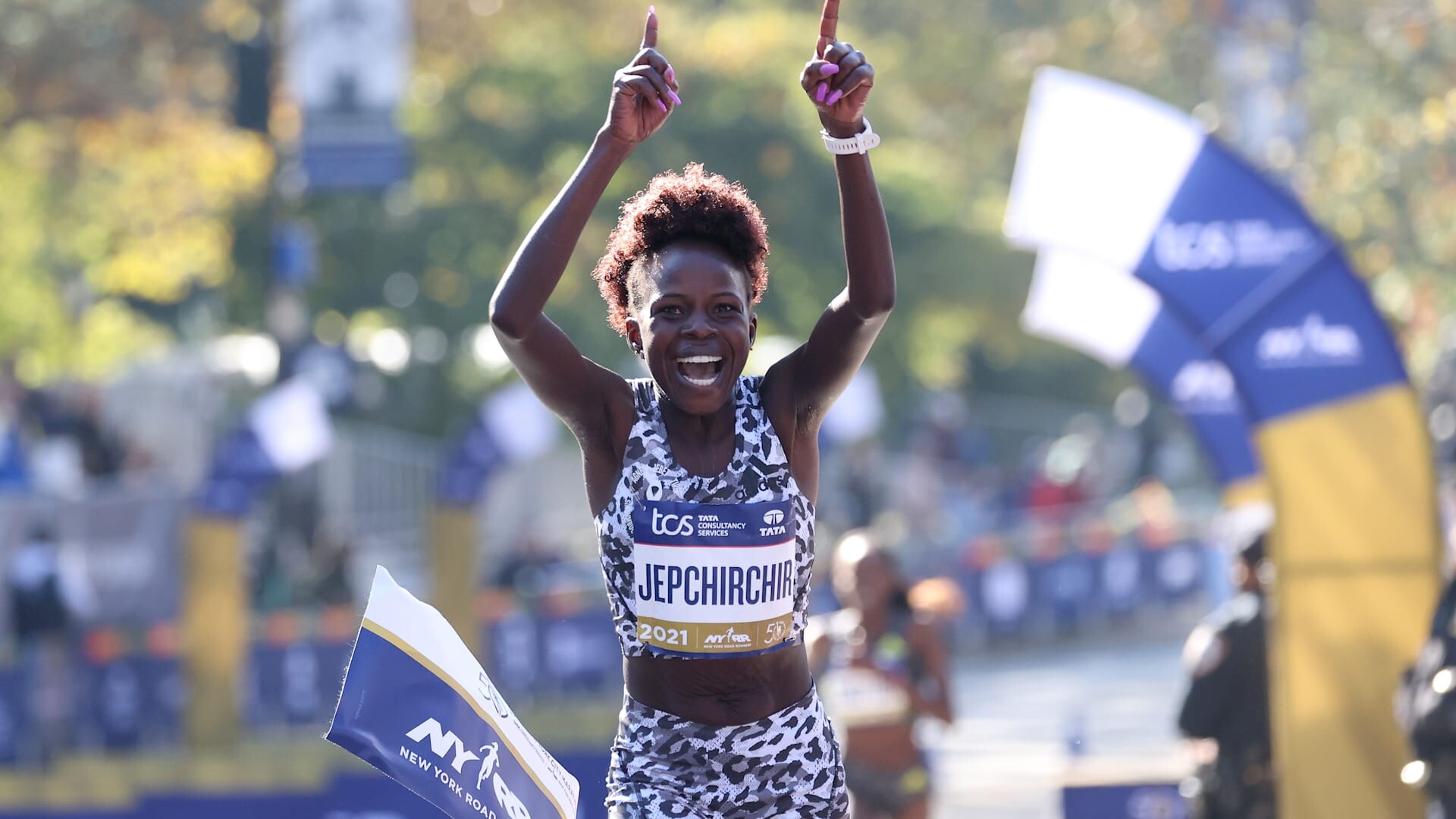
Jepchirchir was a late inclusion in the women’s marathon team for the World Athletics Championships, but withdrew days before the start of the event on July 15 with the advice from Team Kenya physician Victor Bargoria.
“It was disappointing, but I would rather not aggravate the injury since we still have another world event next year before my Olympic title defence at the 2024 Paris Summer Games,” said Jepchirchir, who hopes to use the Great North Run as part of her preparations for her New York City Marathon title defense on November 6 this year.

Judith Jeptum went on to claim silver for Kenya in Oregon, clocking a personal best of two hours, 18 minutes and 20 seconds, as Ethiopian Gotytom Gebreslase won the race in a Championship Record time of 2:18:11.
Another Kenyan Angela Tanui settled sixth in 2:22:15 as defending champion Ruth Chepngétich pulled out during the race with stomach problems.
Jepchirchir became the second Kenyan woman to win the Olympic title when she swept to victory in the streets of Sapporo, Japan in 2:27:20 seconds on August 7, 2021.
Kenyan women have won the last eight editions of the Great North Run with Hellen Obiri claiming victory last year in one hour, 07 minutes and 42 seconds.
Women’s world marathon record holder Brigid Kosgei holds the Great North Run course record with her victory of 1:04:28 in 2019.
The 2020 event was canceled due to Covid-19.
(08/23/2022) ⚡AMPby Ayumba Ayodi
Great North Run
Great North Run founder Brendan Foster believes Britain is ready to welcome the world with open arms after the launch of the event's most ambitious plan to date. The Great World Run campaign seeks to recruit one runner from every country in the United Nations – 193 in total – to take part in the iconic half marathon in...
more...Three ways to loosen your piriformis for your best performance
If you sit in an office chair all day, you probably have tight hips, a problem that affects many runners. Tight hips may lead to pain and tension in your piriformis muscle, which can affect both your enjoyment of your run and the quality of your workout. (It may even lead to more serious injury.) Here are some ways to loosen up the area and activate your piriformis muscle, which can be done both before and after your run.
The piriformis is a muscle in the gluteal area which lies deep in the gluteus maximus. When it comes to running, the piriformis muscle carries the large responsibility of stabilizing the hip joint and moving the thigh in various directions.
1.- The modified runner’s lunge
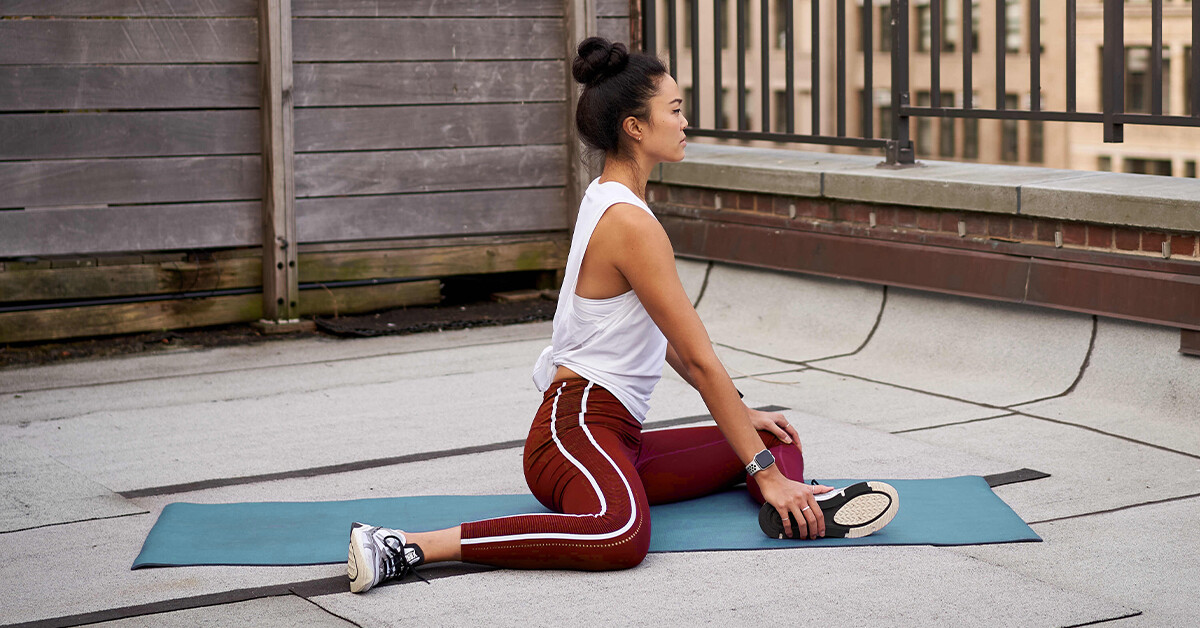
This exercise is called a crescent lunge, which provides a deeper stretch to the hips, glutes and thighs. You can do it from standing or go into it from one knee.
Start by bringing your right leg into the air, drawing it in through your centre of gravity and plant your foot between your hands. Make sure your right knee is not going past your ankle. Allow your back left knee to drop to the ground, resting the top of your left foot on the ground.
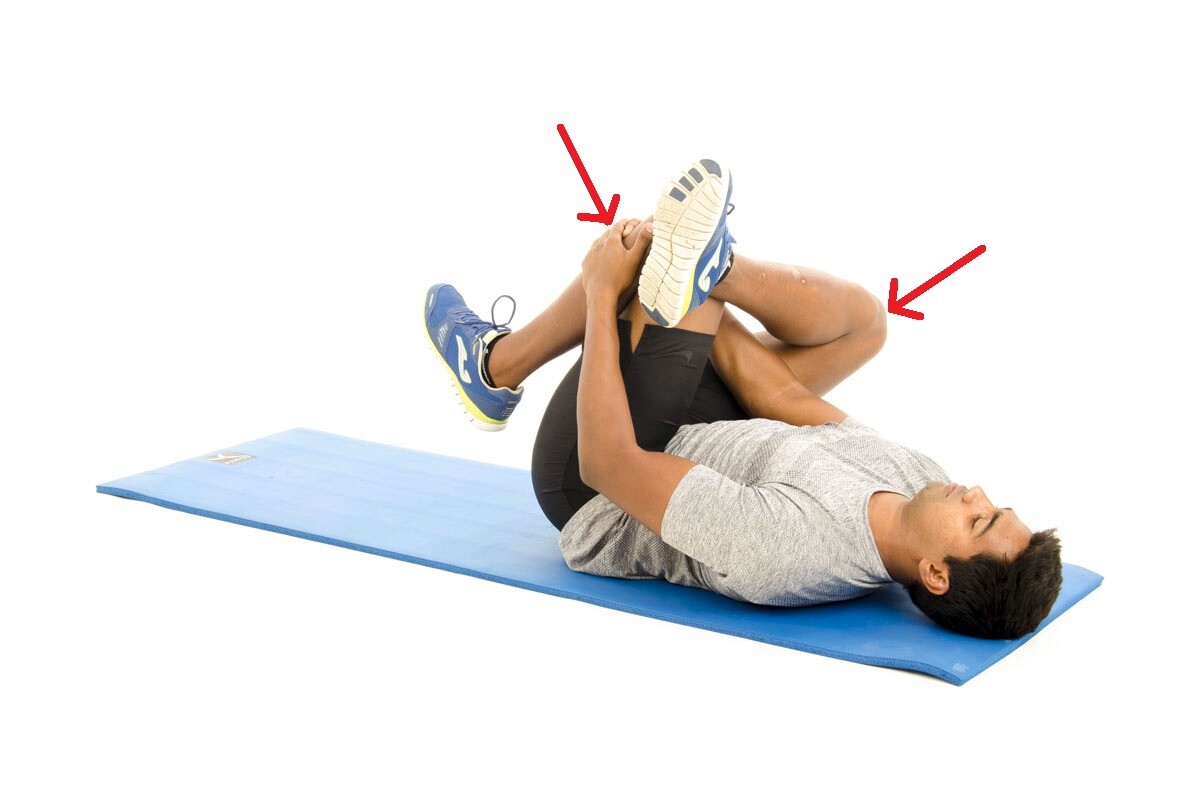
Keep your core engaged and body upright. Push into your left hip, with both hips pointing straight ahead. You should feel the stretch at the top of your hips. (Do both sides.)
2.- 90/90
The 90/90 stretch is a staple for improving your hip mobility. During this movement, you’ll rotate one hip externally and the other hip internally, creating two 90-degree angles with your legs.
Sit on the floor and bend one leg in front of your body with your hip rotated outward. Position it so your lower leg and knee are resting on the ground, and your ankle should be at ease, with your foot pointing straight ahead. Position your other leg beside you, with your hip rotated inward and your shin and ankle on the ground.
To enhance this stretch, ensure your back knee is in line with your hip, and your ankle should be neutral. Keep your back straight and resist the urge to bend to one side. Think about sitting into both hips equally and easing the lifted hip straight down toward the floor.
Hold for 20 to 30 seconds on each side.
3.- Supine piriformis stretch
To begin this stretch, lie down and bend your knees upward, then cross one leg over the other, bending it upward toward your chest.
Grab your knee with one hand and your ankle with the other, then pull the bent leg across your body until your glutes are pulled tight.
Hold this stretch for 30 seconds, then release.
(08/23/2022) ⚡AMPby Marley Dickinson
Kilian Jornet and NNormal launch their first trail shoe
Kilian Jornet calls the Kjerag "a shoe that can be used for everything from a VK to a 100-mile race”
The Kjerag [pronounced: sche-rak], a trail running shoe and the first product launched by ultrarunning phenom Killan Jornet’s brand NNormal. The Kjerag is named for a 1,100-metre-high mountain in Norway, which can be conquered by running up challenging trails or tackled via some moderate hiking.
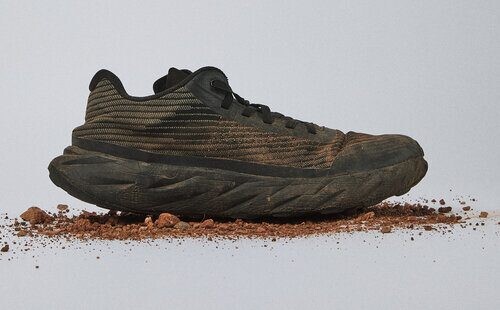
The made-for-everyone versatility of the mountain inspired the name of the shoe, touted as being made for every runner at every level. At 200 g, the Kjerag is a lightweight shoe boasting unique shock absorption and stability, with a stack height of 23.5 mm and a heel-to-toe offset/drop of 6 mm.
The design team at NNormal worked with Jornet to create a shoe that’s made to be versatile enough to switch between road running and scrambling up technical trails.
Jornet explained in a press release on Monday: “Our goal with Kjerag was to find the highest-quality materials, cutting-edge technologies, planet-friendly production processes–the best of everything. Then to bring them together in a shoe that can be used for everything from a VK (vertical kilometer) to a 100-mile race.”
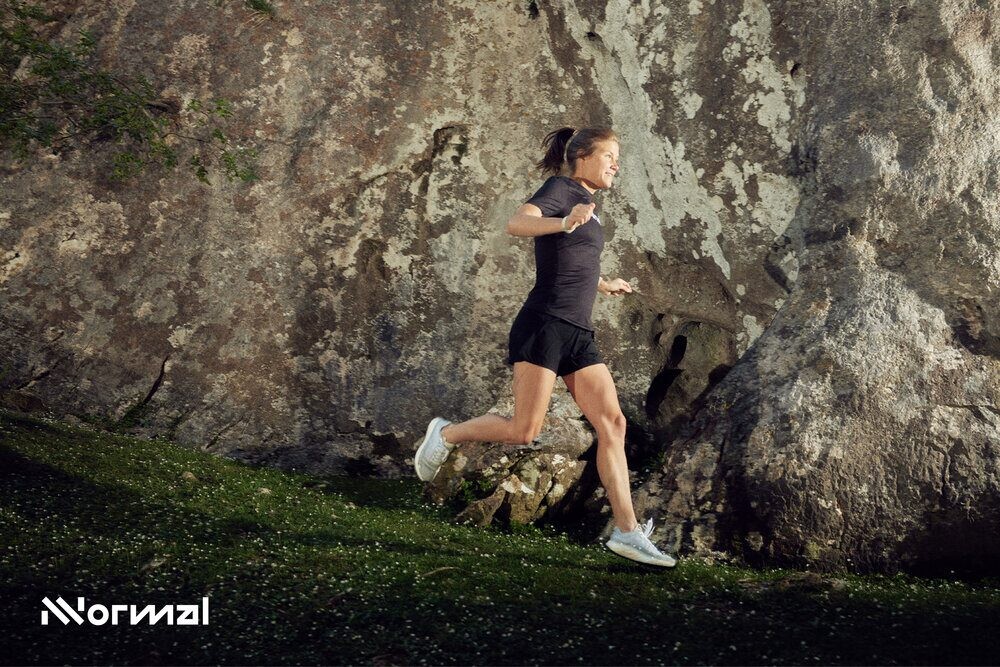
The Kjerag has a generous front volume to provide comfort for runners tackling long races or trekking through hot days. Jornet has been test-driving the shoe throughout the 2022 season. “You forget about them when you run,” he reports. “They follow the natural movement of the foot, which helps prevent muscle fatigue and blisters. The shoes adapt to you.”
The Kjerag has a super-sticky, extra durable Megagrip Vibram sole, with 3.5 mm lugs intended to prioritize speed and allow sensitivity to the terrain. The shoe boasts a “new generation of foam” with its EExpure midsole, sitting in direct contact with your feet via a very thin membrane. “No inner sole means best-possible propulsion and compression, less slippage and fewer blisters,” explains NNormal.
NNormal will be launching a range of apparel and accessories alongside the Kjerag that align with the same principles: lightweight and breathable attire made for both intense and less strenuous activities at every level. All the clothing designs are intended to be both timeless and durable.
A shoe as all-encompassing as the Kjerag is hard to imagine, and it will be interesting to see if regular runners find the trail runner as versatile as NNormal claims it to be.
(08/23/2022) ⚡AMPby Running Magazine


